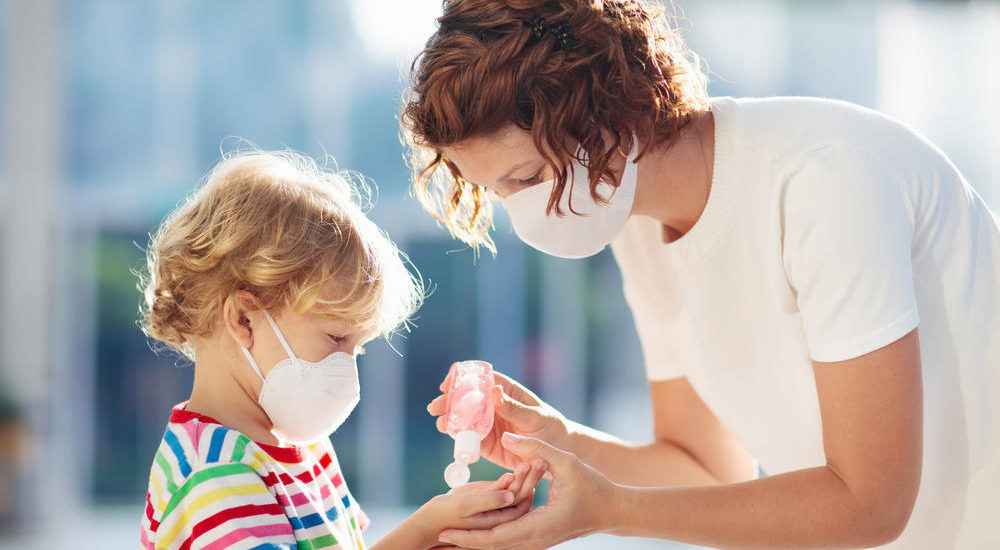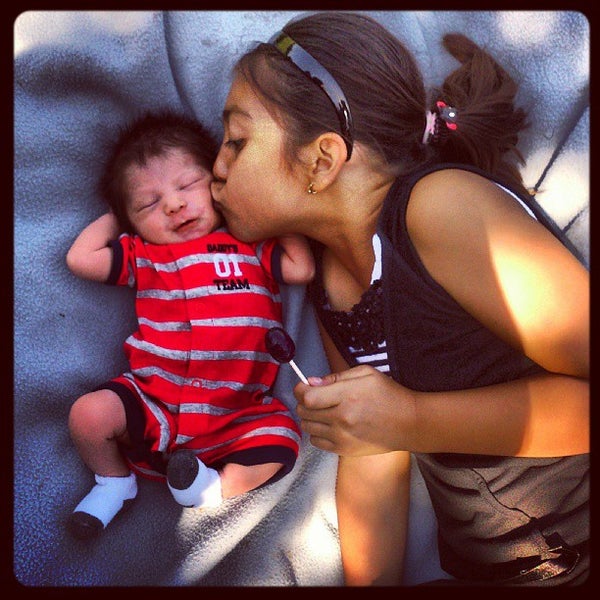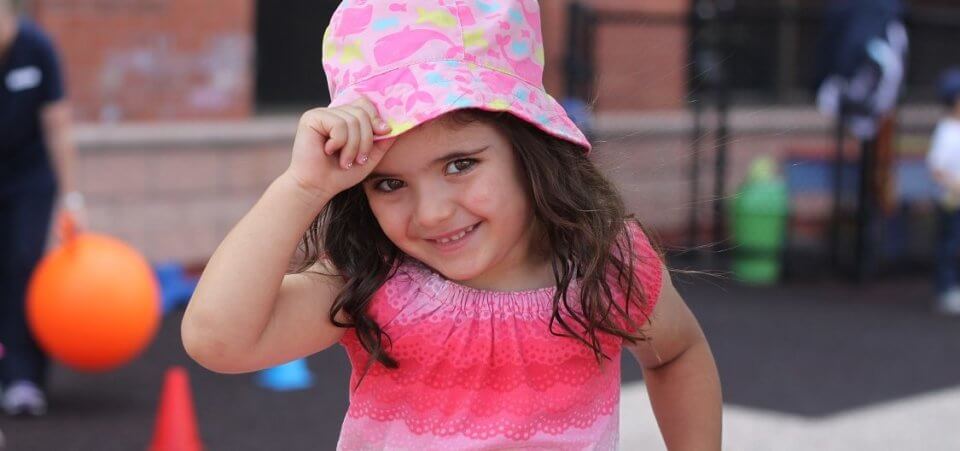Child care modesto ca: Child Care Resource and Referral
| Childtime of Modesto | 3912 Honey Creek, Modesto, CA 95356 | Preschool | |||||||||||||||||||||||||||||||||||||||
| Childtime of Modesto | 2320 Floyd Avenue, Modesto, CA 95354 | Preschool | |||||||||||||||||||||||||||||||||||||||
| A Step Ahead Academic Academy | 920 Ila Way, Modesto, CA 95354 | Center | |||||||||||||||||||||||||||||||||||||||
| A+ Academics Preschool | 1934 G Street, Modesto, CA 95354 | Preschool | |||||||||||||||||||||||||||||||||||||||
| Abundant Life Child Care | 3120 Snyder Avenue, Modesto, CA 95356 | Center | |||||||||||||||||||||||||||||||||||||||
| Alberta Martone Preformal Center | 1413 Poust Road, Modesto, CA 95351 | Center | |||||||||||||||||||||||||||||||||||||||
| Anchors Away Too Learning Center | 4825 Stratos Way Suite A, Modesto, CA 95356 | Center | |||||||||||||||||||||||||||||||||||||||
| Bethel Day Care Center | 2361 Scenic Drive, Modesto, CA 95355 | Preschool | |||||||||||||||||||||||||||||||||||||||
| Big Valley Christian School | 4040 D Tully, Modesto, CA 95350 | Preschool | |||||||||||||||||||||||||||||||||||||||
| Bret Harte Child Development Center | 909 Bret Harte Place, Modesto, CA 95358 | Center | |||||||||||||||||||||||||||||||||||||||
| Burbank Family Learning Center | 1135 Paradise Rd. |
Center | |||||||||||||||||||||||||||||||||||||||
| C. F. Brown Head Start | 1401 Celeste Ave., Modesto, CA 95355 | Preschool | |||||||||||||||||||||||||||||||||||||||
| CCCDS – Stonum Child Development Center | 1336 Stonum Road, Modesto, CA 95351 | Center | |||||||||||||||||||||||||||||||||||||||
| Calvary Temple Christian Preschool | 1601 Coffee Rd, Modesto, CA 95355 | Preschool | |||||||||||||||||||||||||||||||||||||||
| Capistrano Head Start | 400 Capistrano Drive, Modesto, CA 95354 | Preschool | |||||||||||||||||||||||||||||||||||||||
| Centenary Christian Preschool | 1911 Toyon Avenue, Modesto, CA 95350 | Preschool | |||||||||||||||||||||||||||||||||||||||
| Centenary Christian Preschool | 1911 Toyon Ave., Modesto, CA 95350 | Center | |||||||||||||||||||||||||||||||||||||||
| Chrysler Child Development Center | 2818 Conant Avenue, Modesto, CA 95350 | Center | |||||||||||||||||||||||||||||||||||||||
| Chrysler Head Start | 2818 Conant Ave. , Modesto, CA 95350 , Modesto, CA 95350 |
Preschool | |||||||||||||||||||||||||||||||||||||||
| Community Christian Preschool | 1442 Tully Rd, Modesto, CA 95350 | Preschool | |||||||||||||||||||||||||||||||||||||||
| Early Intervention State Preschool Program | 1336 Stonum Ave, Modesto, CA 95351 | Preschool | |||||||||||||||||||||||||||||||||||||||
| El Vista Child Development Center | 450 El Vista Avenue, Modesto, CA 95354 | Center | |||||||||||||||||||||||||||||||||||||||
| Emanuel Lutheran Day Care | 324 College Avenue, Modesto, CA 95350 | Center | |||||||||||||||||||||||||||||||||||||||
| Everett Child Development Centers | 1530 Mt Vernon Dr, Modesto, CA 95350 | Center | |||||||||||||||||||||||||||||||||||||||
| Fairview Elementary | 1937 West Whitmore Avenue, Modesto, CA 95358 | Center | |||||||||||||||||||||||||||||||||||||||
| Franklin Family Learning Center | 905 Byron Lane, Modesto, CA 95351 | Center | |||||||||||||||||||||||||||||||||||||||
| Geneva Presbyterian Small Fry Nursery | 1229 E Fairmont Ave, Modesto, CA 95350 | Center | |||||||||||||||||||||||||||||||||||||||
| Grace Lutheran School | 617 W. orangeburg Ave, Modesto, CA 95350 orangeburg Ave, Modesto, CA 95350 |
Preschool | |||||||||||||||||||||||||||||||||||||||
| Hughes Head Start | 512 North Mcclure Rd, Modesto, CA 95357 | Preschool | |||||||||||||||||||||||||||||||||||||||
| James Marshall Elementary | 515 Sutter Avenue, Modesto, CA 95351 | Center | |||||||||||||||||||||||||||||||||||||||
| John Muir Preformal Center | 1215 Lucerne Ave., Modesto, CA 95350 | Center | |||||||||||||||||||||||||||||||||||||||
| Kairos Child Development Center | 304 E. Coolidge Avenue, Modesto, CA 95354 | Center | |||||||||||||||||||||||||||||||||||||||
| Kirschen Child Development Center | 1900 Kirschen Drive, Modesto, CA 95351 | Center | |||||||||||||||||||||||||||||||||||||||
| Lighthouse Preschool | 913 Floyd Ave., Modesto, CA 95350 | Preschool | |||||||||||||||||||||||||||||||||||||||
| Margaret L. Annear Head Start | 1336 Stonum Road, Modesto, CA 95351 | Preschool | |||||||||||||||||||||||||||||||||||||||
| Marilyn Frakes Child Development | 3920 Blue Bird Drive, Modesto, CA 95397 | Preschool | |||||||||||||||||||||||||||||||||||||||
| Mayris Baddell Child Development Center | 641 Norseman Drive, Modesto, CA 95357 | Center | |||||||||||||||||||||||||||||||||||||||
| Merryhill Country School | 3301 Coffee Road, Modesto, CA 95355 | Preschool | |||||||||||||||||||||||||||||||||||||||
| Merryhill School | 133 East Roseburg Ave, Modesto, CA 95350 | Preschool | |||||||||||||||||||||||||||||||||||||||
| Methodist Tiny Tots | 850 16th Street, Modesto, CA 95354 | Center | |||||||||||||||||||||||||||||||||||||||
| Modesto Christian Preschool | 921 Woodrow Avenue, Modesto, CA 95350 | Preschool | |||||||||||||||||||||||||||||||||||||||
| Modesto KinderCare – CLOSED | 1237 Oakdale Rd. , Modesto, CA 95355 , Modesto, CA 95355 |
Preschool | |||||||||||||||||||||||||||||||||||||||
| Modesto Parent Cooperative Preschool | 1341 College Ave, Modesto, CA 95350 | Preschool | |||||||||||||||||||||||||||||||||||||||
| Montessori School of Modesto | 3501 San Clemente Ave., Modesto, CA 95356 | Preschool | |||||||||||||||||||||||||||||||||||||||
| Muncy Child Development Center | 2410 Janna Avenue, Modesto, CA 95350 | Center | |||||||||||||||||||||||||||||||||||||||
| Muncy Head Start | 2410 Silviare Ave., Modesto, CA 95350 | Preschool | |||||||||||||||||||||||||||||||||||||||
| Noah’s Ark Preschool & Childcare | 1857 Maria Court, Modesto, CA 95354 | Preschool | |||||||||||||||||||||||||||||||||||||||
| Orangeburg Christian School | 313 East Orangeburg Ave, Modesto, CA 95350 | Preschool | |||||||||||||||||||||||||||||||||||||||
| Orville Wright Head Start | 1602 Monterey Street, Modesto, CA 95354 | Preschool | |||||||||||||||||||||||||||||||||||||||
| Parkwood Christian Preschool | 301 Claratina Avenue, Modesto, CA 95356 | Preschool | |||||||||||||||||||||||||||||||||||||||
| Pearson Elementary | 500 Locust, Modesto, CA 95351 | Center | |||||||||||||||||||||||||||||||||||||||
| Perkins Child Development Center – Head Start | 3900 Bluebird Dr, Modesto, CA 95356 | Preschool | |||||||||||||||||||||||||||||||||||||||
| Robertson Road Children’s Center | 1111 Hammond Avenue, Modesto, CA 95351 | Center | |||||||||||||||||||||||||||||||||||||||
| Rumble Road KinderCare – CLOSED | 2825 West Rumble Rd. , Modesto, CA 95350 , Modesto, CA 95350 |
Preschool | |||||||||||||||||||||||||||||||||||||||
| Shackelford Elementary | 100 School Avenue, Modesto, CA 95351 | Center | |||||||||||||||||||||||||||||||||||||||
| Shackelford Family Learning Center | 116 El Paso Avenue, Modesto, CA 95351 | Center | |||||||||||||||||||||||||||||||||||||||
| Small World Preschool | 1024-6th St, Modesto, CA 95354 | Preschool | |||||||||||||||||||||||||||||||||||||||
| Sonshine Children’s Center | 3936 Dale Road, Modesto, CA 95356 | Center | |||||||||||||||||||||||||||||||||||||||
| St Pauls Nursery School | 1528 Oakdale Road, Modesto, CA 95355 | Center | |||||||||||||||||||||||||||||||||||||||
| St. Peter Lutheran Church & School | 3461 Merle Ave., Modesto, CA 95355 | Center | |||||||||||||||||||||||||||||||||||||||
| St. Stanislaus Preschool | 1416 Maze Blvd, Modesto, CA 95351 | Preschool | |||||||||||||||||||||||||||||||||||||||
| Sylvan Head Start | 2908 Coffee Road, Modesto, CA 95350 | Preschool | |||||||||||||||||||||||||||||||||||||||
| The Salvation Army Child Development Center | 601 I Street, Modesto, CA 95354 | Center | |||||||||||||||||||||||||||||||||||||||
| Treehouse Christian Preschool | 921 Woodrow Avenue, Modesto, CA 95355 | Preschool | |||||||||||||||||||||||||||||||||||||||
| Trinity Presbyterian Nursery School | 1600 Carver Rd, Modesto, CA 95350 | Center | |||||||||||||||||||||||||||||||||||||||
| Tuolumne Christian Day Care | 133 Tuolumne Blvd, Modesto, CA 95354 | Center | |||||||||||||||||||||||||||||||||||||||
| Tuolumne Head Start | 707 Herndon Rd, Modesto, CA 95351 | Preschool | |||||||||||||||||||||||||||||||||||||||
| Westport State Preschool | 5218 So Carpenter Rd, Modesto, CA 95351 | Preschool | |||||||||||||||||||||||||||||||||||||||
| William Garrison Elementary | 1811 Teresa Street, Modesto, CA 95350 | Center | |||||||||||||||||||||||||||||||||||||||
| Wilson Elementary | 201 Wilson Ave, Modesto, CA 95351 | Center | |||||||||||||||||||||||||||||||||||||||
| Wright Start Child Development Center | 801 Empire Avenue, Modesto, CA 95354 | Center | |||||||||||||||||||||||||||||||||||||||
Y.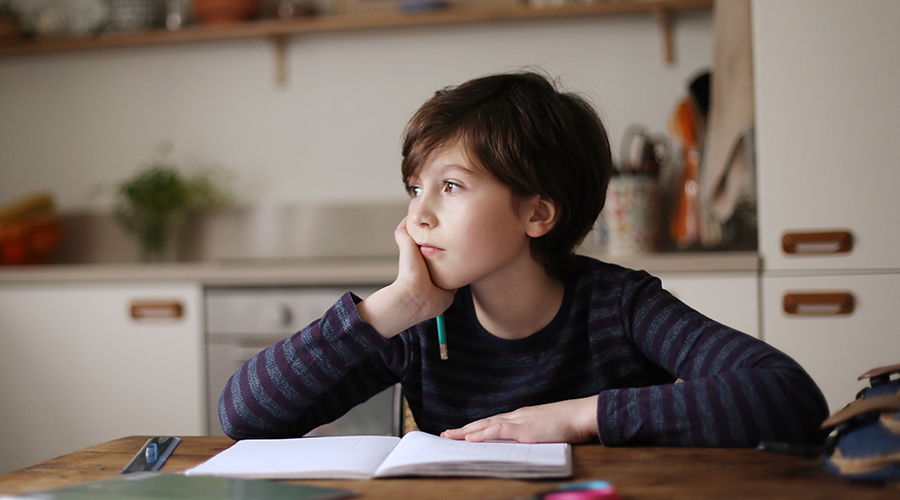 C.C.D. M.J.C. Campus Child Care Center C.C.D. M.J.C. Campus Child Care Center |
2201 Blue Gum, Modesto, CA 95358 | Center | |||||||||||||||||||||||||||||||||||||||
modesto childcare – craigslist
favorite this post
ADA’S Tiny Town Daycare
(Ceres/Modesto)
pic
hide this posting
restore
restore this posting
favorite this post
Family Daycare
(Tracy CA)
hide this posting
restore
restore this posting
favorite this post
24/7 ChildCare (Modesto-Since 2001)>New Openings Available
(Modesto)
hide this posting
restore
restore this posting
favorite this post
Nina’s Preschool & Daycare
(Modesto)
hide this posting
restore
restore this posting
favorite this post
Nina’s Preschool and Daycare
(Modesto)
pic
hide this posting
restore
restore this posting
favorite this post
Nana Nina’s Preschool & Daycare
(Modesto)
pic
hide this posting
restore
restore this posting
favorite this post
Maryam’s home family daycare
(Modesto)
hide this posting
restore
restore this posting
favorite this post
24-hr childcare
(Turlock)
hide this posting
restore
restore this posting
favorite this post
german shepherd female and male
(Modesto)
pic
hide this posting
restore
restore this posting
favorite this post
Preschool Openings
(Modesto)
hide this posting
restore
restore this posting
favorite this post
Preschool Openings
(Modesto)
hide this posting
restore
restore this posting
favorite this post
ADA’S Tiny Town Daycare
(Ceres/Modesto)
pic
hide this posting
restore
restore this posting
favorite this post
ADA’S Tiny Town Daycare
(Ceres/Modesto)
pic
hide this posting
restore
restore this posting
favorite this post
Sally’s Precious Ones Daycare
(Ceres Area)
hide this posting
restore
restore this posting
favorite this post
24-hr childcare
(Turlock)
hide this posting
restore
restore this posting
favorite this post
Daycare & Preschool Openings!
pic
hide this posting
restore
restore this posting
favorite this post
License family child care
(Turlock)
hide this posting
restore
restore this posting
favorite this post
Preschool Openings
(Modesto)
hide this posting
restore
restore this posting
favorite this post
Preschool Openings
(Modesto)
hide this posting
restore
restore this posting
favorite this post
Preschool Openings
(Modesto)
hide this posting
restore
restore this posting
favorite this post
Pacheco licensed Daycare
(Modesto)
pic
hide this posting
restore
restore this posting
favorite this post
Affordable childcare offer
(Modesto)
hide this posting
restore
restore this posting
favorite this post
Anna’s Home Daycare
(Ceres, Ca)
pic
hide this posting
restore
restore this posting
favorite this post
24-hr childcare
(Turlock)
hide this posting
restore
restore this posting
favorite this post
24-hr childcare
(Turlock)
hide this posting
restore
restore this posting
favorite this post
Daycare openings Modesto
(Modesto)
pic
hide this posting
restore
restore this posting
favorite this post
3 openings @ Nina’s PreSchool & DayCare
(Modesto)
pic
hide this posting
restore
restore this posting
favorite this post
24-hr childcare
(Turlock)
hide this posting
restore
restore this posting
favorite this post
Daycare & Preschool Openings!
(Modesto)
pic
hide this posting
restore
restore this posting
more from nearby areas
–
change search area
favorite this post
💥🧡 Little Pumkins Daycare WildHawk / Vineyard
(sac > Sacramento)
hide this posting
restore
restore this posting
favorite this post
💥🧡 Little Pumkins Daycare WildHawk / Vineyard
(sac > Sacramento)
hide this posting
restore
restore this posting
favorite this post
💥🧡 Little Pumkins Daycare WildHawk / Vineyard
(sac > Sacramento)
hide this posting
restore
restore this posting
favorite this post
💥🧡 Little Pumkins Daycare WildHawk / Vineyard
(sac > Sacramento)
hide this posting
restore
restore this posting
favorite this post
Child care
(sfo > Redwood City)
hide this posting
restore
restore this posting
favorite this post
Maria’s Child Daycare
(sfo > hayward / castro valley)
pic
hide this posting
restore
restore this posting
favorite this post
Drop in care
(sfo > Castro Valley)
hide this posting
restore
restore this posting
favorite this post
$160.
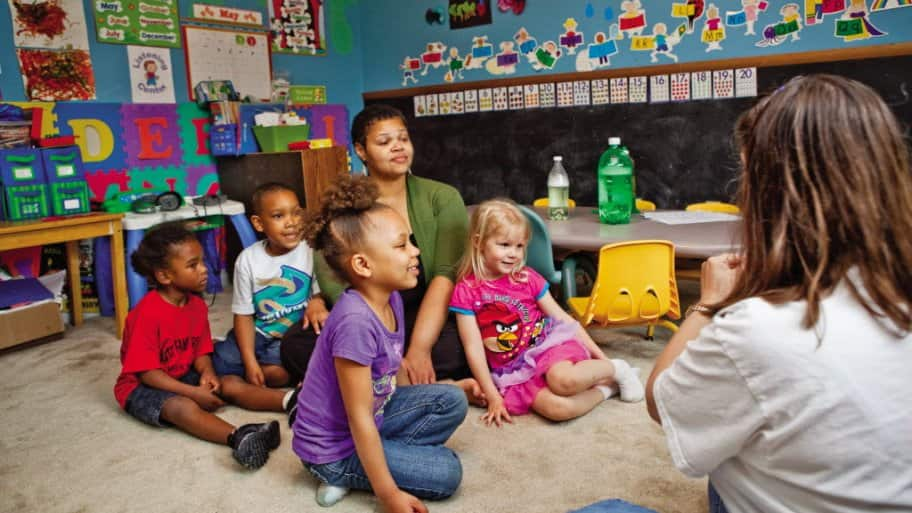
(sac > Sacramento)
pic
hide this posting
restore
restore this posting
favorite this post
One opening for two year old.
(sfo > santa clara)
pic
hide this posting
restore
restore this posting
favorite this post
*******Loving Professional Childcare – 1 to1 Attention!********
(sac > Naomas, Sacramento)
hide this posting
restore
restore this posting
favorite this post
*******Loving Professional Childcare – 1 to1 Attention!********
(sac > Naomas, Sacramento)
hide this posting
restore
restore this posting
favorite this post
*******Loving Professional Childcare – 1 to1 Attention!********
(sac > Naomas, Sacramento)
hide this posting
restore
restore this posting
favorite this post
2006026*******Loving Professional Childcare – 1 to1 Attention!********
(sac > Naomas, Sacramento)
hide this posting
restore
restore this posting
favorite this post
*******Loving Professional Childcare – 1 to1 Attention!********
(sac > Naomas, Sacramento)
hide this posting
restore
restore this posting
favorite this post
Infants Enrolling Now!!!
(sfo > santa clara)
pic
hide this posting
restore
restore this posting
favorite this post
Childcare in Vallejo has Opening
(sfo > vallejo / benicia)
hide this posting
restore
restore this posting
favorite this post
*******Loving Professional Childcare – 1 to1 Attention!********
(sac > Naomas, Sacramento)
hide this posting
restore
restore this posting
favorite this post
*******Loving Professional Childcare – 1 to1 Attention!********
(sac > Naomas, Sacramento)
hide this posting
restore
restore this posting
favorite this post
Open enrollment! Infants & Toddlers
(sac > Del Paso Heights, Sacramento)
pic
hide this posting
restore
restore this posting
favorite this post
Happy kids family daycare.
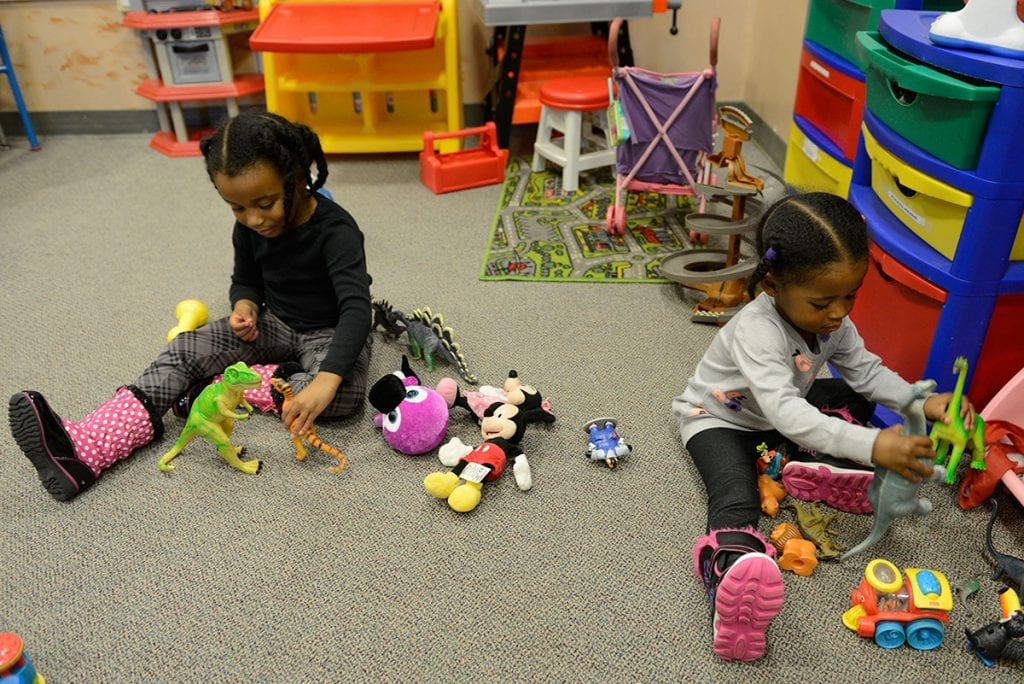
(sfo > foster city)
pic
hide this posting
restore
restore this posting
favorite this post
Maria’s Child Daycare
(sfo > hayward / castro valley)
pic
hide this posting
restore
restore this posting
favorite this post
Santa Clara Little Learners has openings!!!
(sfo > santa clara)
pic
hide this posting
restore
restore this posting
favorite this post
Non-violent parenting author doing childcare
(sfo > inner richmond)
hide this posting
restore
restore this posting
favorite this post
Maria’s Child Daycare
(sfo > hayward / castro valley)
pic
hide this posting
restore
restore this posting
favorite this post
Home Based Day Care
(sfo > santa clara)
hide this posting
restore
restore this posting
favorite this post
Home Day Care
(sfo > santa clara)
hide this posting
restore
restore this posting
favorite this post
daydreamchildcare.

(sfo > santa clara)
hide this posting
restore
restore this posting
favorite this post
daydreamchildcare.com
(sfo > santa clara)
hide this posting
restore
restore this posting
favorite this post
Daycare/Preschool-Curriculum (Early Learning) – Montessori Method
(sfo > campbell)
hide this posting
restore
restore this posting
favorite this post
Affordable Childcare Center (CCAP Accepted)
(sfo > santa clara)
hide this posting
restore
restore this posting
favorite this post
daydreamchildcare.
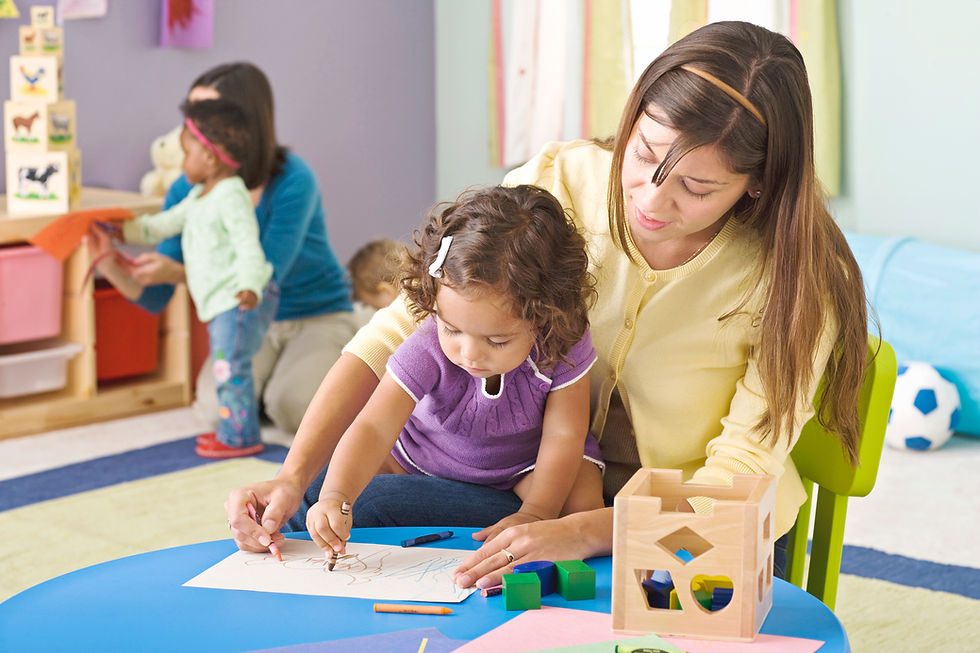
(sfo > santa clara)
hide this posting
restore
restore this posting
favorite this post
Daycare/Preschool-Curriculum (Early Learning) – Montessori Method
(sfo > campbell)
hide this posting
restore
restore this posting
favorite this post
9Fruits Bilingual Family Daycare
(sfo > sunnyvale)
pic
hide this posting
restore
restore this posting
favorite this post
9Fruits Bilingual Family Daycare
(sfo > sunnyvale)
pic
hide this posting
restore
restore this posting
favorite this post
NORTH SAC CHILDCARE Immediate Preschool Opening
(sac > Natomas / North Sacramento – exit Norwood to Bell above I-80)
pic
hide this posting
restore
restore this posting
favorite this post
NORTH SAC CHILDCARE Immediate Preschool Opening
(sac > Natomas / North Sacramento – exit Norwood to Bell above I-80)
pic
hide this posting
restore
restore this posting
favorite this post
Maria’s Child Daycare
(sfo > hayward / castro valley)
pic
hide this posting
restore
restore this posting
favorite this post
Family Daycare fremont
(sfo > fremont / union city / newark)
pic
hide this posting
restore
restore this posting
favorite this post
Casita Family Daycare, Now Enrolling!
(sfo > santa clara)
hide this posting
restore
restore this posting
favorite this post
**I have a child development major&am now offering babysitting!
(sac > Sacramento)
hide this posting
restore
restore this posting
favorite this post
Sunny Bunny Daycare
(sac > Antelope)
pic
hide this posting
restore
restore this posting
favorite this post
Sunny Bunny Daycare
(sac > Antelope)
pic
hide this posting
restore
restore this posting
favorite this post
NEW ENROLLMENTS, AGES 3MONTHS TO 5YRS
(sac > Citrus heights)
hide this posting
restore
restore this posting
favorite this post
NEW ENROLLMENTS, AGES 3MONTHS TO 5YRS
(sac > Citrus heights)
hide this posting
restore
restore this posting
favorite this post
OPENINGS AVAILABLE FOR CHILD CARE
(sac > Citrus heights)
hide this posting
restore
restore this posting
favorite this post
OPENINGS AVAILABLE FOR CHILD CARE
(sac > Citrus heights)
hide this posting
restore
restore this posting
favorite this post
NEW OPENINGS AVAILABLE 😊
(sac > Citrus heights)
hide this posting
restore
restore this posting
favorite this post
Daycare Antelope Excellent rate!
(sac > Antelope Roseville North Highlands Elverta)
pic
hide this posting
restore
restore this posting
favorite this post
Maria’s Child Daycare
(sfo > hayward / castro valley)
pic
hide this posting
restore
restore this posting
favorite this post
Looking for Care? We offer free meals
(sfo > Santa Rosa)
pic
hide this posting
restore
restore this posting
favorite this post
Santa Clara Little Learners has openings!!!
(sfo > santa clara)
pic
hide this posting
restore
restore this posting
favorite this post
Maria’s Child Daycare
(sfo > hayward / castro valley)
pic
hide this posting
restore
restore this posting
favorite this post
Montessori educated helper wanted
(sfo > menlo park)
pic
hide this posting
restore
restore this posting
favorite this post
One opening for two year old.
(sfo > santa clara)
pic
hide this posting
restore
restore this posting
favorite this post
Find your childcare match!
(sfo > marina / cow hollow)
pic
hide this posting
restore
restore this posting
favorite this post
Find your childcare match!
(sfo > noe valley)
pic
hide this posting
restore
restore this posting
favorite this post
Get paid to provide childcare in your own neighborhood!
(sfo > marina / cow hollow)
pic
hide this posting
restore
restore this posting
favorite this post
HOME PRESCHOOL AND DAYCARE
(sac > ROSEVILLE, ANTELOPE)
pic
hide this posting
restore
restore this posting
favorite this post
Get paid to provide childcare in your own neighborhood!
(sfo > noe valley)
pic
hide this posting
restore
restore this posting
favorite this post
Childcare Available-off 105th ave close to Oakland Airport
(sfo > oakland east)
hide this posting
restore
restore this posting
favorite this post
Educational Childcare Available-off 105th ave close to Oakland Airport
(sfo > oakland east)
hide this posting
restore
restore this posting
favorite this post
Attention Graveyard workers Childcare close to Oakland Airport
(sfo > oakland east)
hide this posting
restore
restore this posting
favorite this post
Find your childcare match!
(sfo > ingleside / SFSU / CCSF)
pic
hide this posting
restore
restore this posting
favorite this post
Get paid to provide childcare in your own neighborhood!
(sfo > ingleside / SFSU / CCSF)
pic
hide this posting
restore
restore this posting
favorite this post
Find your childcare match!
(sfo > inner sunset / UCSF)
pic
hide this posting
restore
restore this posting
favorite this post
Get paid to provide childcare in your own neighborhood!
(sfo > inner sunset / UCSF)
pic
hide this posting
restore
restore this posting
favorite this post
Infants Enrolling Now!!!
(sfo > santa clara)
pic
hide this posting
restore
restore this posting
favorite this post
Delightful Day Child Care
(stk > Weston Ranch)
pic
hide this posting
restore
restore this posting
favorite this post
🌺**Family Child Care **
(sfo > south san francisco)
pic
hide this posting
restore
restore this posting
favorite this post
Santa Clara Little Learners has openings!!!
(sfo > santa clara)
pic
hide this posting
restore
restore this posting
favorite this post
** Daycare for Infant/Toddler **
(sfo > south san francisco)
pic
hide this posting
restore
restore this posting
favorite this post
🌺Licensed child daycare
(sfo > south san francisco)
pic
hide this posting
restore
restore this posting
favorite this post
Childhood Montessori-Individual Attention Child care
(sfo > san leandro)
hide this posting
restore
restore this posting
favorite this post
Licensed family childcare has openings in Santa Clara!!
(sfo > santa clara)
pic
hide this posting
restore
restore this posting
favorite this post
live-in nanny/caregiver
(sfo > San Francisco)
pic
hide this posting
restore
restore this posting
favorite this post
Brentwood Childcare 👶
(sfo > brentwood / oakley)
hide this posting
restore
restore this posting
favorite this post
* ONE INFANT OPENING * UNBEATABLE RATES*
(sac > Citrus Heights)
hide this posting
restore
restore this posting
favorite this post
Find your childcare match!
(sfo > cole valley / ashbury hts)
pic
hide this posting
restore
restore this posting
favorite this post
Childhood Montessori Program: TK & PreSchool.

(sfo > oakland lake merritt / grand)
hide this posting
restore
restore this posting
favorite this post
Get paid to provide childcare in your own neighborhood!
(sfo > cole valley / ashbury hts)
pic
hide this posting
restore
restore this posting
favorite this post
One opening for two year old.
(sfo > santa clara)
pic
hide this posting
restore
restore this posting
favorite this post
Happy Kidz Montessori Family Daycare (WWW.HAPPYKIDZDAYCARE.COM)
(sfo > fremont / union city / newark)
pic
hide this posting
restore
restore this posting
favorite this post
Happy Kidz Montessori Family Daycare (WWW.

(sfo > fremont / union city / newark)
pic
hide this posting
restore
restore this posting
favorite this post
Happy Kidz Montessori Family Daycare (WWW.HAPPYKIDZDAYCARE.COM)
(sfo > fremont / union city / newark)
pic
hide this posting
restore
restore this posting
favorite this post
Happy Kidz Montessori Family Daycare (WWW.

(sfo > fremont / union city / newark)
pic
hide this posting
restore
restore this posting
favorite this post
Licensed family childcare has openings in Santa Clara!!
(sfo > santa clara)
pic
hide this posting
restore
restore this posting
favorite this post
ABCD Learn and Play , Day care , Preschool
(sfo > concord / pleasant hill / martinez)
pic
hide this posting
restore
restore this posting
favorite this post
Home-based daycare in Santa Clara – Openings for enrollment
(sfo > santa clara)
pic
hide this posting
restore
restore this posting
favorite this post
Childhood Montessori-Individual Attention Chilcare
(sfo > oakland north / temescal)
hide this posting
restore
restore this posting
favorite this post
Nanny childcare or elderly care
(sfo > Menlo park)
hide this posting
restore
restore this posting
favorite this post
Tracy Licensed family daycare with openings
(stk)
pic
hide this posting
restore
restore this posting
favorite this post
Tracy Licensed family daycare with openings
(stk)
pic
hide this posting
restore
restore this posting
favorite this post
Tracy Licensed family daycare with openings
(stk)
pic
hide this posting
restore
restore this posting
favorite this post
Professional licensed daycare accepting days/overnights
(stk)
pic
hide this posting
restore
restore this posting
favorite this post
Licensed family daycare with openings
(stk)
pic
hide this posting
restore
restore this posting
favorite this post
Professional licensed daycare accepting days/overnights
(stk)
pic
hide this posting
restore
restore this posting
favorite this post
Licensed family daycare with openings
(stk)
pic
hide this posting
restore
restore this posting
favorite this post
Special Needs Homeschooling/Child Care
(mtb > Marina)
hide this posting
restore
restore this posting
favorite this post
$100/wk! After School/Evening Child Care.
(mtb > Monterey Peninsula)
hide this posting
restore
restore this posting
favorite this post
$300 Off First Month Preschool Daycare in Greenhaven Area
(sac > Pocket/Greenhaven)
pic
hide this posting
restore
restore this posting
favorite this post
*** AFFORDABLE, SAFE, AND LOVING CHILDCARE ***
(sac > South Natomas)
hide this posting
restore
restore this posting
favorite this post
*** AFFORDABLE, SAFE, AND LOVING CHILDCARE ***
(sac > South Natomas)
hide this posting
restore
restore this posting
favorite this post
**LIC.
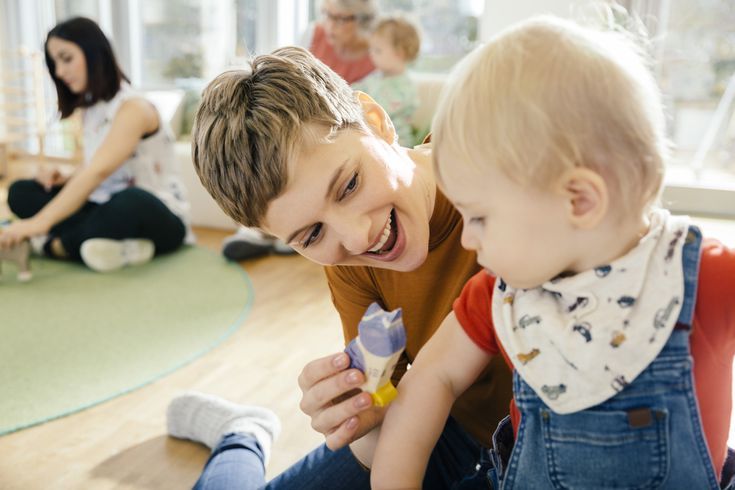
(sac > SOUTH NATOMAS)
hide this posting
restore
restore this posting
favorite this post
**LIC. CHILDCARE **
(sac > SOUTH NATOMAS)
hide this posting
restore
restore this posting
favorite this post
💥🧡 Little Pumkins Daycare WildHawk / Vineyard
(sac > Sacramento)
hide this posting
restore
restore this posting
favorite this post
💥🧡 Little Pumkins Daycare WildHawk / Vineyard
(sac > Sacramento)
hide this posting
restore
restore this posting
favorite this post
💥🧡 Little Pumkins Daycare WildHawk / Vineyard
(sac > Sacramento)
hide this posting
restore
restore this posting
favorite this post
💥🧡 Little Pumkins Daycare WildHawk / Vineyard
(sac > Sacramento)
hide this posting
restore
restore this posting
favorite this post
💥🧡 Little Pumkins Daycare WildHawk / Vineyard
(sac > Sacramento)
hide this posting
restore
restore this posting
favorite this post
Maria’s Child Daycare
(sfo > hayward / castro valley)
pic
hide this posting
restore
restore this posting
favorite this post
💥🧡 Little Pumkins Daycare WildHawk / Vineyard
(sac > Sacramento)
hide this posting
restore
restore this posting
favorite this post
💥🧡 Little Pumkins Daycare WildHawk / Vineyard
(sac > Sacramento)
hide this posting
restore
restore this posting
favorite this post
💥🧡 Little Pumkins Daycare WildHawk / Vineyard
(sac > Sacramento)
hide this posting
restore
restore this posting
favorite this post
💥🧡 Little Pumkins Daycare WildHawk / Vineyard
(sac > Sacramento)
hide this posting
restore
restore this posting
favorite this post
💥🧡 Little Pumkins Daycare WildHawk / Vineyard
(sac > Sacramento)
hide this posting
restore
restore this posting
favorite this post
Openings in licensed Childcare
(sfo > san jose west)
hide this posting
restore
restore this posting
favorite this post
Thuy Le Child Care
(sac > Sacramento)
pic
hide this posting
restore
restore this posting
favorite this post
Se necesita ayudante
(sfo > san mateo)
hide this posting
restore
restore this posting
favorite this post
North Natomas Day Care/Pre School
(sac > North Natomas)
pic
hide this posting
restore
restore this posting
favorite this post
North Natomas Day Care/Pre School
(sac > North Natomas)
pic
hide this posting
restore
restore this posting
On-site care for teachers’ kids difficult, Stanislaus ed chief says
A couple of developments late Monday could mean big changes in Stanislaus County school districts’ plans for distance vs.
“Many” of Stanislaus County’s 25 public school districts have intended to offer on-site care for the school-age children of employees as the parents work from classrooms and other school facilities, said county Superintendent of Schools Scott Kuykendall. He joined Rep. Josh Harder for a telephone town hall meeting Monday afternoon and followed up with The Bee on Tuesday morning.
Currently, there is no way for a school district to get state approval for on-campus child care, Kuykendall said Tuesday. He said he’s learned from the Community Care Licensing Division of the state Department of Social Services that no process is in place to approve a waiver sought by a district to provide such care.
“So we’re stuck, and time is running out,” Kuykendall said. “We’ve got districts like Oakdale starting Thursday. It’s a real issue and there doesn’t seem to be a remedy. And I don’t know that the governor or anyone at the state level is going to make this a priority.
Among the districts planning to offer on-site child care has been Modesto’s Sylvan Union. On Monday, as he was hopefully awaiting word from the state on the issue, Superintendent Eric Fredrickson told The Bee in an email, “If those waivers are not provided, we may then need to pivot to giving employees the option to work remotely.”
Also Monday, the state Department of Public Health unveiled the waiver application process that could let some elementary schools in hard-hit counties begin in-person instruction earlier, provided they meet “stringent health requirements,” the state said in a news release.
“A district superintendent, private school principal or head of school, or executive director of a charter school may apply for a waiver from the local health officer to open an elementary school for in-person instruction in a county on the monitoring list,” the news release said.
But the CDPH says it is recommending schools in counties where the most recent 14-day case rates are more than double the threshold for the state watch list — which would be more than 200 cases per 100,000 residents — not be considered for waivers.
Keeping distance is best for now
In Monday’s hourlong telephone town hall with Harder, Kuykendall said he agrees that keeping schoolchildren at home for distance learning is the right thing to do “at this time.”
But he will continue to be a proponent of reopening schools for in-person learning as quickly as it can be done safely, he said, “because there’s a multitude of reasons that kids need to come back to school. Obviously, academics, but also just for social well-being, meals, all the different protections the schools provide for our students.”
Addressing why distance learning is necessary, the superintendent cited the operation of Head Start, Migrant Head Start and other child care programs for essential workers. Through June, the programs operated successfully, with a maximum of 10 children in a classroom and safety protocols being followed.
Tony Jordan, executive director of SCOE’s Child/Family Services Department, said Tuesday there have been 15 “incidences of COVID-19 contact in early-education programs” in the county, at sites provided by public schools or private nonprofits that are in partnership with SCOE.
In eight of those cases, test results are pending for staff members or children who were at those sites. Of the other cases, two staff members have tested positive, but no children. But those incidents had the potential to expose 78 staff members and 150 children, Jordan said.
In all the cases, the child development centers have been “exposure locations but not the root cause” of infection, he said. Activities occurring outside the day care operations, such as gatherings for Mother’s Day, Memorial Day, Father’s Day and the Fourth of July have led to the spread.
With the rate of positive cases rising in Stanislaus County, it’s not feasible to ask that schools open in a large way in person, Kuykendall said.
Modesto City Schools closed its full-day Head Start programs, offered at Martone, Everett and Tuolumne Elementary schools, district spokeswoman Krista Noonan said Tuesday. There never were any confirmed positive COVID-19 cases among children or staff, she said, but at each site, there were instances where staff and/or students had been exposed to someone who tested positive, such as a direct family member.
“After consulting with the county Public Health office, the decision was made to close our centers out of an abundance of caution in order to protect our students and staff members,” Noonan said. “At this point, we will now provide distance learning to all Early Childhood Education children enrolled in the part- and full-day preschool and Head Start programs.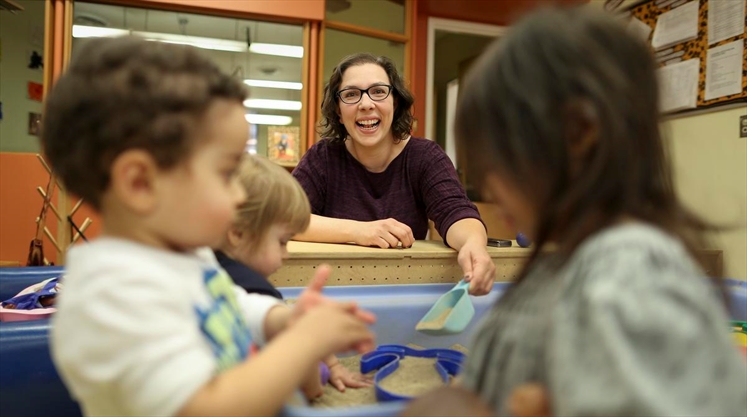
The Community Care Licensing Division’s guidance on child care applies only to it being offered at a school, Kuykendall said, the logic being that if schools are closed for instruction, they’re also closed for care. Turlock Unified School District has been considering partnering with the city parks and recreation department’s After School Education and Safety program to provide care, and that would be fine, he said. “There’s the rub — we can provide exactly what we’re wanting to provide our employees, which are teachers, anywhere except the school campus.”
Why not commit to full semester distance learning?
An Oakdale resident told the superintendent during the town hall meeting that she fears children will be rushed back into the classroom. She asked why Stanislaus County school districts seem to be looking at distance learning on a week-to-week basis rather than committing to it for at least a semester.
Kuykendall replied that the decision to stick with distance learning throughout a semester hasn’t been made “only because that really hasn’t come up in conversation.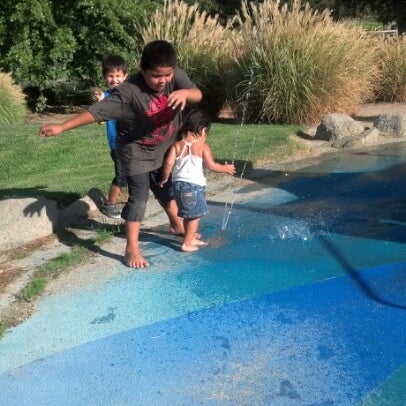
Consideration of returning students to schools needs to differentiate between elementary schools and junior high and high schools, Kuykendall said. Getting grade-schoolers back would be easier, using small groups and possibly alternating days on campuses. The upper grades are more problematic for various reasons, the biggest being that students move to different classrooms throughout the day, so there’s a lot more mixing.
In any case, districts could not rush kids back to school, the superintendent said, because getting off the state’s COVID-19 watch list won’t be simple. There has to be a large reduction in positive cases, and it has to happen over 14 consecutive days, he said. “So what happens when we get to day 13 and then we go back up? OK, then we start all over again. So unfortunately, this isn’t going to be something that goes away anytime soon.”
But when there is the opportunity to safely bring students back, especially at the earliest level, transitional kindergarten through second grade, he’s for it, Kuykendall said.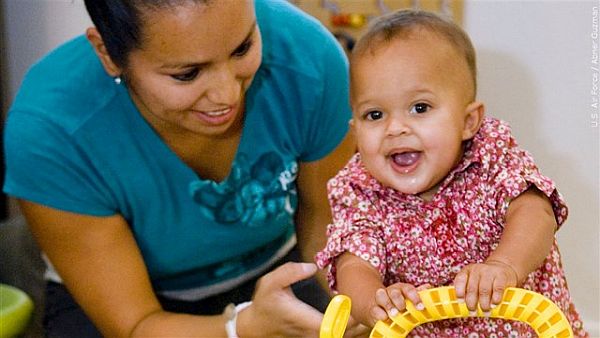
“I don’t want to just lump all schools together and say that none of them can open for a semester,” he said. “If we can, in a creative way, in a safe way, start bringing back our elementary schools sooner, I would be open to doing that.”
Give all teachers work-from-home option?
A Riverbank resident and junior high teacher said teachers are being forced to return to schools, where they have shared bathrooms and unavoidable contact with others. She asked why there’s not been a mandate from the county Office of Education that school districts give teachers the option to work from home.
Kuykendall replied that the county office doesn’t have that authority. Its role is to support districts in a number of ways, including professional development and budgeting, but the districts are autonomous. “So it’s really the districts working with their bargaining units, with their administrations, with their boards in coming to agreements.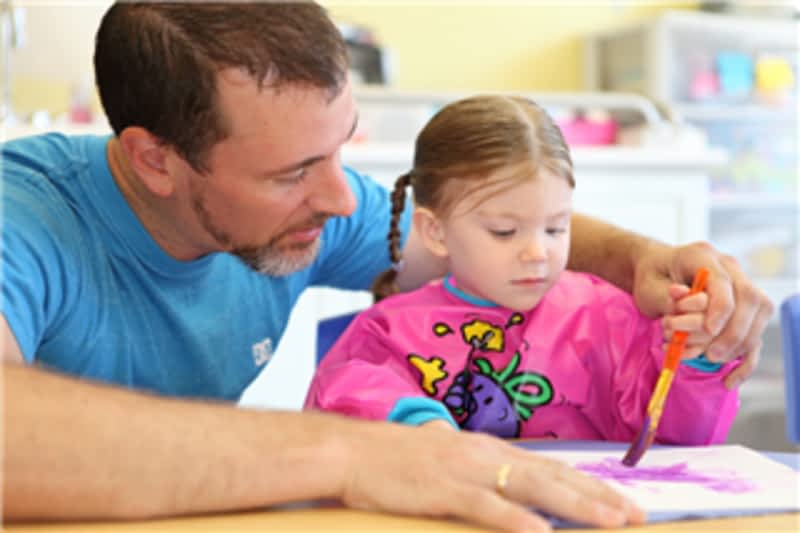
The agreement SCOE has with its own teachers is that they work from their classrooms, he said. So even if the county did have the authority to say all districts should let teachers work from home, he wouldn’t support that, Kuykendall said.
Making such a decision “is incumbent upon those local communities,” he said. “Those school boards can make the best decisions based on their local school community. And I think that’s absolutely the right approach. One size does not fit all.”
The Sacramento Bee contributed to this story.
This story was originally published August 4, 2020 2:52 PM.
Deke Farrow
Deke has been an editor and reporter with The Modesto Bee since 1995. He currently does breaking-news, education and human-interest reporting. A Beyer High grad, he studied geology and journalism at UC Davis and CSU Sacramento.
Average Hourly and Annual Pay
Updated August 22, 2022
$37,299yearly
To create our salary estimates, Zippia starts with data published in publicly available sources such as the U.
$17.93 hourly
Entry level Salary
$22,000
yearly
$22,000
10 %
$37,299
Median
$61,000
90 %
How much does a Child Care Worker make in Modesto, CA?
The average child care worker in Modesto, CA makes $37,299 annually. The average hourly rate for a child care worker is $17.93/hr.
This compares to the national average child care worker salary of $31,284. Below, we break down the average child care worker salary in Modesto, CA by the highest paying companies and industries.
You can also compare different types of child care worker salaries in and around Modesto and a salary history chart that shows how the average salary for child care workers has changed over time in Modesto.
Highest Paying Companies In City
Columbia University in the City of New York
Highest Paying Cities In The Area
Newman, CA
What Am I Worth?
Highest Paying Companies In City
Columbia University in the City of New York
Highest Paying Cities In The Area
Newman, CA
What Am I Worth?
Highest Paying Companies For Child Care Workers In Modesto, CA
This chart shows how child care worker salaries compare at nearby companies.
Highest Paying Companies For Child Care Workers In Modesto, CA
Highest Paying Cities Around Modesto, CA For Child Care Workers
Location can have a major impact on how much child care workers get paid. This chart shows how child care worker salaries can vary depending on where they’re located in the United States.
Average Child Care Worker Pay By Industry In Modesto, CA
The salary for a child care worker can vary depending on what industry the job is in. Here is a breakdown of the average pay across different industries that child care workers work in.
Highest Paying Industries in Modesto, CA
| Rank | Industry | Average Salary | Hourly Rate |
|---|---|---|---|
| 1 | Finance | $45,837 | $22 |
| 2 | Professional | $33,163 | $16 |
| 3 | Education | $32,240 | $16 |
| 4 | Non Profits | $27,993 | $13 |
| 5 | Health Care | $26,535 | $13 |
Average Child Care Worker Salary Over Time In Modesto, CA
Compare the average child care worker salary history for individual cities or states with the national average.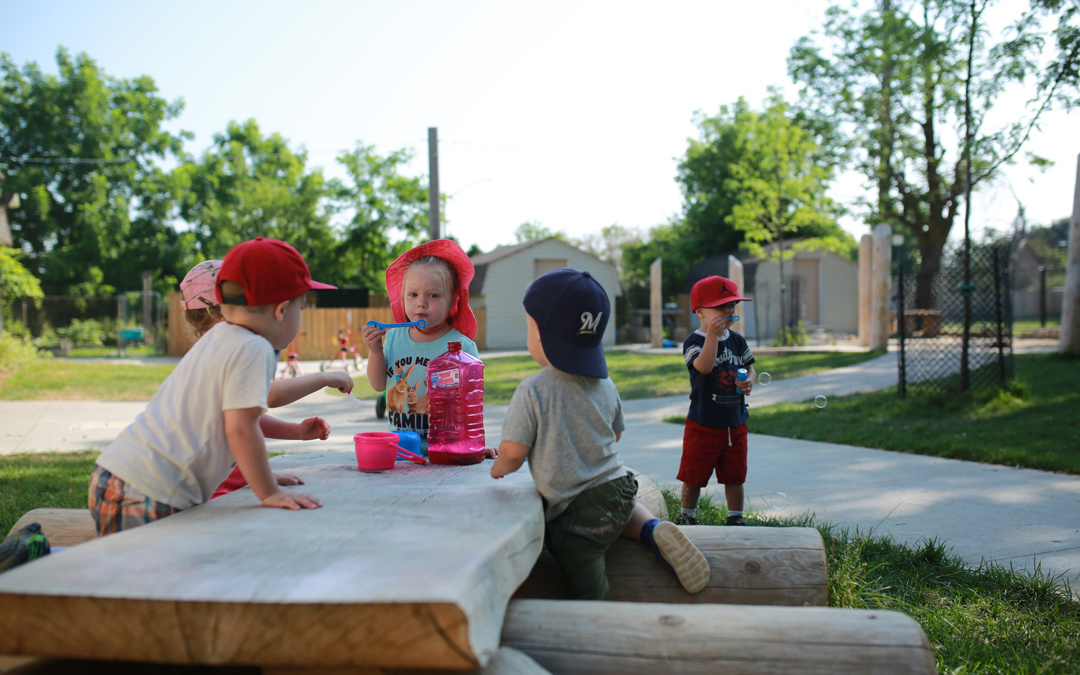
Average Child Care Worker Salary In Modesto, CA By Year
Real Child Care Worker Salaries Around Modesto, CA
| Company | Job | Location | Date Added | Salary |
|---|---|---|---|---|
| Amazon Workforce Staffing | Amazon Warehouse Worker-4 Day Work Week | Riverbank, CA | 03/29/2021 | $32,870 |
| Salida Union School District | Temporary Playground Aide | Salida, CA | 12/09/2020 | $27,882 |
| Salida Union School District | Playground Aide | Salida, CA | 10/30/2019 | $26,964 |
| Salida Union School District | Playground Aide | Salida, CA | 09/20/2019 | $26,964 |
| Salida Union School District | Playground Aide | Salida, CA | 08/29/2019 | $26,964 |
Child Care Worker Salaries In Modesto FAQs
What Is The Salary Range For a Child Care Worker In Modesto, CA?
The salary range for a child care worker in Modesto, CA is from $22,000 to $61,000 per year, or $11 to $29 per hour.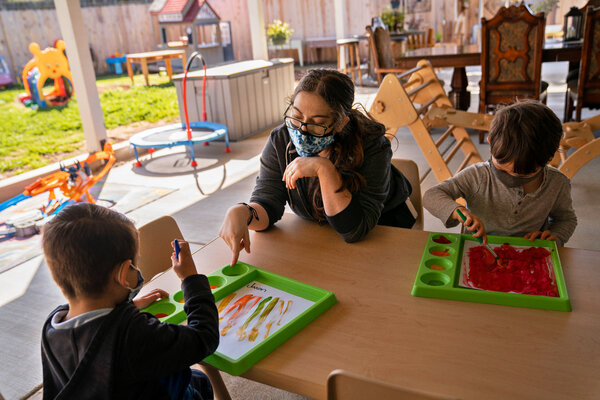
What Is A Liveable Salary In Modesto, CA?
A liveable salary in Modesto, CA is $37,300, or $18 per hour. That is the average salary for people living in Modesto.
What Is A Good Salary In Modesto, CA?
A good salary in Modesto, CA is anything over $37,300. That’s because the median income in Modesto is $37,300, which means if you earn more than that you’re earning more than 50% of the people living in Modesto.
What Is a Child Care Worker’s Salary In Modesto, CA?
| Percentile | Annual Salary | Monthly Salary | Hourly Rate |
|---|---|---|---|
| 90th Percentile | $61,000 | $5,083 | $29 |
| 80th Percentile | $56,125 | $4,677 | $27 |
| 70th Percentile | $51,250 | $4,270 | $25 |
| 60th Percentile | $46,375 | $3,864 | $22 |
| Average | $41,500 | $3,458 | $20 |
| 40th Percentile | $36,625 | $3,052 | $18 |
| 30th Percentile | $31,750 | $2,645 | $15 |
| 20th Percentile | $26,875 | $2,239 | $13 |
| 10th Percentile | $22,000 | $1,833 | $11 |
Have more questions? See all answers to common questions.
Search For Child Care Worker Jobs
Children’s System of Care and Transitional Age Youth – Behavioral Health and Recovery Services
Children and Transitional Age Youth System of Care offers children, youth, and their families a variety of
mental health services. The following programs focus on services provided to strengthen families and children.
Medi-Cal Access Line
To schedule a Mental Health Assessment for services with the mental health provider programs, call:
1-888-376-6246
BHRS PROGRAMS:
Children’s Mobile Assessment Team (CMAT)
Address: 707 14th Street, Modesto, Ca 95354
Phone: 209-525-5401
Hours: 8 AM – 5 PM, Monday – Friday
Spanish Language Capabilities
Children’s Mobile Assessment Team (CMAT) provides assessments to Medi-Cal beneficiaries who have called the
Access Line to request mental health services, and/or have been referred by Child Welfare, Probation,
Education, Health Services Agency, Community Based Organizations, Others requesting mental health services.
The assessment is completed by Mental Health Clinicians to determine the level of mental health services
needed to address their current symptoms and impairments. Clients who meet medical necessity criteria for
Specialty Mental Health Services (SMHS) as defined in Medi-Cal regulations and have Serious Emotional
Disturbance (SED)/Severe Mental Illness (SMI) will be referred for treatment services. For Presumptive
Transfer cases, the program will adhere the AB 1299 Presumptive Transfer.
Pathways to Well-Being
Address: 251 E. Hackett Road, Modesto, CA 95358
Phone: 209-558-2352
Hours: 8 AM – 7 PM, Monday – Friday
On-Call: 24/7
Spanish Language Capabilities
Pathways to Well-Being (PWB) provides assessment, treatment and supportive services to children and youth
involved with the Child Welfare system, whether in voluntary Family Maintenance or involved with the court
system.
opted to remain within the foster care system voluntarily to receive support in transitioning to independence.
PWB partners with the child/youth, family, natural supports, community partners, and other agencies as part of
a Child and Family Team to provide services based on the child/youth’s needs and with the support and
collaboration of the team. Services vary based on individual need and may include individual and family
counseling, case management/intensive care coordination, rehabilitation/intensive home based services,
medication
support, and crisis intervention.
Early Intervention
Address: 920 16th Street, Modesto, Ca 95354
Phone: 209-558-4595
Hours: 8 AM – 5 PM, Monday, Wednesday & Friday; 8 AM – 7 PM Tuesday & Thursday
Spanish Language Capabilities
The Early Intervention program provides assessment, treatment and supportive services to children and youth
age 0 through 17 years of age, with a focus on children or youth new to the behavioral health system with a
first-time diagnosis.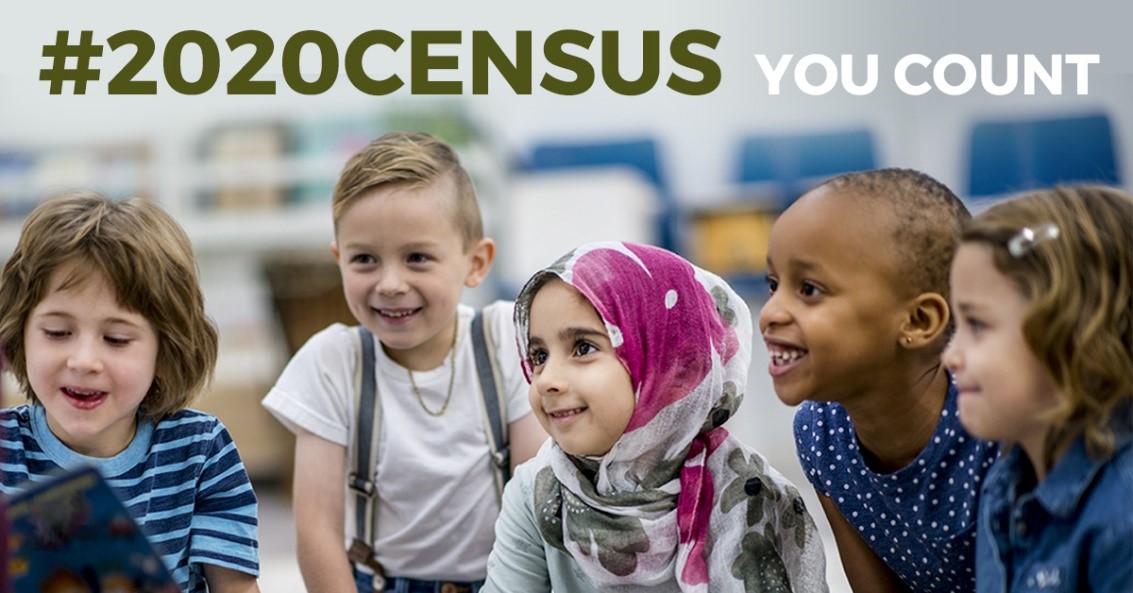
parents/caregivers, and other community partners. The services are intended to be short-term, up to 18 months,
and include mental health treatment and other interventions that address and promote recovery.
Intensive Community Support
Address: 421 E Morris Avenue, Modesto, Ca 95354
Phone: 209-525-5080
Hours: 8 AM – 5 PM, Monday, Wednesday & Friday; 8 AM – 7 PM, Tuesday &Thursday
Spanish Language Capabilities
The Intensive Community Support program provides assessment, treatment and supportive services to children
and youth age 0 to 21 in an outpatient setting. Referrals may come from a variety of sources, including other
programs, schools, parents/caregivers, and other community partners.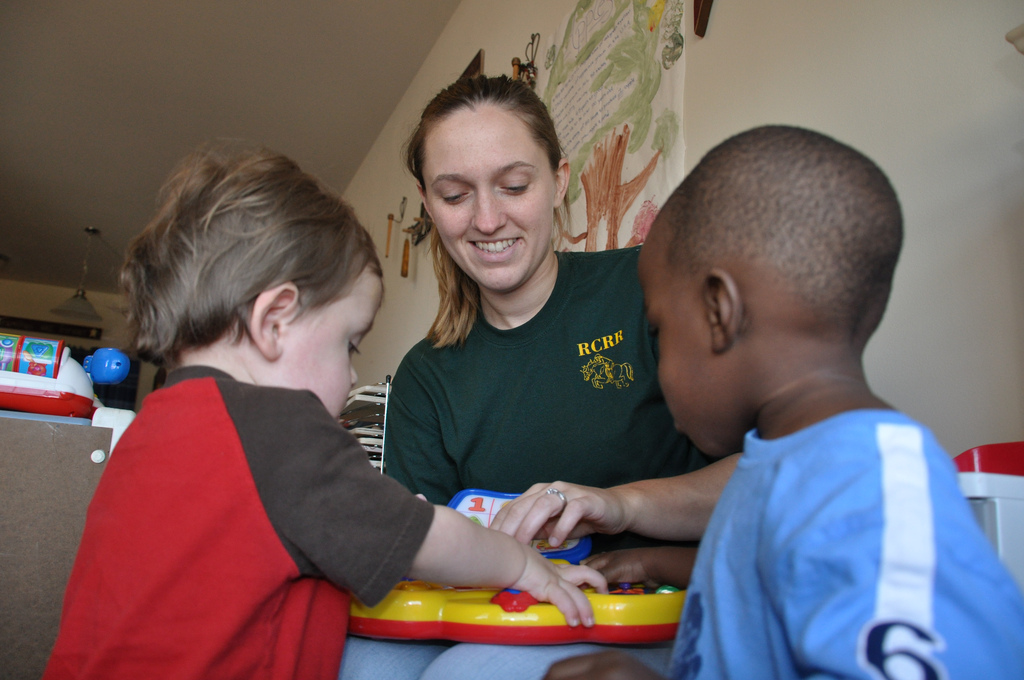
and may include individual and family counseling, case management/intensive care coordination,
rehabilitation/intensive home based services, medication support, and crisis intervention. The focus of
services is to provide youth and their families with support to help reduce stress in the home, school, and/or
community setting, and strengthen family connection and resiliency.
Mental Health Specialty Services
Mental Health Specialty Services (MHSS) consists of multiple teams that provide treatment and supportive
services for smaller, targeted populations and includes the following:
Address: 707 14th Street, Modesto, Ca 95354
Phone: 209-525-5401
Hours: 8 AM – 5 PM, Monday – Friday
Child Abuse Interview, Referrals and Evaluation (CAIRE)
Address: 1418 J Street, Modesto, Ca 95354
Phone: 209-525-5151
Hours: 8 AM – 5 PM, Monday – Friday
Spanish Language Capabilities
The CAIRE Center is co-located with the Stanislaus County Family Justice Center.
scheduled by law enforcement or Child Protective Services when an allegation of child abuse must be
investigated. The CAIRE Center includes a multi-disciplinary team that is on-site to support the child/youth
and family through this investigative process. Behavioral health services are available to the child and
family and can include emotional support, trauma-informed assessment, referrals and linkage, or ongoing
trauma-informed treatment.
First Episode Psychosis (FEP)
Address: 820 Scenic Drive, Building K, Modesto, Ca 95354
Phone: 209-525-4982
Hours: 8 AM – 5 PM, Monday – Friday
Spanish Language Capabilities
The First Episode Psychosis (FEP) program works to provide support, education, and navigation services for
families of children, youth and young adults who are experiencing early stages of psychosis.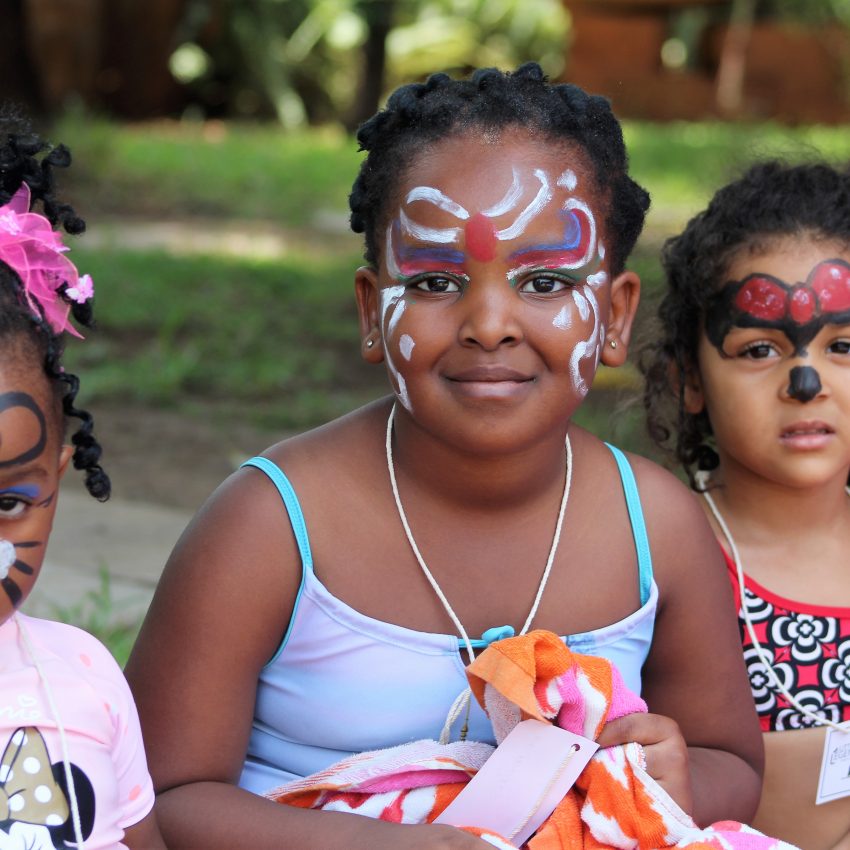
provides education to families around the signs and symptoms of the onset of psychosis and assists them in
accessing and utilizing available behavioral health services. The program provides support to family members
who are coping with the illness of a loved one. The program is independent from all service providers to
improve and facilitate the relationship and interactions between the family and the provider, and often serves
as the liaison between the hospital and outpatient programs. Staff have a pivotal role in the client’s
recovery success by advocating and representing the interests of clients and family members. The program also
works closely with collaborative community partners to educate the community and increase awareness and
includes strategies for unserved populations.
BHRS CONTRACTED PROGRAMS:
ASPIRANET PROGRAMS
Intensive Community Support (ICS)
Locations
Address: 1620 Cummins Drive
Modesto, CA, 95358
Phone: 209-576-1750
Address: 420 E.
Phone: 209-669-2583
Hours: 8 AM – 6 PM, Monday, Wednesday & Thursday; 8 AM – 8 PM, Tuesday; 8 AM – 5 PM, Friday
Spanish Language Capabilities
The Intensive Community Support program provides assessment, treatment and supportive services to
children and youth age 0 to 21 in an outpatient setting. Referrals may come from a variety of sources,
including other programs, schools, parents/caregivers, and other community partners. A primary referral source
is stepdown from the Crisis Stabilization Program. Services vary based on individual need and may include
individual and family counseling, case management/intensive care coordination, rehabilitation/intensive home
based services, medication support, and crisis intervention. The focus of services is to provide youth and
their families with support to help reduce stress in the home, school, and/or community setting, and
strengthen family connection and resiliency.
Crisis Stabilization Program
1620 Cummins Drive, Modesto, Ca 95358
Phone: 209-576-1750
Hours: 8 AM – 5 PM, Monday – Friday
On-Call: 24/7
Spanish Language Capabilities
The Crisis Stabilization Program provides immediate intensive mental health services for children and youth
ages 0 through 17 who experience a crisis assessment. Children and youth may be referred directly from the
Community Emergency Response Team at the time of the crisis, 24 hours a day, with the goal of preventing need
for the child or youth to be placed in a psychiatric hospital for acute treatment. Children and youth who need
acute hospitalization for treatment may also be referred to the program as part of the aftercare plan from the
hospital. Services are short term, intensive, and focused on safety and stabilization.
complete a comprehensive assessment and provide a warm hand-off to an appropriate treatment program for
ongoing services beyond the stabilization period.
Family Urgent Response System (FURS)
Address: 1620 Cummins Drive, Modesto, Ca 95358
Modesto, CA 95358
Phone: 833-939-3877
Hours: 8 AM – 6 PM, Monday, Wednesday & Thursday; 8 AM – 8 PM, Tuesday; 8 AM – 5 PM, Friday
On-Call: 24/7
Spanish Language Capabilities
The FURS program provides local county in-person mobile response services when contacted by a State hotline
that has been designated to serve current and former foster youth and their caregivers experiencing a
situation of instability. The program purpose is to preserve the relationship of the caregiver and the child
or youth.
stabilizing the living situation, mitigating the distress of the caregiver, child or youth, connecting the
caregiver and child or youth to existing local services, and promoting a healthy and healing environment for
families. This program will also increase access and linkage to mental health and community services for this
population as it is designed to support and connect current and former foster youth to the appropriate care
and assistance.
Therapeutic Behavioral Services (TBS)
Address: 420 E. Canal Drive, Turlock, CA, 95380
Phone: 209-669-2583
Hours: 8 AM – 8 PM, Monday & Thursday; 8 AM – 6 PM, Tuesday & Wednesday; 8 AM – 5 PM, Friday
Spanish Language Capabilities
Therapeutic Behavioral Services (TBS) is a short term, intensive, individualized behavioral service available
to children, youth and young adults, ages 0 to 21 years, with a focus on prevention of, or step-down from out
of home placement, or psychiatric hospitalization.
specific challenging behaviors while emphasizing the individual and family’s strengths. The services are
provided at the time and location the behavior occurs and are available 24 hours a day, 7 days a week. The
goal is to reduce the behaviors and support the child, youth, or young adult in successfully remaining in the
least restrictive, most home-like setting.
WrapAround (WRAP) Services
Address: 1620 Cummins Drive, Modesto, Ca 95358
Phone: 209-622-1420
Hours: 8 AM to 5 PM, Monday – Friday
On-Call: 24/7
Spanish Language Capabilities
WRAP uses a strengths-based, needs-driven, team approach to bring flexible services and supports to a child
or youth experiencing significant mental health needs.
natural supports to create an individualized plan that is comprehensive, and addresses needs in various life
domains, including: family, living situation, social/friends, psychological/emotional, educational/vocational,
legal, social/recreational, cultural/spiritual, medical/dental, and crisis and safety planning. Services are
youth and family driven, as the family works with a trained facilitator to engage a supportive team who will
work with the family toward their goals and the program is available to children and youth who are involved
with Child Welfare, Juvenile Probation or are adoptees. The services and supports are available 24 hours a
day, and the service plan reflects the family culture and preferences.
Aspiranet Residential Services (ARS)
Address: Administrative Office: 2513 Youngstown Road, Turlock, Ca 95380
Phone: 209-667-0327
Hours: 24/7
Spanish Language Capabilities
ARS is a Short-Term Residential Therapeutic Program that is trauma-informed and provides an array of services
to children and young adults with significant behavioral, emotional, and educational challenges that preclude
them from being successful at home, with a resource family or other less restrictive settings.
youth placed at the ARS have a mental health diagnosis, present challenging behaviors such as chronic running
away, defiance, truancy, assaultive behavior, delinquency and/or learning disabilities. The program is
designed to be short-term, individualized and intensive, to stabilize youth who have complex needs to support
a successful transition to a permanent and supportive family placement.
SIERRA VISTA CHILD & FAMILY SERVICES PROGRAMS
Intensive Community Support
Address: 1700 McHenry Village Way, Suite 11B, Modesto, Ca 95350
Phone: 209-550-5850
Hours: 8 AM – 6 PM, Monday – Thursday; 8 AM – 5 PM Friday
Spanish Language Capabilities
The Sierra Vista Intensive Community Support program provides assessment, treatment and supportive services
to children and youth age 0 to 21 in an outpatient setting.
including other programs, schools, parents/caregivers, and other community partners. Services vary based on
individual need and may include individual and family counseling, case management/intensive care coordination,
rehabilitation/intensive home based services, medication support, and crisis intervention. The focus of
services is to provide youth and their families with support to help reduce stress in the home, school, and/or
community setting, and strengthen family connection and resiliency.
Lasting Independence & Family Empowerment (LIFE Path) Early Psychosis Intervention (EPI)
Address: 1700 McHenry Village Way, Suite 14, Modesto, Ca 95350
Phone: 209-312-9580
Hours: 8 AM – 5 PM, Monday – Friday
Spanish Language Capabilities
The LIFE Path EPI program) serves youth ages 14 to25 experiencing early symptoms of psychosis.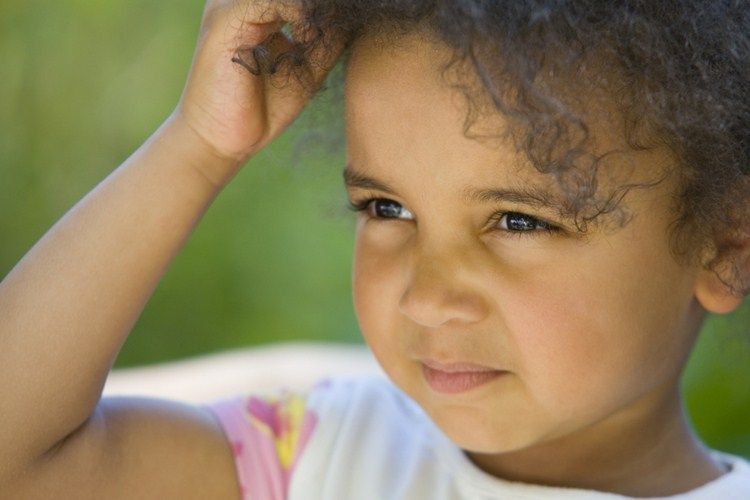
focuses on empowering and creating hope for culturally diverse youth and young adults to continue on their
path through effective treatment, support and connection.
Short Term Residential Therapeutic Program
Address: Administrative Office: 101 Park Avenue, Modesto, Ca 95354
Phone: 209-491-0872
Hours: 24/7
Spanish Language Capabilities
Sierra Vista Child & Family Services provides two Short-Term Residential Therapeutic Program homes for
children ages six to fourteen that struggle in regular foster care or in-home placements. These children need
specialized care to ensure their safety and well-being. The homes are located in clean, safe and
family-oriented neighborhoods and are staffed with caring, nurturing and highly trained staff that ensure
these children receive the most current, therapeutic and behavioral interventions.
to assist the child or youth in developing skills that promote socially appropriate functioning in the family,
community, and academic settings, and to transition them to a lower level of care as soon as possible. These
24-hour facilities partner with therapeutic, educational, and appropriate social supports to ensure that the
children are receiving the best treatment for their specific emotional, physical, behavioral and educational
needs.
CENTRAL STAR
Behavioral Health Services Team (BHST)
Address: 1539 McHenry Avenue, Modesto, Ca 95350
Phone: 209-702-0139
Hours: 8:30 PM – 5 PM
On-Call: 24/7
Spanish Language Capabilities
The BHST is a Full Service Partnership program that provides the most intensive outpatient
services to children and youth ages 0 through 17 years of age.
children and youth who have experienced crisis, psychiatric hospitalization, incarceration, homelessness or
symptoms and behaviors that may increase the risk for out of home placement for the child or youth. Services
vary based on individual need and may include individual and family counseling, case management/intensive care
coordination, rehabilitation/intensive home based services, medication support, and crisis intervention.
CENTER FOR HUMAN SERVICES
School Behavioral Health Integration (CHS SBHI)
Address: 2000 W. Briggsmore Ave Suite I. Modesto, CA, 95350
Phone: 209-526-1440
Hours: 8 AM – 7 PM, Monday, Tuesday & Thursday; 8 AM – 5 PM, Wednesday & Friday
Spanish Language Capabilities
The School Behavioral Health Integration (SBHI) program is a Prevention and Early Intervention program that
focuses on the individual needs of schools within unserved/underserved population communities by using access
and linkage strategies and a behavioral health consultation model.
teachers, and school staff, the program’s team will provide a spectrum of prevention and early intervention
services from wellbeing activities, training, and consultation, to de-escalation, brief counseling, and
short-term treatment services. Children, families, and school staff will benefit from this spectrum and
customized approach.
TELECARE PROGRAMS
Transitional Age Youth (TAY) Behavioral Health Services Team (BHST)
Address: 121 Downey Avenue Modesto, Ca 95350
Phone: 209-222-3150
Hours: 8:00 AM – 5: 00 PM, Monday – Friday
On- Call: 24/7
Spanish Language Capabilities
The Telecare TAY BHST is a Full Service Partnership program that provides the most intensive outpatient
services to young adult ages 18 through 25 years of age.
who have experienced crisis, psychiatric hospitalization, incarceration, homelessness or symptoms and
behaviors that are causing increase in impairments impacting their life’s. Services vary based on individual
need and may include individual and family counseling, case management/intensive care coordination,
rehabilitation/intensive home based services, medication support, and crisis intervention.
Transitional Age Youth (TAY) Drop In-Center
Address: 2008 W. Briggsmore Avenue, Modesto, Ca 95350
Phone: 209-222-3150
Hours: 8:00 AM – 5: 00 PM, Monday – Friday
The TAY Drop-In Center is co-located in Youth Navigation Center serving young adult ages 18-25. It provides a
safe and welcoming community location for TAY clients to access peer support and to support other clients in
their recovery.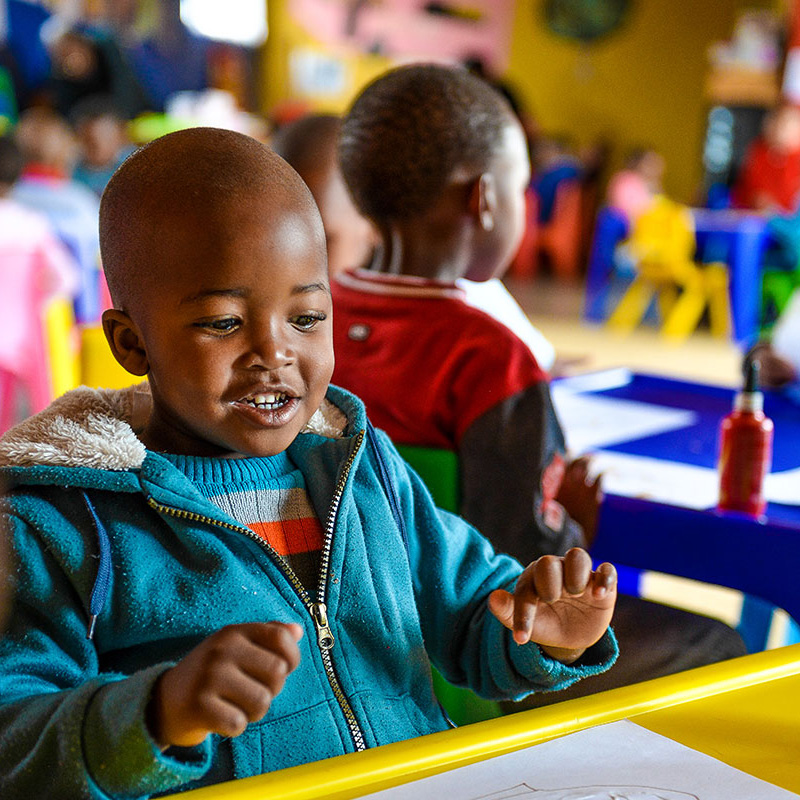
strengthen their peer and community network. The TAY Drop-In Center is also a place where clients will be able
to gather to relax with other peers, creating a supportive environment for any individual that walks through
the door looking for support, someone to talk to, or just to hang out with a few friends. The TAY BHST is
co-located with the TAY Drop-In Center to ensure services and support of the TAY Drop-In Center compliment and
align with treatment services provided by the TAY BHST. In addition, First Episode Psychosis (FEP) program is
also available at the TAY Drop In-Center. The program can provide support, education, and navigation services
for young adults who are experiencing early stages of psychosis. The program provides education of the signs
and symptoms of the onset of psychosis and assists them in accessing and utilizing available behavioral health
services.
increase awareness and includes strategies for unserved populations..
CREATIVE ALTERNATIVES
Short Term Residential Therapeutic Program
Address: Administrative Office: 2855 Geer Road, Turlock, Ca 95382
Phone: 209-668-9361
Hours: 24/7
Spanish Language Capabilities
The Creative Alternatives STRTP serves males and those that identify as male, ages 6 to nonminor dependent.
The STRTP environment is designed to successfully stabilize and effectively transition youth from intensive
residential treatment to reunification with their natural family, foster care, or in some cases, emancipation.
The STRTP homes are designed to provide a safe, secure therapeutic environment for youth with specialty mental
health needs.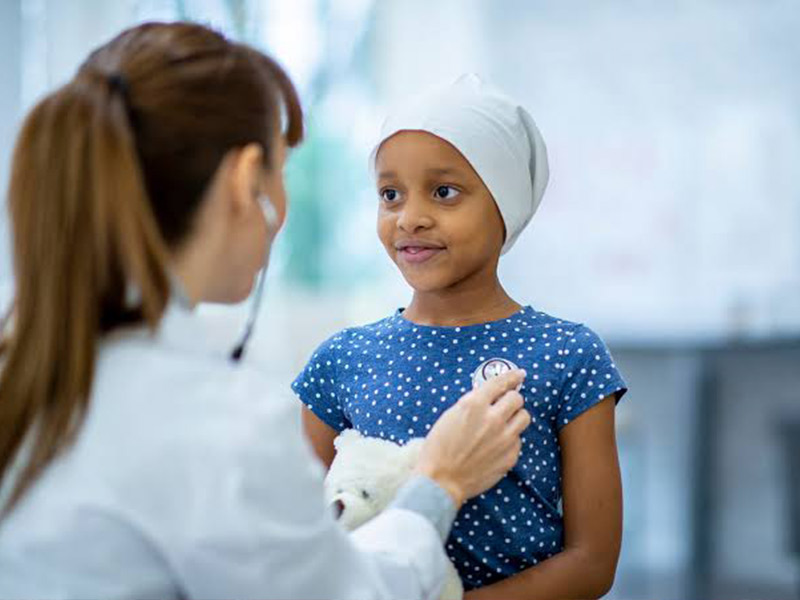
others. The high staff-to-client ratio enables the youth to thrive and learn appropriate behavior in dealing
with their frustrations. In an accepting, therapeutic manner, we try to rebuild their broken spirits so that
one day they will lead responsible, productive and happy lives.
Cook Child Care job at Childtime Learning Centers in Modesto, CA 95355
Apply This Job
Job description
We care, for the children and families we serve, and our dedicated team members. You are our best asset. Feel valued and get access to the benefits and resources you need to connect, balance, grow, and thrive in your career.
- We support your work/life balance with a minimum 50% child care discount, immediate (or next-day) access to earnings, paid time off, and more.
- We invest in your future with ongoing training, tuition reimbursement, credential assistance, and our unique Master Teacher Program.
- We strive to provide a positive, fun environment with plenty of recognition.
COOK FOR CHILD CARE
CHILDTIME LEARNING CENTER
2320 Floyd Avenue in Modesto CA
We offer:
- Paid holidays and paid time off for full time employees
- No nights or weekends!!
- Tuition reimbursement plan
- Opportunity for upward advancement
- Competitive pay rates based on your experience and education
- Daily Pay app: Track your income and transfer earnings instantly (or next day)
- Health, dental and vision insurance for full time employees
- Pet Insurance!!
- Full time and part time available
- Outstanding child care discount available for all age groups!!
The Cook is responsible for overall food preparation for the School’s enrolled children. Able to adapt to menu changes and meet meal and snack schedules.
Job Responsibilities:
- Create home-style, nutritional meal plans in the boundaries of their school’s menu and budget
- Prepare meals/snacks for children and staff and distribute food to the classrooms
- Follow the daily menu provided by the Director which incorporates, USDA, licensing and/or health department regulations.
- Maintain inventory of food and supplies and order more when needed.
- May be asked to assist in classrooms as needed as an Assistant Teacher/Floater.
Job Requirements:
- Work experience in cooking and/or food preparation for multiple individuals, preferably in a childcare facility but not required!
- Flexibility as to the hours and schedule of work
- A High School diploma or equivalent
- Must be at least 18 years of age
We know our best asset is our people! So we’ve made a commitment to ensure you feel valued, with a robust, comprehensive offering that is competitive and exceeds your expectations.
Learning Care Group is an equal opportunity employer and will not discriminate against an employee or applicant based on race, color, religion, national origin or ancestry, sex, age, physical or mental disability, veteran or military status, genetic information, sexual orientation, gender identity, gender expression, marital status or any other protected status under federal, state, or local law.
Save This Job
Apply Job
Related Jobs
All Related Listed jobs
Hospice Care Consultant
Compassus
Jackson, MS
$42,859 – $93,500 a year 30+ days ago
401(k) with company matching contributions.
Conflict Ethic Attorney
King & Spalding
Remote
30+ days ago
Eligible employees may participate in King & Spaldings comprehensive benefit program including healthcare and wellness benefits, life and disability insurance,
Denovo Dentist
Bright Direction Dental LLC
Illinois
19 days ago
Experience with modern dental whitening procedures. Perform dental examinations and create comprehensive treatment plans. $5k Sign-on Bonus.
Oracle Netsuite Consulting Associate
RSM US LLP
San Francisco, CA 94104
23 days ago
As an associate and project team member in the Business Application practice, you will work with project leads/managers to execute NetSuite implementations and
Front Desk Receptionist\u002FScheduler
Dr.
New Canaan, CT 06840
Today
New Canaan, Ct Orthodontist office seeks a full time receptionist/scheduler. Ideal candidate will have at least 2 years orthodontic/dental front desk experience, excellent communication, computer
Dishwasher
us issworld
Las Vegas, NV 89148
30+ days ago
Wash pots and pans, wash dishes, maintain floors. Assist with general cleaning and sanitation as assigned. Maintain storage areas and equipment as assigned.
Accountant or
City of Capitola
Capitola, CA 95010
$6,011 – $8,057 a month 29 days ago
Aids in the maintenance of a perpetual inventory of fixed assets and in the periodic physical verification of the equipment.
Lead Clinical Research Coordinator
Ohio State University Medical Center
Columbus, OH 43210
$47,500 – $71,250 a year 30+ days ago
Bachelors Degree in biological sciences health sciences or other relevant field or an equivalent combination of education and experience required three to five
Specialty Representative
ABBVIE
Philadelphia, PA
30+ days ago
Deliver sales performance, brand KPIs, financial targets, marketing objectives, etc. in order to meet or exceed on those objectives.
Director Marketing
Wollman Park Partners
New York, NY 10065
From $80,000 a year 30+ days ago
Wollman Park Partners (WPP) is the operator of the iconic Wollman Rink NYC (WRNYC) in Central Park.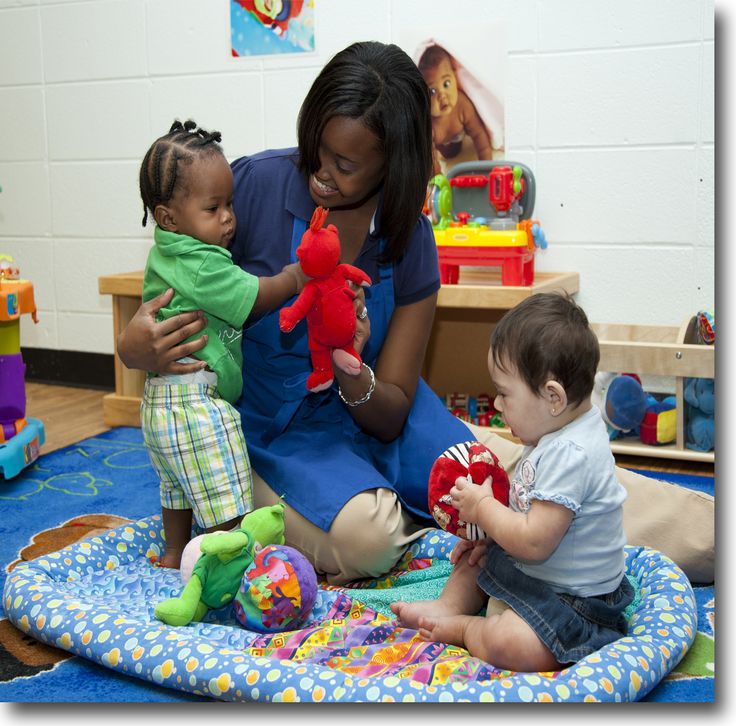
Login
User Name
Password
Remember Me
Lost Your Password?
Nanny Work, Babysitting Jobs, Tutor, Au Pair, Senior Care, Personal Assistant, Pet Sitter & Housekeeping Jobs
- Extended search for desired
- Find trustees by country
- Find caregivers by nationality
- Find trustees by language
- Find childcare
- Find a babysitter
- Find a babysitter
- Find an au pair
- Find a tutor
- Find a housekeeper
- Find a head caregiver
- Find a pet
- Find a personal assistant
- Advanced Job Search
- Find a job by country
- Find a job by nationality
- Find a job by language
- Find a childcare job
- Find a babysitting job
- Find a babysitting job
- Find an Au Pair Job
- Find a job as a tutor
- Find work around the house
- Find a job caring for the elderly
- Find a babysitting job
- Find a job as a personal assistant
- Founders Video
- Customer video
- Customer Reviews GreatAuPair
- Security Center
- How to find caregivers
- Finding a Career Job
- Interview Questionnaire
- Au Pair program requirements
- Au Pair programs
- J-1 Au Pair visa fee
- Au Pair and Nanny Salary
- Au Pair visa programs
- Au Pair agency
- Guardian and nanny taxes
- Child care tax deduction
- Immigration Services
- Advertisement on GreatAuPair
- Work for GreatAuPair
Downloads
Deepak T.
Help around the house and with mom
…
Last logged in 58 days ago
Available Sep 22 – Oct 22
View Housekeeper Job 3243061
Full Job Live or Live
View Housekeeper Job 3243061
Javad S.
Senior care. Live in Northern California
We are a big family. My parents have 9 children. Everyone grew up and moved. They have a lot of support. But we need a helping hand around the house to help them manage their daily chores. My mother and father live on their own…
More details
Last login 99 days ago
Available Sep 22 – Oct 22 for 6-48 months
View Au Pair Job 3232299
Full time job, Live-in
View job Au Pair 3232299
Sini M.
Looking for a nanny
…
Last visited 106 days ago
Available Sep 22 – Oct 22 for 6-6 months
View Babysitting Job 3230284
Full Time Job, Live-in
View Babysitting Job 3230284
Nikki D.
I’m looking for a help mom.
Hello, we are a family of four in need of daily assistance. Our ideal candidate will be flexible and able to become part of our family. …
Read more
Last logged in 122 days ago
Available Sep 22 – Aug 23 for 12-36 months
View Babysitting Job 3154366
Full Time Job, Live-in
View Babysitting Job 3154366
Tina B.
Need help raising 3 children under 5 years old.
…
Last login 141 days ago
Available Sep 22 – Sep 22 for 3-24 months
View Babysitter Job 3220584
Full or part-time job, surviving
See babysitting job 3220584
Chris B.
Looking for a part time job
My son is my world, he is smart and very loving. He loves to laugh, play and have fun in his own way. He listens well, travels with me and loves nature. …
More details
Last visited 148 days ago
Available Sep 22 – Oct 22 for 2-36 months
View Babysitting Job 2763298
Jobs are full-time or part-time, real-time or real-time.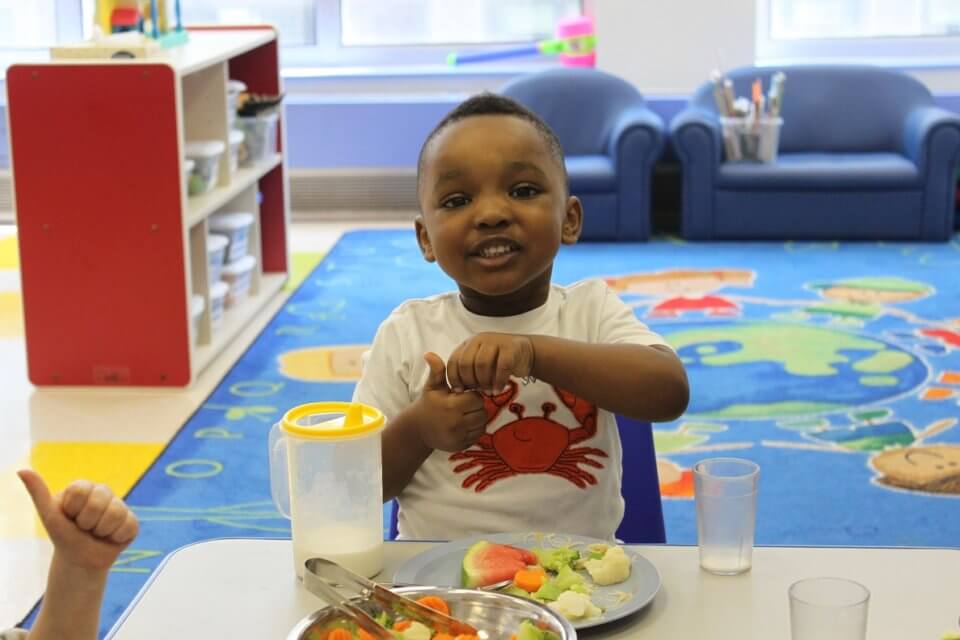
View babysitting job 2763298
Gary T.
California dad looking for au pair or nanny
…
Last login 165 days ago
Available Sep 22 – Oct 22 for 6-24 months
View Au Pair Job 3215332
Job is part time, life or life
View job Au Pair 3215332
Umberto L.
Busco ninera para bebes
…
Last logged in 173 days ago
Available Sep 22 – Oct 22 for 6-24 months
View Babysitting Job 3213749
Job Full, Live or Live
View Babysitter Job 3210749
Iftikhar k.
I need a personal assistant near Istanbul, Turkey
Help in learning life in Turkey and the Turkish language. Help find an apartment, groceries, light cooking and cleaning, transportation, sightseeing, travel, shopping, banking, mobile phone, canteen, movies, learning culture, classes…
Read more
Last logged in 183 days ago
Available Sep 22 – Oct 22
View Personal Assistant Job 3166921
The job is full time or part time, live or live.
View Personal Assistant Job 3166921
Kendra W.
Cleaning, kitchen work
…
Last visited 204 days ago
Available Sep 22 – Oct 22
View Housekeeper Job 3206278
Full or part-time job, Live-in
View Housekeeper Job 3206278
Bruce J.
Looking for an au pair from Iran
…
Last login 232 days ago
Available Sep 22 – Oct 22 for 6-48 months
View Au Pair Job 3189510
Full Time Job, Live-in
View Au Pair Job 3189510
Jennifer N.
Personal assistant to help with various duties
We are looking for a reliable, loving person who will love to grow up with our family, doing “household duties”. We are a family of 4 who would like to meet you. About us…. we study at home and are already jumping…
More info
Last logged in 234 days ago
Available May 22 – Oct 22
View Personal Assistant Job 3198592
Full-time, Live-in job
View Personal Assistant Job 3198592
Yuvi R.
nanny
…
Last logged in 238 days ago
Available Sep 22 – Oct 22
View Babysitting Job 3197811
Job is a part-time job, out of life
View Babysitting Job 3197811
Jonathan b.
live in a nanny with lhc 4 small family of 3 in maneca, ca
…
Last visited 249 days ago
Available Sep 22 – Oct 22 for 6-40 months
View Babysitting Job 2976273
Full Time Job, Live-in
View Babysitting Job 2976273
Max A.
Stockton ca familia busca una niñera
…
Last login 324 days ago
Available Sep 22 – Oct 22 for 3-12 months
View Babysitting Job 3176083
Full or Partial Job, Living Out
View Babysitting Job 31760083 from direct employers on Flagma
×
This website uses cookie files for service improvement and also for demonstration to you relevant advertizing. Using this website, you agree with the use of cookies.
All categories
Modesto
Post job
0 jobs
Clear filters
Type of jobs
All jobs
region
Modesto
Category
- All categories
- Accounting & finance
- Advertising, marketing, PR
- Agriculture
- Couriers, promoters
- Design, media
- Engineers, technologists
- Foreign trade, logistics, customs
- Health, beauty & sports
- Human resources management
- Industrial workers
- IT, computers, Internet
- Law & security
- Real estate, construction
- Remote work
- Retail
- Sales, purchasing, office
- Service industry
- Teachers, translators
- Top management
- Transport, automotive business
In Modesto no vacancies in this category. Pay attention to jobs in other cities.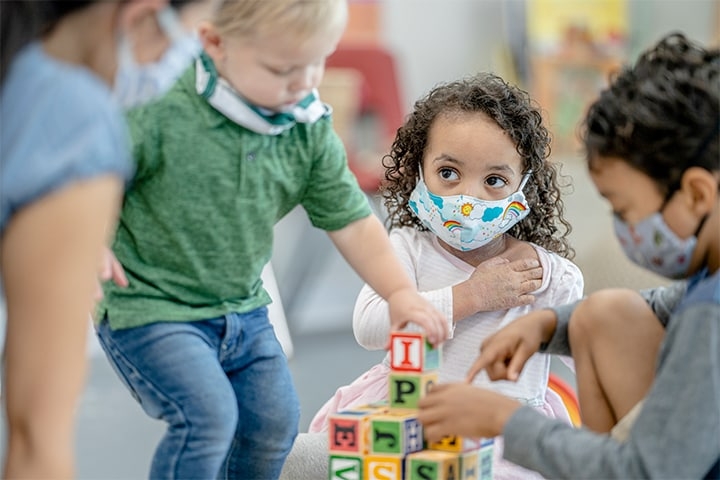
WZ Recruit, Gmbh | Bernex, CH
in San Jose 88 km, remotely
We invite you to take part in our project for the purpose of part-time work. We are the largest direct marketing company among the post-Soviet countries. Our goal is to collect and process information of interest to customers in order to better understand…
Save
3 hours ago
Simakova O., SP | Kiev, UA
in Los Altos 104 km, full time
Housekeeper needed in Los Altos, California . W / n $ 500 per week With accommodation! A US visa is required. Contact Viber/WhatsApp
Save
22 May 2020
Mings Recycling Corporation, C.Corp. | California City
in Sacramento 107 km, part time, work experience from 1 year and above, higher education
We are Mings Recycling Corporation, located at 3316 47th Ave, Sacramento, Ca .Our websites: />We are looking for a Deputy store manager in our organization, this position is vacant for both male/female with minimum 1 year of experience .
Save
13 April 2022
WZ Recruit, Gmbh | Bernex, CH
in Sacramento 107 km, remotely
We invite you to take part in our project for the purpose of part-time work. We are the largest direct marketing company among the post-Soviet countries. Our goal is to collect and process information of interest to customers in order to better understand…
Fedorov, JDG | Łódź, PL
in San Francisco 126 km, full time
Legal migration to America
password for 2 years. Legal stay in the USA
receiving ssn
obtaining a work permit
Work from the first day of arrival
salary from $35 per hour
whatsapp +12135
3
Save
7 days ago
WZ Recruit, Gmbh | Bernex, CH
in San Francisco 126 km, remotely
We invite you to take part in our project for the purpose of part-time work. We are the largest direct marketing company among the post-Soviet countries. Our goal is to collect and process information of interest to customers for a better understanding.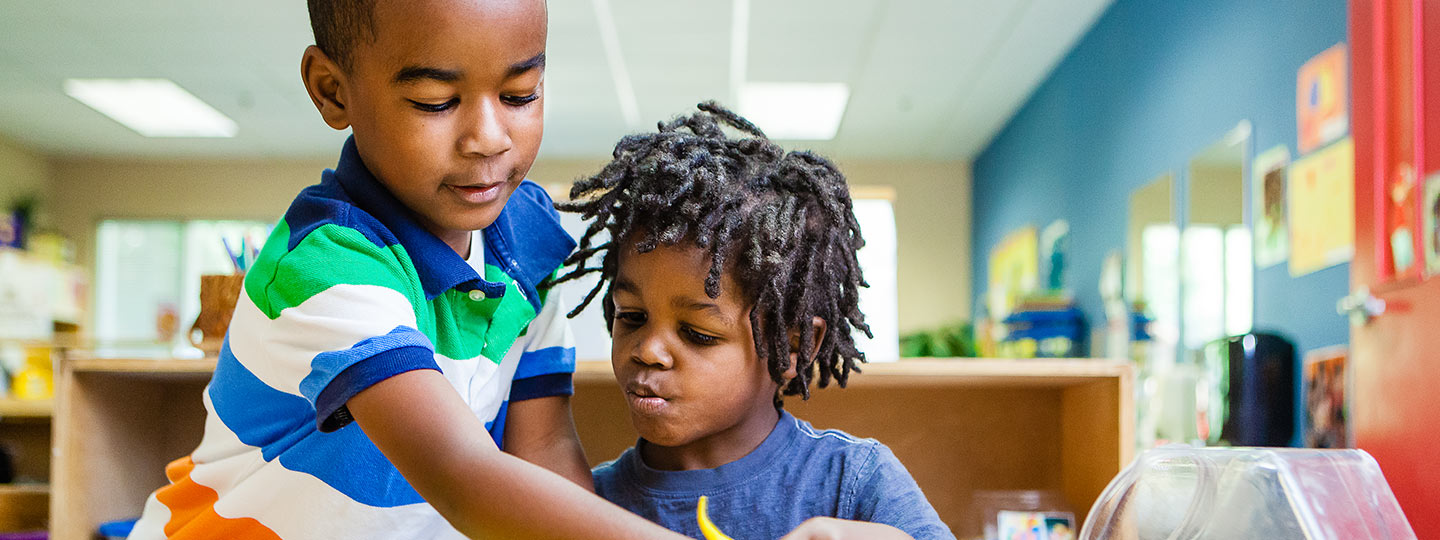
in San Francisco 126 km, full time
VACANCY: Housekeeper in USA
Ukrainian family
Place of work: USA
Homestay work
The family provides food
Family travel
Salary: from $2000 per month
Responsibilities:
– House cleaning 270 sq. m.
-Putting order in …
Save
5 August 2022
Simakova G.E., SP | Kiev, UA
in San Francisco 126 km, full time, work experience from 1 year and above, higher education
Need a nanny in the USA for a 2.5 month old baby for 6 months. There is only one child in the family. Mom is Russian, husband is German-Italian, friendly family, they travel a lot. Work schedule 6/1, from 7-8 (as the baby wakes up) until 19.00. Responsibilities include: looking after…
Save
2 September 2021
Simakova G.E., SP | Kiev, UA
in San Francisco 126 km, full time, work experience from 1 year and above
Russian-speaking families in America are constantly in need of domestic staff.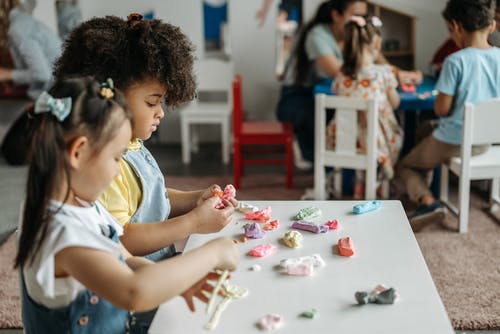
Save
2 September 2021
Any Way Moving Company, LLC | South San Francisco
in San Francisco 126 km, full time, work experience from 1 year and above
Need driver, forman/driver
In San Francisco, for a permanent job in a moving company, drivers, forman/drivers are needed. Experience is required. The work is permanent, stable, daily work. Good hourly salary + bonuses + tips. If you…
Save
6 October 2020
Post resume
Employers will be able to find you and offer a respectable job.
Big Funny, LLC | San Francisco
126 km, full time, work experience from 2 years and above, higher education
Big-Funny International Entertainment Corporation, one of the leaders in entertainment services for many years, has opened a new Museum of Illusions in the USA, in .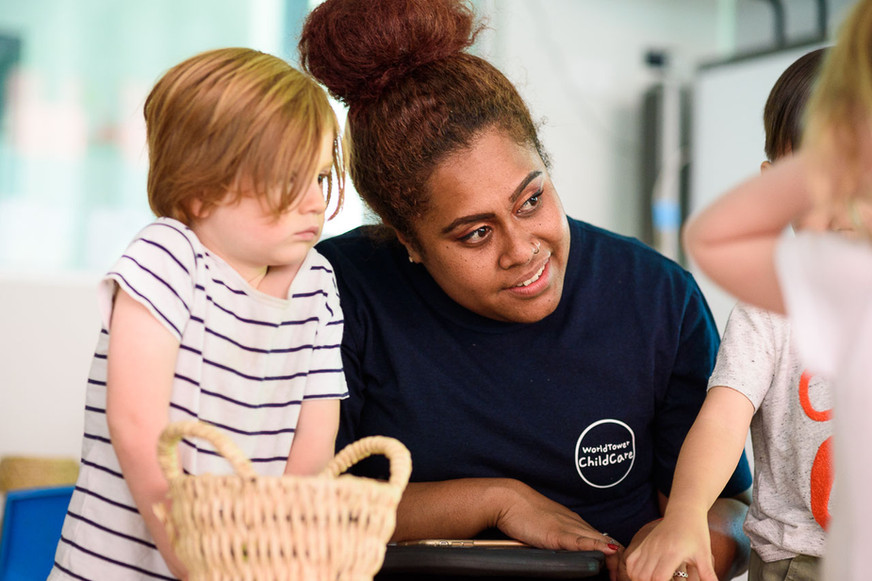
Save
8 April 2019
WZ Recruit, Gmbh | Bernex, CH
in Fresno 149 km, remotely
We invite you to take part in our project for the purpose of part-time work. We are the largest direct marketing company among the post-Soviet countries. Our goal is to collect and process information of interest to customers for a better understanding… Kiev, UA
in California City 391 km, full time
VACANCY: Nanny in USA
Work for half a year
Schedule 5 days a week, 2 days off
Very wealthy family
Living with an employer
The family provides food
Family travel
Place of work: USA
Salary: $3000 per…
Save
5 July 2022
Home Staff, s.r.o. | Prague, CZ
in California City 391 km, full time, work experience from 1 year and above
Urgent! We invite you to work in the family NANNY.
California, USA
RFP: $3,000. The family pays for the travel expenses.
Two children: 3 and 5 years old.
Rotational method of work 3/3 months; 6/1.
EU citizenship + visa (we help).
It is important that the nanny has experience and…
Save
29 June 2022
CryptocurrencyMarket, SP | Stamford (Connecticut)
in Los Angeles 474 km, remotely, no work experience
We are a private company that few people know about. The main essence of the activity is trading, arbitrage and other actions with cryptocurrency.We give full training to get started, after which you show and show yourself. If you prove yourself…
Save
7 days ago
| Los Angeles
474 km, full time
Answering phone, sending email, assisting with bookings and all office help. Required knowledge of english and computer. Must be active ans social person.
Save
4 February 2022
Royal Insulation, Corporation | Kiev, UA
in Los Angeles 474 km, full time
To a product company – a network of sites (industrial Flagma.
Requirements:Good knowledge of PHP 7Knowledge of pure Java Script and jQueryThe…
Save
28 November 2019
Fedorov, JDG | Łódź, PL
in Los Angeles 474 km, full time
I bring to your attention a legal move to America.
come with an entry permit. No border crossings and detents. get a password for 2 years. Get ssn
get a work permit
get a driver’s license
get coupons for food…0097
in Los Angeles 474 km, remotely
An interesting job that does not require special skills.
For beginners, there is a free step-by-step online training.
Relevant for any age.
You can work at any convenient time and use it as additional income.
Requirements:
– Desire…
Save
4 days ago
WZ Recruit, Gmbh | Bernex, CH
in Los Angeles 474 km, remotely
We invite you to take part in our project for the purpose of part-time work.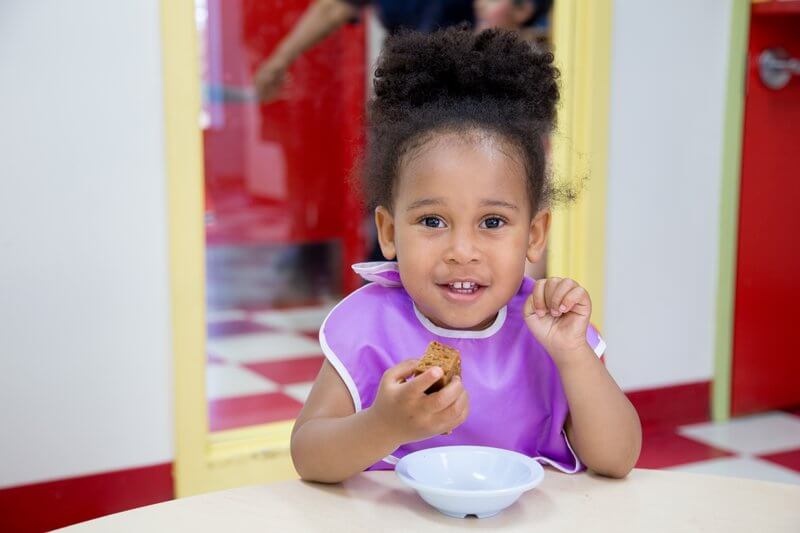
Save
3 hours ago
Show more 20
×
Find town
Filter
TV cabinets | pigu.lt
Filter by
View product list Cheapest at the top
pigu.lt/ru/t/nashli-deshevle.’>
PRICE GUARANTEE
21 94 € / month
450 00 €
Add to cart
TV table Selsey Larka LED, 300 cm, gray
Material: Fibreboard (Fibreboard)
TV table type: Hanging
Length: 300 cm
pigu.lt/ru/t/nashli-deshevle.’>
PRICE GUARANTEE
17 65 € / month
362 00 €
Add to cart
TV table Alimos II, grey/white
Material: Fibreboard (Fibreboard)
TV table type: Floor standing
Length: 204 cm
pigu.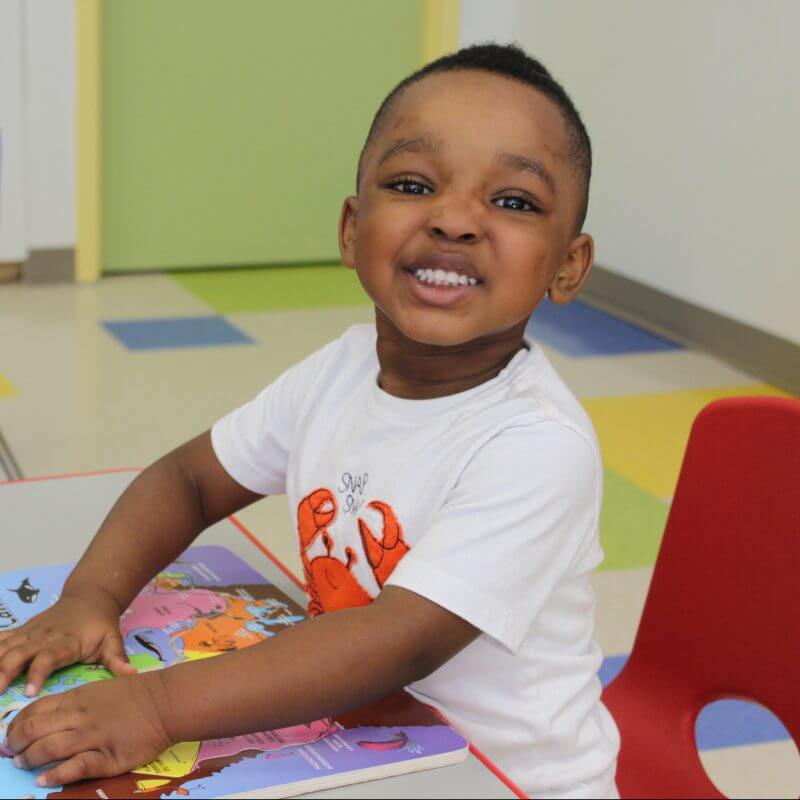
PRICE GUARANTEE
11 02 € / month
226 00 €
Add to cart
TV stand Selsey Bello, 175 cm, black with slats
Material: Solid wood
TV table type: Floor standing
Length: 175 cm
pigu.lt/ru/t/nashli-deshevle.’>
PRICE GUARANTEE
10 78 € / month
221 00 €
Add to cart
TV cabinet Bello 175 cm, black with slats
Material: Chipboard
TV table type: Floor standing
Length: 175 cm
pigu.lt/ru/t/nashli-deshevle.’>
PRICE GUARANTEE
9 56 € / month
196 00 €
Add to cart
5/5
RTV table Ontario II
Material: Chipboard (Particleboard)
TV table type: Floor standing
Length: 190 cm
pigu.
PRICE GUARANTEE
8 97 € / month
184 00 €
Add to cart
4.8/5
RTV table Kora KRT2, white
Material: Chipboard (Particleboard)
TV table type: Floor standing
Length: 158 cm
pigu.lt/ru/t/nashli-deshevle.’>
PRICE GUARANTEE
8 78 € / month
180 00 €
Add to cart
3/5
TV table RTV Aura, black
Material: Chipboard (chipboard)
TV table type: Floor standing, Hanging
Length: 200 cm
pigu.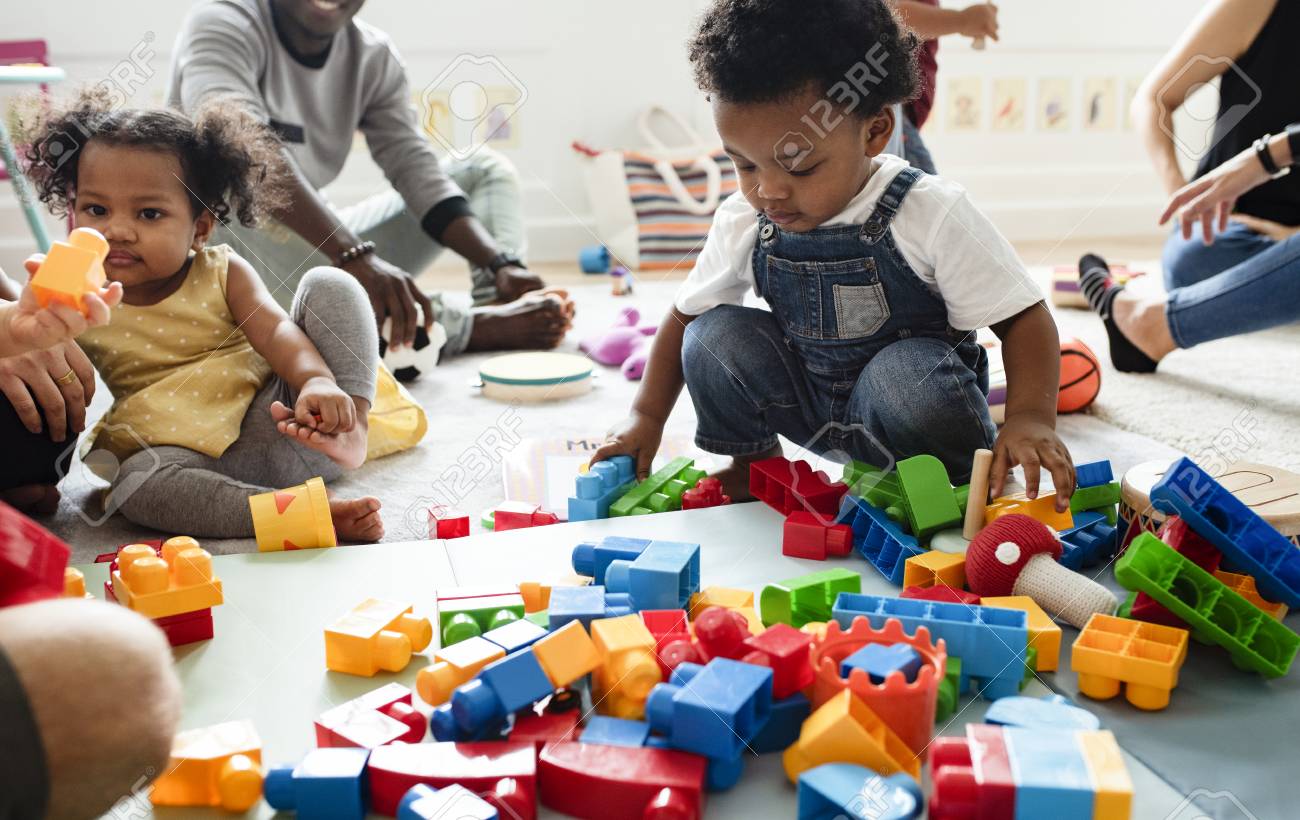
PRICE GUARANTEE
8 05 € / month
165 00 €
Add to cart
TV table ASM Switch 3, white
Material: Fibreboard (Fibreboard), Glass
TV table type: Hanging
Length: 180 cm
pigu.lt/ru/t/nashli-deshevle.’>
PRICE GUARANTEE
7 51 € / month
154 00 €
Add to cart
5/5
TV table Bianko LED, white/black
Material: Chipboard (chipboard)
TV table type: Floor standing
Length: 140 cm
pigu.lt/ru/t/nashli-deshevle. ‘>
PRICE GUARANTEE
8 10 € / month
131 12 €
Add to cart
5/5
RTV table Heda 1D, white
Material: Particleboard (Particleboard), Fiberboard (Fibreboard)
TV table type: Floor standing
Length: 135 cm
pigu.lt/ru/t/nashli-deshevle.’>
PRICE GUARANTEE
7 16 € / month
95 00 €
Add to cart
TV table NORE RTV K140, oak color
Material: Particleboard (chipboard)
TV table type: Floor standing
Length: 140cm
pigu.lt/ru/t/nashli-deshevle. ‘>
PRICE GUARANTEE
6 83 € / month
140 00 €
Add to cart
5/5
TV staliukas Arco 187, baltos/ąžuolo spalvos
Material: Chipboard (chipboard)
TV table type: Floor standing
Length: 187.5 cm
pigu.lt/ru/t/nashli-deshevle.’>
PRICE GUARANTEE
7 85 € / month
127 00 €
Add to cart
TV table Kalune Design 863(II), 180 cm, blue/oak
Material: Chipboard (chipboard)
TV table type: Floor standing
Length: 180 cm
pigu.lt/ru/t/nashli-deshevle. ‘>
PRICE GUARANTEE
7 60 € / month
123 00 €
Add to cart
4/5
RTV table Switch RTV 1, white
Material: Chipboard (Particleboard)
TV table type: Hanging
Length: 180 cm
pigu.lt/ru/t/nashli-deshevle.’>
PRICE GUARANTEE
6 83 € / month
140 00 €
Add to cart
TV table Kalune Design 382 150 cm, gray
Material: Particleboard (Particleboard)
TV table type: Floor standing
Length: 150 cm
pigu.lt/ru/t/nashli-deshevle.’>
PRICE GUARANTEE
7 72 € / month
125 00 €
Add to cart
Corner TV table Decortie Compact, white
Material: Chipboard (chipboard)
TV table type: Floor standing
Length: 90 cm
pigu. lt/ru/t/nashli-deshevle.’>
PRICE GUARANTEE
6 78 € / month
90 00 €
Add to cart
TV table NORE CLP K120, brown/oak color
Material: Chipboard
TV table type: Floor standing
Length: 120 cm
pigu.lt/ru/t/nashli-deshevle.’>
PRICE GUARANTEE
7 88 € / month
104 63 €
Add to cart
4/5
Iska women’s dress
Material: Fibreboard (Fibreboard), Glass
TV table type: Hanging
Length: 180 cm
pigu.lt/ru/t/nashli-deshevle.’>
PRICE GUARANTEE
7 23 € / month
96 00 €
Add to cart
TV table Livo, white
Material: Particleboard (Particleboard)
TV table type: Hanging
Length: 160 cm
pigu. lt/ru/t/nashli-deshevle.’>
PRICE GUARANTEE
6 80 € / month
110 00 €
Add to cart
3/5
RTV table Helix, brown/black
Material: Chipboard (chipboard)
TV table type: Floor standing
Length: 160 cm
pigu.lt/ru/t/nashli-deshevle.’>
PRICE GUARANTEE
6 80 € / month
110 00 €
Add to cart
5/5
RTV table Best, white/black
Material: Particleboard (Particleboard)
TV table type: Floor standing
Length: 151 cm
pigu. lt/ru/t/nashli-deshevle.’>
PRICE GUARANTEE
8 62 € / month
176 77 €
Add to cart
TV table Kalune Design 835, 160 cm, white
Material: Chipboard (chipboard)
TV table type: Floor standing
Length: 160 cm
pigu.lt/ru/t/nashli-deshevle.’>
PRICE GUARANTEE
6 84 € / month
90 77 €
Add to cart
RTV table Solar, oak
Material: Chipboard (chipboard)
TV table type: Floor standing
Length: 200 cm
pigu.lt/ru/t/nashli-deshevle.’>
PRICE GUARANTEE
7 62 € / month
123 39 €
Add to cart
Table for TV Blanco 10
Material: Particleboard (chipboard)
TV table type: Floor standing
Length: 128cm
pigu. lt/ru/t/nashli-deshevle.’>
PRICE GUARANTEE
7 84 € / month
104 00 €
Add to cart
4.5/5
RTV table York, white/oak
Material: Chipboard (Particleboard)
TV table type: Floor standing
Length: 151.6 cm
pigu.lt/ru/t/nashli-deshevle.’>
PRICE GUARANTEE
7 61 € / month
101 00 €
Add to cart
5/5
Hanging TV cabinet Halmar Livo 180 cm, brown/s…
Material: Fibreboard (Fibreboard), Glass
TV table type: Hanging
Length: 180 cm
pigu. lt/ru/t/nashli-deshevle.’>
PRICE GUARANTEE
7 01 € / month
93 00 €
Add to cart
4/5
RTV table Global I, white/oak color
Material: Chipboard (chipboard)
TV table type: Floor standing
Length: 100 cm
pigu.lt/ru/t/nashli-deshevle.’>
PRICE GUARANTEE
7 01 € / month
93 00 €
Add to cart
5/5
RTV table Bono II
Material: Chipboard (chipboard)
TV table type: Floor standing
Length: 180 cm
pigu. lt/ru/t/nashli-deshevle.’>
PRICE GUARANTEE
8 96 € / month
87 00 €
Add to cart
TV staliukas NORE RTV K120, rudas
Material: Chipboard (chipboard)
TV table type: Floor standing
Length: 120 cm
pigu.lt/ru/t/nashli-deshevle.’>
PRICE GUARANTEE
7 63 € / month
101 25 €
Add to cart
TV table Kalune Design 389, 138 cm, white/brown
Material: Chipboard (chipboard)
TV table type: Floor standing
Length: 138 cm
pigu.lt/ru/t/nashli-deshevle.’>
PRICE GUARANTEE
7 16 € / month
95 00 €
Add to cart
Hanging TV cabinet Halmar Livo, brown/grey
Material: Fibreboard (Fibreboard)
TV table type: Hanging
Length: 160 cm
pigu. lt/ru/t/nashli-deshevle.’>
PRICE GUARANTEE
7 54 € / month
100 00 €
Add to cart
TV table Kalune Design 389, 139 cm, brown
Material: Particleboard (chipboard)
TV table type: Floor standing
Length: 138 cm
pigu.lt/ru/t/nashli-deshevle.’>
PRICE GUARANTEE
8 51 € / month
64 99 €
Add to cart
TV table Malwa 140, dark brown
Material: Chipboard (chipboard)
TV table type: Floor standing
Length: 140 cm
pigu.lt/ru/t/nashli-deshevle.’>
PRICE GUARANTEE
5 37 € / month
41 00 €
Add to cart
TV table Canaz, gray
Material: Chipboard, Metalas
TV table type: Floor standing
Length: 120 cm
pigu. lt/ru/t/nashli-deshevle.’>
PRICE GUARANTEE
5 37 € / month
41 00 €
Add to cart
TV table Canaz, white/black
Material: Chipboard, Metalas
TV table type: Floor
Length: 120 cm
pigu.lt/ru/t/nashli-deshevle.’>
PRICE GUARANTEE
6 70 € / month
51 12 €
Add to cart
4.8/5
TV table Halmar RTV-21, black
Material: Glass
TV table type: Floor standing
Length: 80 cm
pigu.lt/ru/t/nashli-deshevle.’>
PRICE GUARANTEE
8 78 € / month
66 99 €
Add to cart
4. 6/5
COLLECT TODAY
RTV table Magic, white/black
Material: Chipboard
TV table type: Floor standing
Length: 144 cm
pigu.lt/ru/t/nashli-deshevle.’>
PRICE GUARANTEE
6 35 € / month
48 49 €
Add to cart
TV cabinet Sandy 100, white
Material: Particleboard (Particleboard), Fibreboard (Fibreboard)
TV table type: Floor standing
Length: 100cm
pigu.lt/ru/t/nashli-deshevle.’>
PRICE GUARANTEE
8 51 € / month
64 99 €
Add to cart
5/5
TV table Malwa 140, white
Material: Chipboard (chipboard)
TV table type: Floor standing
Length: 140 cm
pigu. lt/ru/t/nashli-deshevle.’>
PRICE GUARANTEE
9 17 € / month
69 99 €
Add to cart
4.8/5
TV staliukas BRW Nepo Plus RTV2D, ąžuolo spalvos
Material: Particleboard (Particleboard)
TV table type: Floor standing
Length: 138.5 cm
pigu.lt/ru/t/nashli-deshevle.’>
PRICE GUARANTEE
7 99 € / month
60 99 €
Add to cart
4.5/5
COLLECT TODAY
TV table Malwa 140, black
Material: Chipboard (chipboard)
TV table type: Floor standing
Length: 140 cm
pigu. lt/ru/t/nashli-deshevle.’>
PRICE GUARANTEE
8 78 € / month
66 99 €
Add to cart
5/5
COLLECT TODAY
TV stand 140, brown
Material: Chipboard (chipboard)
TV table type: Floor standing
Length: 140 cm
pigu.lt/ru/t/nashli-deshevle.’>
PRICE GUARANTEE
6 68 € / month
50 99 €
Add to cart
5/5
TV staliukas Matos, baltos/ąžuolo spalvos
Material: Chipboard (Particleboard)
TV table type: Floor standing
Length: 118.5 cm
Interior trends in 2022
New Year brings new changes not only to our daily life, but also to the interior of the house. When planning them, we often take into account the prevailing trends, which every year surprise with new discoveries and unexpected solutions. We offer you to get acquainted with design ideas for creating a house in ska
Gray living room interior
Gray has dominated trend lists for years, and its wide range of hues allows it to be applied to almost any space. The living room is no exception – both the furniture for the living room and the walls, floor or other details can be made in gray shades. If you decide that this color
Read more
Interior designer tips: how to furnish a small living room?
The living room is often given the epithet of a room that represents the whole house, so we always try to equip this room in some special way. However, if it is not very spacious, questions often arise about how to furnish a small living room so that it remains both stylish and functional. Del
Read more
How to arrange a kitchen with a living room? Interior designer advises
A kitchen with a living room is a very popular architectural solution lately, which allows you to enjoy a very spacious, large space, which often turns out to be even brighter. Also, it is even easier to look after children and receive guests. However, the purpose of each zone is
Read more
TV tables are the kind of versatile furniture that, with the right choice, can create the atmosphere of an entire living room. Previously, TV tables, as the name itself suggests, were designed for TVs. Over the years, technology has improved, TVs have become thinner and lighter, and now they are increasingly hung on the wall. However, TV tables have remained universal furniture, which is almost impossible to refuse, even if you do not put a TV on them. Things, interior decorations are stored on such a table, and the TV itself weighs above it. Recently, TV tables with additional shelves that hang under or next to the TV have become popular. Modern TV tables are not made to any standard. They come in a variety of shapes, styles, colors and materials (from glass to metal and plastic). You can find many TV tables in the Pigu.lt online store catalog. There really is a lot to choose from here! And to make the search easier, and you are not confused, first decide what style of table you need. Match the style and color to the furniture already in the room. If you want the table to stand out, become the accent of the room, consider brighter options, but do not forget that they should be combined with the rest of the interior. If you need a table for storing things and you do not want it to attract a lot of attention, a wooden, painted or glass table will be the best solution. The glass TV tables blend in harmoniously with the surroundings and are less visible.
Page not found | Moscow Economic Journal
Sorry – that page can’t be found. You can view the most recent articles below or try a search:
Find:
Posted by redaktor
The ComNews information group invites you to take part in a large-scale industry event – the IV Federal IT Forum of the agro-industrial complex of Russia – “Smart Agro: Digital Transformation in Agriculture”. Date: October 27, 2022 Venue: Hilton Garden Inn Moscow Krasnoselskaya, st. Verkhnyaya Krasnoselskaya, 11a, building 4, Moscow Forum site: https://www.comnews-conferences.ru/ru/conference/smartagro2022 The event provides for the possibility of online participation. Broadcast for […]
Hair Care | KAYO
Secondly, before you start caring for oily hair, you should find out the cause of sebaceous activity. If it’s all about the endocrine system, then first you should take care of restoring your health. If the reason lies in genetics, then it is important to simply choose the right care for oily hair and then health, elasticity and shine will return to them again. Just like dry, oily hair has its own characteristics in care.
And even more so, you should not take shampoos that suit all types of hair. Therefore, when answering the question of which shampoo to wash oily hair with, keep in mind that the one that suits your hair. No matter how strange it may sound, the mixed type of hair suffers the most in winter.
Without much effort and time, makes damaged hair beautiful and manageable, protects it from the harmful effects of the environment, nourishes and soothes the scalp, regulates sebum secretion. Apply vitamin E conditioner only to the ends, avoiding the scalp, so that your beautiful strands do not look greasy. Natural plant extracts of aloe, string and calendula nourish the scalp, add shine to hair and make it easier to style.
Winter Treatment for Dry Hair
Let’s look at what can cause oiliness. Care and treatment of oily hair is less burdensome than care for weakened and thin dry hair. It is important to adhere to some rules and choose the right products and hair of this type will not burden you with happy everyday life. The soft, sulfate-free washing composition of DeLaMark children’s shampoo consists of soft “green” surfactants, including those derived from glucose, coconut and olive oils, oat and wheat amino acids. Does not contain components that can cause skin or eye irritation in a child. Thanks to this natural composition, with regular use, DeLaMark conditioner balm for all types of hair improves their condition and appearance.
Another useful hair mask is potato, although it will require more effort. Cold pressed grape seed oil nourishes and strengthens hair follicles. Thanks to this natural composition, with regular use of DeLaMark conditioner for colored hair, with regular use, it quickly improves their condition and appearance. Basic care for oily hair from IRENE BUKUR for 90% consists of herbal ingredients, does not contain SIS / SLES and parabens.
Washing oily hair should not be done too often, but on a regular basis. Only shampoos specifically designed for this type of hair should be used to cleanse oily hair, so as not to irritate the secretion of the sebaceous glands. Frequent washing can remove the protective film from the scalp and hair, which contributes to more intense sebum secretion and skin irritation. Masks and conditioners with strong moisturizing ingredients, such as coconut and argan oil, should be avoided at home. It is best to use products that contain lighter, all-natural ingredients. To determine how oily your scalp is, a trichologist is not needed, we recommend examining the curls and scalp on the second day after washing.
Without much effort and time, makes hair beautiful and manageable, protects it from the harmful effects of the environment, nourishes and soothes the scalp, regulates sebum secretion. Without much effort and time, it makes colored hair beautiful and silky, protects it from the harmful effects of the environment, nourishes and soothes the scalp, and regulates sebum secretion. Caring for oily hair at home is a difficult ritual. Rinsing with water or regular daily shampoo, or using conditioner alone can cause oil to build up. Only certain ingredients found in most cosmetic products can prevent the diagnosis of seborrhea. Natural plant extracts of calendula, string and chamomile have a mild antibacterial effect on the scalp, add shine to children’s hair and make them soft and manageable.
If possible, exclude the use of a hair dryer, ironing. Once every 2 months, you need to visit the master and cut off the dry tips. Refuse hot water – it expands the pores and encourages more sebum production. The skin is affected by low frequency microcurrents. They stimulate blood circulation and lymph flow, saturate the skin with oxygen, activate metabolic processes in the hair follicles. Refuse completely or minimize the use of a hair dryer, curling irons, irons, thermal curlers.
The hair begins to tangle, the roots become greasy and the ends dry. At the same time, the styling does not hold well and the hair looks unattractive. In this case, you can combine cosmetics for different types of hair – take shampoo for oily hair, and conditioner for dry hair, making sure that it does not get on the skin and hair roots.
Winter Care Mixed Hair
After washing, rinse the hair with a weak solution of citric acid or vinegar (1 tsp in 5 liters of water). To get the right hair care in winter, you should visit the Reforma beauty salon, where experienced craftsmen from the city of Kharkov work. They will help restore faded curls and advise comprehensive care that will nourish and treat hair. Vegetable oils of grape seed and wheat germ nourish the hair roots, saturate the skin with microelements and vitamins, and normalize the functioning of the sebaceous glands. Natural herbal extracts of chamomile, string and calendula add shine to hair and make it easier to style. Thanks to this natural composition, with constant use, DeLaMark Moisturizing Hair Balm helps to improve the condition of hair and scalp prone to dryness, without salon procedures.
Do not forget about the presence of nutrients that are necessary for dry hair. If you pick up products from the same series, then your curls will not have to “get used” to new shampoos and so on. When using balms, keep them on your hair for at least two minutes, then rinse thoroughly. Due to the natural components of the extracts of nettle, wild rose and yarrow, it has a slight anti-inflammatory effect, prevents skin itching. Thanks to this natural composition, with regular use, DeLaMark Conditioner for damaged hair quickly improves their condition and appearance. Glycerin in the shampoo moisturizes the hair and scalp, and allantoin heals minor damage to the epidermis.
The procedure uses a special preparation based on human placenta hydrolyzate. It regulates the production of the hormones progesterone, estrogen and testosterone, which affect the functioning of the sebaceous glands. To achieve amazing results and high-quality care for oily hair is possible thanks to Farouk Royal Treatment by CHI Super Volume Shampoo.
Why Does Hair Get Oily Quickly? Causes
An active filler formula based on natural botanicals and eye innovation. Eucalyptus oil and citrus peel are part of what makes the shampoo fight dandruff and treat oily skin. Nourishing masks will help restore the lost shine.
How to properly care for oily hair?
In such cases, take a shampoo for combination hair. One of the most common misconceptions is that oily skin does not need moisture. When choosing a shampoo, pay attention that it is moisturizing.
Mild sulfate-free shampoo composition for colored hair DeLaMark gently rinses the hair without overdrying them and the scalp. Thanks to natural additives, the shampoo cares for the scalp and restores damaged hair structure. Cold-pressed vegetable oil (wheat germ) nourishes the scalp and protects children’s hair from environmental influences. The sulfate-free detergent composition of DeLaMark professional shampoo is designed to thoroughly wash hair from grease, silicone and city dust, but not overdry it.
Due to the natural components of the extracts of string, calendula and aloe, it has a slight anti-inflammatory effect, prevents skin itching. Also, aloe extract – a biogenic stimulant – prevents brittleness, additionally moisturizes, restores elasticity and shine to the hair. Taking care of oily hair at home too often can actually be the cause of oily roots. As a result of frequent washing, you deprive strands of natural sebum.
They are necessary not only for silkiness, but also to balance the acid-base balance of the hair after shampooing. Low-frequency laser beams penetrate the hair root, increase blood circulation and metabolism in cells, regulate sebum secretion and activate hair growth. The product from Aveda will appeal to all fans of leave-in products. It delicately moisturizes curls, restores damaged structure and protects against the negative effects of hair dryers and curling irons. In addition to the pleasant aroma of coconut, neroli and orange blossom, Shine So Bright moisturizes the ends of the hair to the maximum.
Do not use styling products containing silicone. Once a week, curls must receive enhanced nutrition, for this it is worth using a nourishing mask with the addition of vegetable oils. It has a pH value close to the acidity of the skin, due to the content of citric acid. Contains allantoin, vitamins and provitamins (d-panthenol, A, E) and only food preservatives.
Easy to take to work or travel. By the way, not a single tool has collected so many positive reviews from bloggers and ordinary users. ● stimulates metabolism, regulates the production of sebum. The water should be warm to hydrate and not dry out the scalp. Saturated fats and fast carbohydrates often affect metabolism and lead not only to overweight, but also to oily hair and skin.
There are also plenty of products for mixed hair types that will moisturize, protect and maintain your hairstyle, as well as regulate the sebaceous glands. The mild sulfate-free washing composition of DeLaMark shampoo for normal hair does not dry out the hair and does not contribute to frequent shampooing. The composition includes only “green” surfactants, including those obtained from oat proteins.
Choosing Shampoo For Oily Hair
If your roots seem dull and greasy, most likely your bulb is prone to oiliness. In this case, we suggest adding special oil control products to your oily hair care at home to balance the production of sebum and prevent its accumulation. The type of curls affects not only how often you wash the strands, but also their fat content.
Contains vitamin E, white tea and jojoba oil. This is really the tool, on the creation of which they worked hard for glory. The use of moisturizing masks will help control the sebaceous glands. Botanical surfactants coat the hair with a protective film, smoothing it, making it easier to comb and protecting the hair from UV rays. Allantoin promotes the healing of microdamages in the skin. Intensive phyto-formula based on 90% natural plant ingredients stop and warn..
Leave-in conditioners with vegetable oils, shampoos containing keratin and lipids, as well as a balm with fruit acids, trace elements and vitamins are suitable. Here are some effective winter care products. Phytoconcentrate for the scalp based on 14 medicinal herbs. This is a unique product on the Ukrainian market, which has no analogues. For more than 10 years, the IRENE BUKUR brand has been successfully working with the problems of dandruff, oiliness and hair loss with the help of a comprehensive program. Among their range are gentle scalp products that penetrate the hair follicle and regulate sebum production.
Here are some tips for winter hair care. As part of the product, the presence of nutritional components is important – they moisturize and protect damaged curls. The “Delicate” mask with plant extracts and oils deeply moisturizes, restores damaged hair structure, protects against external negative factors and gives hair elasticity, radiance and silkiness.
Cold-pressed hemp oil and essential oils of lemon, orange, rosemary have a beneficial effect on skin circulation, have an antimicrobial effect and regulate the secretion of the sebaceous glands. Due to the rich composition of powerful herbal ingredients, with regular use, the DeLaMark Vitamin Complex hair mask strengthens and increases the elasticity of the hair along the entire length and stimulates their growth. To solve the problem of oily hair, we need to know not only what means to use, but also how to do it. Here are some tips on how to properly wash your hair to avoid excessive oiliness.
This oil mixes with sweat and dirt to coat the scalp and sometimes the top of the head. To follow the rules of hygiene of curls by thoroughly washing your hair with shampoo means to cleanse the fat and give your hair freshness. Certain types of curls are prone to oil buildup. Oil can appear on the hair even in less than 24 hours, then hormonal failure should not be ruled out. Sometimes intense exercise, how to care for oily hair in the summer, excessive use of styling products or even going outside where the temperature is high, can provoke oily curls and make them damaged. Natural plant extracts of nettle, sage, green tea, aloe vera have a slight antibacterial effect, preventing the growth of microflora, add shine to hair and facilitate styling.
Failure of the sebaceous glands can cause poor-quality care, namely, improper hair washing technique and aggressive shampoos and masks that injure the skin. Finely grate an unpeeled potato (several tubers), add whipped egg white and a tablespoon of honey to it, after which you need to mix the resulting mass well. Add a teaspoon of oatmeal and a little salt to it, mix again. Then the mask is applied in the same way as a mask for dry hair, but you need to keep it for 20 minutes, then wash your hair with shampoo for oily hair and rinse with a weak solution of vinegar. Essential oils of lemon, orange and grapefruit disinfect the scalp, improve blood circulation, and give the hair a fresh scent.
White truffle and pearls, with which the shampoo is enriched, make it possible to cleanse and moisturize the hair, making it stronger. The very first step is to determine the type of hair, since the correct care depends largely on this. So, if your hair is prone to dryness, then a nourishing mask with palm oil, which should be applied 15 minutes before washing, will help them well.
Information on Pediatric Rheumatic Diseases – Siesta Food Delivery
Contents
Juvenile arthritis: features of the clinical and instrumental picture and differential diagnosis | #04/16
Part 1
Juvenile arthropathy is a large isolated group of heterogeneous pathology of the musculoskeletal system of childhood, with similar pathogenetic mechanisms, but different in the nature of the clinical course and outcome of the disease. By their nature, arthropathies can be acute and chronic, septic and aseptic, primary or secondary to the development of the inflammatory process. The term “juvenile arthritis (JA)” refers to a group of primary chronic inflammatory diseases of the joints in children of unknown etiology, which are characterized by the same type of structural, morphological and functional changes. Arthritis lasting more than three months, the onset of the disease before the age of 16, the exclusion of non-rheumatic articular pathology are the main criteria for establishing the diagnosis of juvenile arthritis. At the same time, chronic arthritis (synovitis) can be one of the manifestations of osteochondropathy, hereditary skeletal pathology, tumor or tumor-like formation of the joint, autoinflammatory syndrome, coagulopathy, infectious process, trauma and a number of other diseases.
The variety of nosological forms, the similarity of the clinical and instrumental picture and the chronic nature of the course determine the group of childhood arthropathies as one of the numerous and time-consuming in the diagnosis and choice of therapy tactics.
It is now generally accepted that juvenile idiopathic arthritis (JIA) is a common chronic inflammatory disease of the joints in children of a multifactorial nature, which is characterized by a long progressive course leading to the development of contractures and loss of joint function. The disease is based on a chronic progressive inflammatory process of the inner layer of the joint capsule (synovial membrane), which leads to the destruction of cartilage and bone tissue. The prevalence of the disease in various countries ranges from 16 to 150 cases per 100,000 population. JIA is significantly more common than such well-known diseases as leukemia, diabetes mellitus, inflammatory bowel disease [1, 11, 19].
On different continents, a wide range of terms are used in the designation of chronic arthritis in children – Still’s disease, juvenile arthritis, juvenile rheumatoid arthritis (JRA), infectious non-specific arthritis, juvenile chronic arthritis (JCA), deforming arthritis, juvenile idiopathic arthritis (JIA). In the Russian Federation, the term “juvenile arthritis” is only general and includes, according to ICD X (international classification of diseases of the 10th revision), only a few forms of arthritis: juvenile rheumatoid arthritis (JRA), juvenile chronic arthritis (JCA), juvenile ankylosing spondylitis ( JAS), psoriatic arthritis (PsA) and some others. Three main JA classification systems are successfully used by pediatric rheumatologists in most Western European countries (Table 1) [3, 5].
According to the latest criteria of the International League of Associations for Rheumatology (ILAR, 2001, 2004), JIA includes several clinical forms of arthritis, grouped together into subgroups based on the nature of the course and outcome of the disease (ILAR, 2001, 2004). Clinical heterogeneity of JIA is determined by the multifactorial nature of the disease and develops on the basis of genetic predisposition under the influence of external environmental factors. Currently, the molecular basis of the development and maintenance of chronic inflammation in the joint is being actively studied. Recently, several dozens of single nucleotide polymorphisms of “candidate genes” associated with various variants of the course of JIA (PTPN22, ERAP1, IL23R, P53, MDR1, etc.) have been identified [6–8, 22, 27].
Clinical picture of JIA
The pain syndrome has its own peculiarity and occurs exclusively with passive or active movements in the joints, while children at rest, as well as at night, do not complain of pain in the joints. In young children with damage to the small joints of the hands and feet, the pain syndrome may be completely absent. Morning stiffness, defined as short-term lameness with sensations of severe pain in one or more joints, is a classic manifestation of a chronic inflammatory process involving the tendon-ligamentous apparatus. The degree of defiguration of the joint depends on the type and nature of the inflammatory process, namely exudative or exudative-proliferative synovitis, which is usually characterized by an increase in the volume of the joint.
At the same time, the proliferative-sclerotic lesion of the synovial membrane is more typical for the type of “dry synovitis”. Edema can occur with any variant of synovitis and, as a rule, is not strictly local, except in cases of enthesopathy. Pathological sounds in the joints may be due to the actual fluid part of the synovium, excessive proliferation of the synovial membrane, as well as the characteristic unevenness of the articular surfaces of the cartilaginous part of the epiphyses and the patella. Blocks in the joints, pathological painful crunch or clicks, sensations of numbness are uncharacteristic symptoms for rheumatic pathology. The point of maximum pain, as a rule, is absent, while pain occurs both during palpation in the area of the projection of the joint space, and in the area of the hypertrophied, inflamed synovial membrane. Often, young children are not able to localize pain in the joint, swelling of the joint area can be poorly visualized due to the physiologically excessive subcutaneous fat layer, and the first signs of the articular syndrome can only be movement restriction or lameness.
Any joint can be a target for juvenile arthritis, but large and medium joints are most commonly affected, namely knee, ankle, wrist, elbow, hip; less often – small joints of the hands and feet. In severe cases of the course of the disease, the “synovial joints” of the cervical spine and the temporomandibular joint are involved with the formation of arthrosis. The formation of contracture is progressive in nature, and in the early onset of the disease, a significant limitation of the range of motion, as a rule, is not typical [14, 17, 18, 20].
The term “oligo- or pauciarthritis” in the structure of JIA reflects a variant of joint damage in children, in which the inflammatory process affects no more than 4 joints during the first 6 months of the disease. This variant of the articular lesion occurs in 50-60% of cases and is typical only for childhood. Often with oligoarthritis is the defeat of the knee or ankle joint and interphalangeal joint of the hand, and the latter is often visible.
A quarter of children suffering from oligoarthritis have a picture of recurrent monoarthritis, described as “silent” arthritis, usually affecting the knee, less often the ankle, without signs of laboratory inflammatory activity. Involvement of two or more joints at an early stage in the inflammatory process greatly facilitates the diagnosis of arthritis. Often there is an abortive course of oligoarthritis with access to long-term remission. Oligoarthritis itself can be persistent or spreading when new joints (≥ 5 in total) are involved 6 months after the onset of the disease. Persistent oligoarthritis is most typical for young girls with a debut before the age of 6–8 years and manifests itself as an asymmetric (unilateral) lesion of the joints of the lower extremities. The course of the disease is associated with an increased titer of antinuclear factor (more than 1/160), with a high risk of eye damage (rheumatoid uveitis or iridocyclitis), while, according to some reports, up to 20% of children in this group may have asymptomatic uveitis.
In other children, oligoarthritis may have a widespread course with access to polyarthritis, while new joints may be involved even at 2–3 years of the disease [15, 16, 21, 23, 25].
Articular lesions in polyarthritis (more than 5 joints) are fundamentally different from oligoarthritis and are usually symmetrical in nature, involving the joints of the upper and lower extremities, including the cervical spine and temporomandibular joints. The disease is more typical for girls, but there are severe forms among boys. There are two peaks of the disease: the first – from one to five years, the second – from ten to fourteen years. For children of early age, the debut is most characteristic with the defeat of one or two joints, with the rapid involvement of a larger number of joints during the first six months of the disease. The first manifestations of arthritis may not be so bright, so the onset of JIA is often somewhat blurred. One of the manifestations of the disease at this age may be dactylitis with the subsequent development of a picture of polyarthritis.
The presence of rheumatoid factor (RF) is uncommon in this subgroup of children, but the degree of articular involvement remains no less aggressive than in adults with RF+. At the same time, the risk of eye damage remains, which is closely related to an increased titer of antinuclear factor (ANF). For older children, the onset of the disease is more typical, with damage to several groups of joints at the same time. Most often, the debut of polyarthritis is clinically manifested by arthritis of the small joints of the hands or feet, although in the future the disease can have a widespread form involving almost all groups of joints, including the cervical spine and hip joints. It is this subgroup that can be divided into two subtypes according to the presence of RF. Some children in this subgroup may be carriers of the HLADR4 gene and/or have antibodies to cyclic citrullinated peptide (anti-CCP), which, as some studies have shown, may directly reflect the degree of aggressiveness of the course of the disease, but the proportion of such children is extremely small (less than 5%) .
When the cervical spine is affected, anterior atlantoaxial subluxation, erosion of the odontoid process, arthritis of C1-C2 and apophyseal joints of the cervical spine most often develop, which is a hallmark of this pathology [8, 9, 12].
Systemic arthritis may not have persistent articular syndrome or oligo-polyarthritis, but manifests as hectic fever, skin syndrome, lymphadenopathy, polyserositis, and hepatosplenomegaly. The systemic inflammatory process proceeds with an extremely high degree of laboratory activity in the form of leukocytosis, thrombocytosis, increased levels of transaminases, progressive anemia, a significant acceleration of ESR, a high level of CRP, and dysproteinemia. Articular syndrome in the debut may be limited to arthralgia or intermittent exudative arthritis of the joints of the upper or lower extremities. Persistent arthritis may develop several months after the onset of the disease or even after one to two years of illness. Often there is asymptomatic involvement of the hip, temporomandibular joints and joints of the cervical spine with the development of multiple arthrosis. With a long duration of the disease, most children usually have polyarthritis and bilateral aseptic necrosis of the femoral heads. One of the main life-threatening complications of systemic arthritis is the development of macrophage activation syndrome (MAS). This complication occurs with a frequency of 6.7-13%, and mortality is up to 22% according to various sources. This complication is based on uncontrolled activation of macrophages and T-lymphocytes with systemic hyperproduction of cytokines, which is clinically manifested by pancytopenia, liver failure, coagulopathy, and neurological symptoms [10, 24, 26].
One of the variants of the course of JIA is a combined articular lesion of the “synovitis + enthesitis” type, or isolated enthesitis. According to the proposed ILAR criteria, this group of patients should be allocated to the JA group with enthesopathy, which can also include children with seronegative enthesoarthropathy (SEA syndrome). The prevalence of the enthesitic nature of the lesion determines a relatively “favorable” variant of the course of the disease, provided that there is no erosive process and sacroiliitis. Involvement of the sacroiliac joints in the process, the presence of the HLA-B27 gene indicate a possible variant of the articular lesion by the type of spondyloarthropathy. The joints that are most often involved in the inflammatory process in “rheumatic enthesopathy” are the hip, ankle, knee; less often – shoulder and elbow [13].
Juvenile spondyloarthritis is a distinct group of rheumatic diseases of childhood, which includes juvenile ankylosing and undifferentiated spondylitis, psoriatic arthritis, arthropathies in chronic inflammatory bowel diseases (Crohn’s disease, ulcerative colitis), Reiter’s syndrome and other reactive arthritis of urogenital and postenterocolitis nature. A distinctive feature of spondyloarthropathies is the prevalence of males, frequent carriage and familial aggregation of the HLA-B27 gene, combined articular lesion of the “synovitis + enthesitis” type with involvement of the spine. Articular lesions in psoriatic arthropathy may precede psoriasis and proceed in severe form as oligo- or polyarthritis with multiple erosions. PsA is characterized by arthritis of the distal interphalangeal joints, dactylitis, mutilating arthritis with the development of osteolytic syndrome, and psoriatic onycholysis. Dactylitis is a type of articular lesion that clinically manifests itself as a “sausage-like” deformity of the toes due to simultaneous inflammation of the tendon-ligamentous apparatus and the interphalangeal, metacarpophalangeal, or metatarsophalangeal joints [4].
In addition to classifying juvenile arthritis according to the number of affected joints, other proposed criteria are also used to determine the course and predict the outcome of the disease: determining the stage of anatomical changes, functional disorders, and the degree of laboratory (inflammatory) activity.
Diagnosis of juvenile arthritis
To date, screening for instrumental diagnosis of articular pathology includes X-ray examination and ultrasound scanning. The primary assessment of the data obtained from the instrumental examination and their comparison with the clinical picture is one of the main tasks of the attending physician. However, due to the multiplicity of nosological forms of articular pathology, specialists in the field of orthopedics and rheumatology increasingly have to resort to additional examination methods. The most popular and diagnostic significance among specialists are magnetic resonance and computed tomography, arthrography, three-phase bone scintigraphy and diagnostic arthroscopy with biopsy of the synovial membrane. However, the availability and commercial component of these types of studies limit their use in the outpatient setting, moreover, diagnostic arthroscopy is a full-fledged surgical intervention. Therefore, the primary assessment of the nature of the articular lesion should be based on simple and cheap instrumental methods, such as radiography and ultrasound scanning, in the evaluation of which the doctor should clearly define the goals and methods of additional diagnostics.
As you know, JIA is a chronic inflammatory disease of the synovial membrane that spreads to all structures of the joint, including bone and cartilage tissue. Instrumental diagnostics is based on methods of visualization of the characteristic signs of a chronic inflammatory process, the assessment of which should take into account the existing number of anatomical and physiological features of bone and cartilage tissues in children. The X-ray image of the bones and joints of children differs from their image in adults by a number of features that are characterized by continuous stages of endochondral bone formation, which determines the modification of the shape and contour of a certain part of the bones, the structure of the bone tissue itself. The reaction of bone tissue in children to the course of a chronic inflammatory process is characterized by the rapid development of osteoporosis, asymmetry and uneven ossification of cartilage patterns, as well as accelerated growth of the epiphyses that form the joint. The formation of foci of bone tissue dystrophy, areas of aseptic necrosis is not uncommon. Specific changes in the bone tissue of joints susceptible to RA allowed Steinbroker at 1988 to systematize the data of the X-ray picture and present them as stages of anatomical changes, which are also widely used in pediatric practice:
- I stage. Epiphyseal osteoporosis, compaction of periarticular soft tissues, accelerated growth of the epiphyses of the affected joints.
- Stage II. The same changes plus narrowing of the joint space, single bone usura (erosion).
- Stage III. Widespread osteoporosis, severe bone and cartilage destruction, dislocations, subluxations, systemic bone dysplasia.
- Stage IV. Changes inherent in stages I-III and fibrous, bone ankylosis.
Differential diagnosis of mono-, oligoarthritis in children
As a rule, the greatest difficulty in diagnosing arthritis and arthropathy in childhood is caused by a monoarticular lesion. The monotonous or recurrent course of arthritis, the absence of involvement of new joints over a long period of observation, minimal or, conversely, high laboratory inflammatory activity that does not correspond to the degree of articular damage, as well as the early development of foci of bone destruction are the main signs of an atypical course of rheumatic pathology. Under the guise of monoarthritis with a “bright” debut, acute hematogenous osteomyelitis and septic arthritis, an osteochondral tumor can occur. In addition, acute onset may have post-infectious arthritis, post-traumatic arthropathy and hemarthrosis, less often osteochondropathy and oligoarthritis in the structure of JA. The erased onset and chronic course of monoarthritis is characteristic of a wider range of articular pathology. Chronic synovitis, and sometimes “simulation” of this type of inflammation can be one of the manifestations of such diseases as tuberculous arthritis, pigmented villous-nodular synovitis, synovial chondromatosis, chondroblastoma, osteoid osteoma, vasculitis, PAPA syndrome, Blau’s syndrome, Gaucher’s disease, Fabry, superficial vein dysplasia, cavernous hemangioma, some forms of osteochondropathy and a number of other rare monogenic syndromes.
To date, the role of cytokine-dependent mechanisms (TNF-α, IL-1, IL-6) in the development of chronic inflammation of the synovial membrane has been proven not only for rheumatic pathology, but also in cases of aseptic necrosis, bone and cartilage tumors, and lysosomal storage diseases. and a number of monogenic syndromes. In other variants of arthropathies, an irritating mechanical effect on the synovial membrane or its chronic traumatization can lead to the development of an inflammatory reaction [2, 11, 13, 16, 18, 19].
The spectrum of differential diagnosis of mono-, oligoarthritis in children is presented in Table. 2 and 4.
Diagnosis and treatment of purulent-inflammatory diseases of the skeleton in children remain very topical problems, in particular, for pediatrics and pediatric surgery. Often, osteomyelitis, as well as septic arthritis, in early childhood can be a difficult pathology to diagnose, despite a wide range of imaging methods. Over the past decade, there has been an increase in the number of diseases with atypical and severe forms, which often leads to the development of complications and an increase in disability. In addition, the nature of the clinical course and instrumental signs of osteomyelitis have their own characteristics in children, depending on age. It is believed that osteomyelitis is an inflammation of the bone marrow and adjacent bone tissue of a local or widespread nature with the formation of a necrotic focus – a sequester. In some countries, osteomyelitis occurs with a frequency of 2 to 13 per 100,000 children, the frequency of septic arthritis is 2-3 times less common. Osteomyelitis can be acute or chronic, by the nature of the infectious agent – specific or nonspecific, along the path of penetration – exogenous or endogenous. Acute osteomyelitis is characterized by the development of a focus of bone necrosis in areas rich in blood supply, with a dense network of anastomoses – these are the areas of metaphyses and epiphyses. For children under two years of age, excluding newborns, the epiphyseal form of osteomyelitis with a picture of septicemia is more typical, while for older children it is a metaphyseal form, the course of which may have a local form.
An early radiographic picture of the formation of a necrosis focus is observed in children from the 3rd to the 10th day from the onset of the disease. Chronic osteomyelitis in children, as a rule, is a consequence of untreated acute osteomyelitis or occurs secondarily in areas of altered bone tissue. However, changes in immune homeostasis and environmental factors play an important role in the occurrence of chronic osteomyelitis. The most common target of chronic osteomyelitis are long tubular bones.
Diagnosis of osteolytic pathology often presents difficulties in cases of a sluggish nature of the course of the inflammatory process due to the polymorphism of the clinical and instrumental picture. The use of helical computed tomography, magnetic resonance imaging, three-phase bone scintigraphy does not always allow a correct diagnosis, therefore, in some cases, focus biopsy is crucial (Fig. 1).
Read the end of the article in the next issue.
A. N. Kozhevnikov*, 1, Candidate of Medical Sciences
N. A. Pozdeeva*, Cand. A. V. Moskalenko*
K. A. Afonichev*, Doctor of Medical Sciences
G. A. Novik**, Doctor of Medical Sciences, Professor
* FGBU NIDOI them. G. I. Turnera Ministry of Health of the Russian Federation, St. Petersburg
** SPbGMPU of the Ministry of Health of the Russian Federation, St. Petersburg
1 Contact information: [email protected]
Juvenile arthritis – clinical variants, course and outcomes during long-term follow-up
1. Aleksandrova E.N., Chemeris N.A., Karateev D.E. Antibodies to cyclic citrullinated peptide in rheumatoid arthritis // Therapeutic archive. 2004.- 12.- P.64-68.
2. Alekseeva E.I., Baranov A.A., Shuvalova M.P. Rheumatic diseases in children in the Russian Federation: the scale of the problem // Pediatrics. Annex 3. Modern problems of preventive pediatrics. – 2003. – P.2-10.
3. Alekseeva E.I., Litvitsky P.F. Juvenile rheumatoid arthritis.-M.: VEDI, 2007.- 359s.
4. Amirdzhanova V.N., Koylubaeva G.M., Goryachev D.V. et al. Validation of the Russian-language version of the Health Assessment Questionnaire (HAQ) // Scientific and Practical Rheumatology. – 2004, – 2.- P. 59-64.
5. Ansell BM Rheumatic diseases in children: Per. from English. M., 1983.
6. Badokin V.V. To the question of the classification of psoriatic arthritis // Clinical rheumatology. 1995.-1.- S. 53-56.
7. Boykinov I.N. Juvenile chronic arthritis // Medicine and physical culture.- S.- 1983.- S. 229.
8. Dolgopolova A.V. Clinic and diagnosis of rheumatoid arthritis in children // Questions of rheumatism.- 1977.- 4.- P.44-51.
9. Dolgopolova A.V., Bisyarina V.P., Alekseev L.S. etc. Diagnostic criteria for JRA // Questions of rheumatism.- 1979.- 4.- P. 3-5.
10. Dolgopolova A.V., Bisyarina V.P., Alekseev L.S. et al. Development of diagnostic criteria for juvenile rheumatoid arthritis // Issues of rheumatism.- 1976.- 3.- S. 8-13.
11. Dolgopolova A.V., Bisyarina V.P., Alekseev L.S. et al. Development of criteria for early diagnosis of juvenile rheumatoid arthritis (JRA) // Issues of rheumatism.- 1979.- 4.- P.3-7.
12. Dolgopolova A.V., Bisyarina V.P., Dmitrova H.A. Development and refinement of diagnostic criteria for infectious nonspecific (rheumatoid) polyarthritis in childhood. // Questions of rheumatism.- 1973.- 4.- P.9-13.
13. Dolgopolova A.V., Yakovleva A.A., Isaeva JT.A. Classification and nomenclature of juvenile rheumatoid arthritis // Pediatrics.- 1981.7.- S.3-5.
14. Karateev D.E. Evolution and prognosis of rheumatoid arthritis during long-term follow-up: Abstract of the thesis. dis. . Dr. med. Sciences. Moscow, 2003.- 47p.
15. Karateev D.E. Pharmacotherapy of early rheumatoid arthritis // Pharmateka. – 2006.- 6121.- P.92-97.
16. Kuzmina H.H. Working classification and nomenclature of rheumatic diseases (pediatric aspects). Pediatric rheumatology: A guide for doctors.- M.-2002.-S.12-20.
17. Kuzmina H.H. Juvenile chronic arthritis // Vrach.-2002.-9.-S.8-11.
18. Kuzmina N.N., Vorontsov I.M., Nikishina I.P. Evolution of views on the terminology and classification of juvenile chronic arthritis // Scientific and practical rheumatology.- 2001.- 1.- P.41-47.
19. Kuzmina H.N., Nikishina I.P., Shaikov A.V. Russian adapted version of the questionnaires for assessing the quality of life and health status of children with JCA // Scientific and Practical Rheumatology. — 2002.-1,-p.40-43.
20. Kuzmina N.N., Salugina S.O., Nikishina I.P. Juvenile arthritis – XXI century how do we understand terminological and classification aspects today? // Scientific and practical rheumatology.-2006.- 4.- P.86-96.
21. Kuzmina N.N., Shaikov A.V. Juvenile rheumatoid arthritis: terminological and classification aspects // Scientific and practical rheumatology. – 2000. – No. 1. – P. 35-41.
22. Loginova E.Yu. Juvenile arthritis in the adult rheumatological clinic: clinical and functional characteristics and outcomes: Abstract of the thesis. dis. Candidate of Medical Sciences – Moscow, 2001 .-25p.
23. Loginova E.Yu., Mylov N.M., Amirdzhanova V.N. Sacroiliitis in patients with juvenile arthritis // Russian rheumatology.- 1998.-2.-S. 18-26.
24. Loginova E.Yu., Folomeeva O.M. Clinical and functional psychosocial outcomes and work capacity in juvenile idiopathic arthritis in adult patients // Scientific and Practical Rheumatology.-2004.- №2.- P.53-58.
25. Loginova E.Yu., Folomeeva O.M., Nasonova V.A. Juvenile arthritis in the practice of a rheumatologist // Consilium medicum.- 2003.-5.-2.- P.97-100.
26. International Classification of Diseases X Revision (ICD-10).- WHO: Volume 1 (Part 1), 1995.- P.650-651.
27. Potanin A.Yu. Early rheumatoid arthritis: clinical and immunological characteristics in various types of the disease: Abstract of the thesis. dis. . Candidate of Medical Sciences Moscow, 2006.- 25p.
28. Purin V.I. Diagnosis, treatment and prognosis of chronic arthritis in children:
29. Abstract of the thesis. dis. . doctor of medical sciences.- S-P., 1999.- 48s.
30. ZO. Rheumatic diseases (manual of internal diseases) / Ed.
31. V.A. Nasonova, N.V. Bunchuk.- M.: Medicine, 1997. 31. Russian statistical collection. – M.: Goskomstat of Russia, 2002.
32. Guide to pediatric arthrology. Ed. M.Ya.Studenikina,
Clinical and laboratory characteristics of juvenile rheumatoid arthritis with eye involvement. Abstract dis. Candidate of Medical Sciences – Moscow, 2000. – 24 p.
35. Salugina S.O., Katargina L.A., Starikova A.V. Rheumatic diseases and eye damage in children // Scientific and practical rheumatology.- 2004.- 1.- P.78-82.
36. Shaikov A.V. A modern view on the terminology and classification of JRA // Pediatric rheumatology.- 1995.- 1.- P.73-79.
37. Shaikov A. V. Juvenile rheumatoid arthritis // Rheumatic diseases: A guide to internal medicine. / Ed.
38. V.A. Nasonova, N.V.
39. Shaikov. A.B., Movsisyan G.R. Exclusion criteria for juvenile rheumatoid arthritis // Pediatric Rheumatology.- 1996.-1.- P.57-61.
40. Shapovalenko A.N. Growth disorders in patients with juvenile arthritis: Abstract of the thesis. dis. . Candidate of Medical Sciences – Moscow, 2008.-25p.
41. Shakhbazyan I.E. Articular-visceral form of rheumatoid arthritis in children and its evolution: Abstract of the thesis. dis. . Doctor of Medical Sciences – Moscow, 1976, 46s.
42. Shostak N.A. Early rheumatoid arthritis and the place of leflunomide in its treatment//Farmateka.-2005. – 7, 102.- P.52-54.43. Yakovleva A.A. Infectious nonspecific (rheumatoid) arthritis in children. Moscow, 1971.
43. Adib N., Silman A., Thomson W. Outcome following onset of juvenile idiopathic inflammatory arthritis: I. Frequency of different outcomes // J. Rheumatol. – 2005.-44.- P.995-1001.
44. A1-Matar M.J., Petty R.E., Tuker L.B. et al. The early pattern of joint involvement predicts disease progression in children with oligoarticular (pauciarticular) juvenile rheumatoid arthritis // Arthr. Rheum.-2002.-46.-10.-P.2708-2715.
45. Amor B., Dougados M., Listrat V. Les criteries de spondyloarthropathies criteries de classification et/ou daide au diagnostic? // Rev.Rheumatol.- 1995.-62.-P.11-16.
46. Ansell B.M. Chronic arthritis in childhood // Ann. Rheum. Dis.- 1978.-37.-P.107-120.
47. Ansell B.M., Bywaters E.G. Growth in Still’s disease // Ann. Rheum. Dis.-1956.-15.-P.259-318.
48. Ansell B.M., Bywaters E.G. Prognosis in Still’s disease // Bull.Rheum. Dis.-1959.-9.- P.189
49. Ansell B.M., Bywaters E.G.: Diagnosis of “probable” Still’s disease and its outcome // Ann. Rheum. Dis. -1962.-21,- P.253-262.
50. Ansell B.M., Wood P.H.N. Prognosis in juvenile chronic polyarthritis // Clin. Rheum. Dis.- 1976.- 2.- P.397-412.
51. Arguedas O., Fasth A., Andersson Gare B. A prospective population based study on outcome of juvenile chronic arthritis in Costa Rica // J.Rheumatol.-2002.-29.-PI 74-183.
52. Arnrett F.C., Edworth S.M., Bloch D.A. et al. The American Rheumatism Association 1987 revised criteria for the classification of rheumatoid arthritis // Arthritis Rheum.- 1988.-31.- P315-324.
53. Ates A., Karaaslan Y., Aksaray S. Predictive value of antibodies to cyclic citrullinated peptide in patients with early arthritis // Clin. Rheumatol.- 2007.-26(4).- P .499-504.
54. Avcin T., Cimaz R., Falcini F. et al. Prevalence and clinical significance of anticyclic citrullinated peptide antibodies in juvenile idiopathic arthritis // Ann. Rheum. Dis.- 2002.- 61.- P.608-611.
55. Baum J., Gutowska G. Death in JRA // Arthr. Rheum.- 1977.-20.- P.253-255.
56. Bernstein B.H., Stobie D., Singen B.H. et al. Growth retardation in JRA // Arthr. Rheum. – 1977, – 20, – P.212-216.
57. Bilings A.G., Moos R.F., Miller J.J. et al. Psychosocial adaptation in juvenile rheumatic disease: a controlled evaluation // Health Psychol.- 1987.-6.- P.343-359.
58. Bizzaro N. Antibodies to citrullinated peptides: a significant step forward in the early diagnosis of rheumatoid arthritis // Clin. Chem. Lab. Med.- 2007.-45(2).-P.150-157.
59. Boehme M., Jouquan J., Blaschek M. et al. The prevalence of anti-cyclic citrullinated peptide antibodies in JIA // J. Pediatr.- 2005.- 81.- P.491-494.
60. Bowyer S.L., Roettcher P.A., Higgins G.C. et al. Health status of patients with JRA at 1 and 5 years after diagnosis // J. Rheumatol.- 2003.- 30.- P.394-400.
61. Brewer E.J., Jiannini E.M., Person D.A. (eds). Juvenile Rheumatoid Arthritis. -W.B. Saunders, Philadelphia, 1982.
62. Brunner J., Sitzmann F.C. The diagnostic value of anti-cyclic citrullinated peptide (CCP) antibodies in children with Juvenile Idiopathic Arthritis // Clin. Exp. Rheumatol.- 2006.- 24(4).- P.449-451.
63. Bywaters E.G. Still’s disease in the adult // Ann. Rheum. Dis.- 1971.- 30.-P.121-132.
64. Bywaters E.G.: Heberden oration, 1966: Categorization in medicine: a survey of Still’s disease // Ann. Rheum. Dis.- 1967.- 26.- P.185-193.
65. Calabro J.J., Holgerson W.B., Sonpal G.M. et al. JRA: a general review and report of 100 patients observed for 15 years // Sem. Arthr. Rheum.- 1976.- 5.-P.257-298
66. Calabro J.J., Marchesano J.M., Parrino G.R. JRA: Long-term management and prognosis // J. Musculo. Med.- 1989.- 6.- P. 17-32.
67. Carvounis P.E., Herman D.C., Cha S. et al. Incidence and outcomes of uveitis in juvenile rheumatoid arthritis, a synthesis of the literature // Graefes Arch. Clin. Exp. Ophthalmol.- 2006.- 244. – P.281-290.
68. Cassidy J.T., Levinson J.E., Bass J.G. et al. A study of classification criteria for the diagnosis of Juvenile Rheumatoid Arthritis // Arthritis Rheum.- 1986. -29.-2.-P.274-281.
69. Cassidy J.T., Petty R.E., Laxer R.M. et al. Chronic arthritis in childhood In: Textbook of pediatric rheumatology. 5th Edition., 2005.- P.207.
70. Chalom E.C., Goldsmith D.P., Koehler M.A. et al. Prevalence and outcome of uveitis in a regional cohort of patients with JRA // J. Rheumatol.- 1997.-24.-P.2031-2034.
71. Chylack L.T.Jr. The ocular manifestations of JRA // Arthritis Rheum.- 1977.20.- P.217-223.
72. Cimaz R.G., Fink C.W. The articular prognosis of pauciarticular onset juvenile arthritis is not influenced by the presence of uveitis // J. Rheumatol.- 1996.-23.-P.357-359.
73. Colver T.: The prognosis in rheumatoid arthritis in childhood // Arch. Dis. Child.-1937.- 12.- P.253.
74. Cornil M.V. Memoire sur les coincidences pathologiques du rhumatisme articulaire chronique // Mem. soc. Biol. (Paris).- 1864.- 4.-P.3.
75. Coss J.A., Boots R.M. Juvenile rheumatoid arthritis // J. Pediatr.- 1946.- 29.-P. 143.
76. David J., Cooper C., Hickey L. et al. The functional and psychological outcomes of JCA into young adulthood // Br. J. Rheumatol.- 1994.- 33.- P.876-881.
77. Dequeker J., Mardjuadi A. Prognostic factors in JCA // J. Rheumatol.- 1982.9.- P.909-915.
78. Diamantberger M.S. Du Rhumatisme noueux (polyarthrite deformante) chez les enfants. These pour le doctoral en medicine. Paris, Lecrosnier et Babe, 1891.
79. Dougados M., van der Linden S., Juhlin R. et al. The European Spondylarthropathy Study Group preliminary criteria for the classification of spondylarthropathy // Arthritis Rheum.-1991.-34.- P.1218.
80. Duffy C.M. Health outcomes in pediatric rheumatic diseases // Curr. Opin. Rheumatol.- 16.- P.102-108.
81. Duffy C.M., Lovell D. J. Assessment of health status, function and outcome. /In Textbook of pediatric rheumatology / Edited by J. T. Cassidy, R.E. Petty 4th ed. W.B. Saunders Company, 2001.- P.178-187.
82. Edelsten C. , Lee V., Bentley C.R. et al. An evaluation of baseline risk factors predicting severity in juvenile idiopathic arthritis associated uveitis and other chronic anterior uveitis in early childhood // Br. J. Ophthalmol.- 2002.- 86(1).-P.l-2.
83. Edstrom G. Rheumatoid arthritis in children // Acta Paediatr. Scand.- 1947.34.- P.334.
84. Emery P. Early rheumatoid arthritis // Rheum. Dis. Clin. North Am.- 2005.-31.-P.4.
85. European League Against Rheumatism: EULAR Bulletin No. 4: Nomenclature and Classification of Arthritis in Children. Basel, National Zeitung A.G.,1977.
86. Falcini F., Cimaz R. Juvenile rheumatoid arthritis // Curr. Opin. Rheumatol.-2000.-12.-P.415-419.
87. Fantini F. Classification of chronic arthritides of childhood (juvenile idiopathic arthritis): criticisms and suggestions to improve the efficacy of the SantiagoDurban criteria // J. Rheumatol.-2001.-28.-P.456-459.
88. Fantini F., Gerloni V., Gattinara M. et al. Remission in juvenile chronic arthritis: a cohort study of 683 consecutive cases with a mean 10 year followup //J. Rheumatol.- 2003.- 30(3).- P.579-584.
89. Felici E., Novarini C., Magni-Manzoni S. et al. Course of joint disease in patients with antinuclear antibody-positive juvenile idiopathic arthritis // J.Rheum.- 2005.- 32(9).- P. 1805-1810.
90. Fernandes T.A., Corrente J.E., Magalhaes C.S. Remission status follow-up in children with juvenile idiopathic arthritis // J. Pediatr (Rio J).- 2007.- 83(2).-P.141-148.
91. Ferucci E.D., Majka D.S., Parrish L.A. et al. Antibodies against cyclic citrullinated peptide are associated with HLA-DR4 in simplex and multiplex polyarticular-onset juvenile rheumatoid arthritis // Arthr. Rheum.- 2005.-52(1).- P.239-246.
92. Fink C.H., Baum J., Bhettay E. et al. Proposal for the development of classification criteria for idiopathic arthritis of childhood // J. Rheumatol. -1995.-22.- P.1566-1569.
93. Fink C.W., Fernandes-Vina M., Stastny P. Clinical and genetic evidence that juvenile arthritis is not a single disease // Pediatric rheumatology. – 1995.-42.-5.-P.1155.
94. Flato B., Aasland A., Odd V. et al. Outcome and predictive factors in JRA and juvenile spondiloarthropathy // J. Rheumatol.- 1998.-25.- P.366-375.
95. Flato B., Lien G., Smerdel A. et al. Prognostic factors in juvenile rheumatoid arthritis: a case-control study revealing early predictors and outcome after 14.9 years // J. Rheumatol.- 2003.- 30.- P.386-393.
96. Foster H.E., Marshall N., Myers A. et al. Outcome in adults with juvenile idiopathic arthritis: a quality of life study // Arthr. Rheum.-2003.-48(3).-P.767-775.
97. Fraser P.A., Hoch S., Erlandson D. et al. The timing of menarche in JRA // J. Adolesc. Health Care.- 1988.-9.- P.483-487.
98. Fries J.F., Spitz P., Kraines R.G., Holman H.H. Measurement of patient outcome in arthritis // Arthr. Rheum. – 1980.- 23.- P. 137-145.
99. Gare B.A., Fasth A. The natural history of juvenile chronic arthritis: a population based cohort study. I. Onset and disease process // J. Rheumatol.-1995.-22.- P.295-307.
100. Gare B.A., Fasth A. The natural history of juvenile chronic arthritis: a population based cohort study. II. Outcome // J.Rheumatol.- 1995.-22.- P.308-319.
101. Gedalia A., Molina J.F., Garcia C.O. et al. Anticardiolipin antibodies in childhood rheumatic disorders // Lupus.- 1998.- 7(8).- P.551-553.
102. Giannini E.H., Malagon C.N., Van Kerckhove C. et al. Longitudinal analysis of HLA associated risks for iridocyclitis in JRA // J. Rheumatol.-1991.-18.- P.1394-1397
103. Gottlieb B., Sison C., Higgins G. et al. Outcomes of juvenile rheumatoid arthritis (JRA): Changing treatment patterns and outcomes. 2005 ACR/ARHP Ann. sci. meeting; San Diego, 2005 // Abstract.- P. 126.
104. Guillaume S., Prieur A.M., Coste J. et al. Long-term outcome and prognosis in oligoarticular-onset juvenile idiopathic arthritis // Arthr. Rheum. -2000.-43(8).-P.1858-1865.
105. Guseinova D., Lasareva A., Shantere R. et al. The value of antibodies• (Uagainst mutated citrullinated vimentin in juvenile idiopathic arthritis. 15
106. European Pediatric Rheumatology Society Congress, London, UK, 14-17 September, 2008 // Abstract Book.- P.79.
107. Hafner R, Truckenbrodt H. Course and prognosis of systemic juvenile chronic arthritis-retrospective study of 187 patients // Klin. Padiatr.- 1986.-198(5).-P.401-407.
108. Hanson V., Kornreich H., Dernstein B. et al. Prognosis of JRA // Arthr. Rheum.- 1977.-20.- P.279-284.
109. Hassfeld W.G., Vinje O., Konig K. et al Autoantibodies to mutated citrullinated vimentin in juvenile rheumatoid arthritis // Ann. Rheum. Dis.-2006.-65.-11.- P.439 (abstract).
110. Hayem G., Chazerain P., Combe B. et al. Anti-Sa antibody is an accurate diagnostic and prognostic marker in adult rheumatoid arthritis // J.Rheumatol.-1999.-26.- P.7-13.
111. Hill R.H., Herserin A. , Walters K. Juvenile rheumatoid arthritis: follow-up into adulthood — medical, sexual and social status // Can. Med. Assoc. Journal.- 1976.- 11424.- P.790-795.
112. Hitchon C., Peschken C., Shaikh S., El-Gabalawy. Early undifferentiated arthritis // Rheum. Dis. Clin. North Am.- 2005.- 31.- P.4.
113. Hochberg M.C., Chang R.W., Dwosh I., et al. The American College of Rheumatology 1991 revised criteria for the classification of global functional status in rheumatoid arthritis // Arthritis Rheum.- 1992.-35.- P.498.
114. Hromadnikova I., Stechova K., Pavía V. et al. Anti-cyclic citrullinated peptide antibodies in patients with juvenile idiopathic arthritis // Autoimmunity.- 2002.- 35.- P.397-401.
115. Hueber W., Hassfeld W., Smolen J.S. et al. Sensitivity and specificity of anti-Sa autoantibodies for rheumatoid arthritis // Rheumatology.- 1999.-38.-P.155-159.
116. Huemer C., Malleson P.N., Cabral D.A. et al. Patterns of joint involvement at onset differentiate oligoarticular juvenile psoriatic arthritis from pauciarticular juvenile rheumatoid arthritis // J. Rheumatol.- 2002.-29(7).-P.1531-1535.
117. Jansen L. M., van Schaardenburg D., van der Horst-Bruinsma I. et al. The predictive value of anti-cyclic citrullinated peptide antibodies in early arthritis // J. Rheumatol.- 2003.- 30(8).- P. 1691-1695.
118. Jeremy R., Schaller J., Arkless R. et al. JRA persisting into adulthood // Am. J. Med.- 1968.-45.- P.419-434.
119. Kanski J.J. Uveitis in JCA: incidence, clinical features and prognosis // Eye.- 1988.- 2.- P.641-645.
120. Kasapcopur O., Altun S., Asian M. et al. Diagnostic accuracy of anti-cyclic citrullinated peptide antibodies in juvenile idiopathic arthritis // Ann. Rheum. Dis.- 2004.- 63(12).- P.1687-1689.
121. Kathleen A.H. Juvenile idiopathic arthritis Therapies in the 21st Century // Bulletin of the NYU Hospital for joint diseases.- 2007.- 65(3).- P.205-211.
122. King K., Hanson V. Psychosocial aspects of JRA // Pediatr. Clin. North Am.- 1986.- 33.-5.- P.1221-1237.
123. Koivuniemi R., Leirisalo-Repo M. Juvenile chronic arthritis in adult life: a study of long-term outcome in patients with juvenile chronic arthritis or adult rheumatoid arthritis // Clin. Rheumatol.- 1999.-18(3).- P.220-226.
124. Kotaniemi K., Kautiainen H., Karma A., Aho K. Occurrence of uveitis in recently diagnosed juvenile chronic arthritis: a prospective study // Ophthalmol.- 2001.-108(11).- P.2071- 2075.
125. Kvien T.K., Hoyeraal H.M., Kass E.: Diagnostic criteria of rheumatoid arthritis in children: proposed criteria for controlled clinical studies // Scand. J. Rheumatol.- 1982.- 11.-P. 187-192.
126. Kwok J.S., Hui K.H., Lee T.L. et al. Anti-cyclic citrullinated peptide: diagnostic and prognostic values in juvenile idiopathic arthritis and rheumatoid arthritis in a Chinese population // Scand. J. Rheumatol.- 2005.-34(5).- P.359-366.
127. Laaksonen A.L. A prognostic study of JRA // Acta Pediatr. Scand.-1996.- 166.- P.90-91.
128. Lang B.A., Schneider R., Reilly B.J. et al. Radiologic features of systemic onset juvenile rheumatoid arthritis // J. Rheumatol.- 1995.- 22.-P.168-173.
129. Larbre J.P., Duquesne A., Gheta D. et.al. Collaboration in long term follow-up of juvenile idiopathic arthritis // 15 European Pediatric Rheumatology Society Congress, London, UK, 14-17 September, 2008.-Abstract Book.- P.82.
130. Lawrence J.M. 3rd, Moore T.L., Osborn T.G. et al. Autoantibody studies in juvenile rheumatoid arthritis // Sem. Arthr. Rheum. 1993.-22(4).-P.265-74.
131. Lee D.M., Schur P.H. Clinical utility of the anti-CCP assay in patients with rheumatic diseases // Ann. Rheum. Dis.- 2003.- 62.- P.870-874.
132. Levinson J.E., Wallace C.A. Dismantling the pyramid // J. Rheumatol.-1992.- 19.-33.- P.6-10.
133. Levinson J.E., Wallace C.A. Juvenile rheumatoid arthritis: outcome and treatment for the 1990s. // Rheum. Dis. Clin. North Am.- 1991.- 17.- P.891-905.
134. Li B., Ye Z., Guo F. et al. Clinical significance of anti-cycliccitrullinated peptide antibodies in patients with juvenile rheumatoid arthritis //th • 15 European Pediatric Rheumatology Society Congress, London, UK, 14-17
135. September, 2008.- Abstract Book.- P.82.
136. Lomater C., Gerloni V., Gattinara M., Mazzotti J., Cimaz R., Fantini F. Systemic onset juvenile idiopathic arthritis: a retrospective study of 80consecutive patients followed for 10 years // J. Rheumatol.- 2000.-27.- P.491-496.
137. Lovell D.J. Update on treatment of arthritis in children // Bulletin of the NYU Hospital for Joint Diseases.- 2006.- 64.- 1.- P.72-76.
138. Lovell D.J., White P.H. Growth and nutrition in JRA // In: Paed. Rheumat./ Update. Eds: Woo P., White P., Ansell B.- Oxford University Press., 1990.- P.47-56.
139. Low J.M., Chauhan A.K., Kietz D.A. et al. Determination of anti-cyclic citrullinated peptide antibodies in the sera of patients with juvenile idiopathic arthritis // J. Rheumatol.- 2004,- 31.- P.1829-1833.
140. Machado S.H., Carlos A. von Muhlen et al. The prevalence of anti-cyclic citrullinated peptide antibodies in juvenile idiopathic arthritis // J. Pediatr. (Rio J.) – 2005. – 81(6).- P. 491-494.
141. Magni-Manzoni S., Rossi F., Pistorio A. et al. Prognostic factors for radiographic progression, radiographic damage, and disability in juvenile idiopathic arthritis // Arthritis Rheum.- 2003,- 48(12).- P.3509-3517.
142. Malagon C., Van Kerchhove C., Giannini E. et.al. The iridocyclitis of early onset pauciarticular juvenile rheumatoid arthritis: outcome in immunogenetically characteristic patients // J.Rheumatol.- 1992.-9.- P. 160163.
143. Martini A. Are the number of joints involved or the presence of psoriasis still useful tools to identify homogeneous entities in JIA? // J. Rheumatol.-2003.- 30.- P.1900-1903.
144. Mathsson L., Mullazehi M., Wick M.C. et al. Antibodies against cirullinated vimentin in rheumatoid arthritis // Arthr. Rheum.- 2008,- 1.- P. 3645.
145. Michels H., Hafner R., Morhart R. et al. Five year follow-up of a prospective cohort of juvenile chronic arthritis with recent onset // Clin. Rheumatol. – 1987.- 6.- 2.- P.87-92.
146. Miller J.J., Spitz P.W., Simpson U. et al. The social function of young adults who had arthritis in childhood // J. Pediatr.- 1982,- 100.- P. 378-382.
147. Minden K., Kiessling U., Listing J. et al. Prognosis of patients with juvenile chronic arthritis and juvenile spondyloarthropathy // J. Rheumatol.-2000.-27(9).- P.2256-2263.
148. Minden K., Niewerth M, Listing J, et al. Long-term outcome in patients with juvenile idiopathic arthritis // Arthr. Rheum.- 2002.- 46.- P. 2392-2401.
149. Modesto C., Woo P., Garcia-Consuegra J. et al. Systemic onset juvenile chronic arthritis, polyarticular pattern and hip involvement as markers for a bad prognosis // Clin. Exp. Rheumatol.- 2001.-19.- P.211-217.
150. Musiej-Nowakowska E. Long-term follow-up of patients with systemic onset of juvenile idiopathic arthritis and amyloidosis // Ann. Rheum. Dis. (abstracts). 2006.- 65.-11.- P.448.
151. Narayanan K, Rajendran CP, Porkodi R, Shanmuganandan K. A follow-up study of juvenile rheumatoid arthritis into adulthood // J. Assoc. Physicians India.- 2002.- 50.- P.1039-1041.
152. Nasonova V., Alexeyev L., Alekberova Z., Kuzmina N. Juvenile rheumatoid arthritis (JRA) in the practice of the internist-rheumatologist // “R”.-1989.-94.-2.-P .87-90.
153. Norman T.I. Current treatment of juvenile rheumatoid arthritis // Pediatrics.- 2002.- 109.- P. 109-115.
154. Novikov A.A., Alexandrova E.N., Karateev D.E. et al. Diagnostic value of antibodies against a modified citrullinated vimentin, cyclic citrullinated peptide and IGM rheumatoid factor in early rheumatoid arthritis // Ann. Rheum. Dis.- 2007.-66.- P.333.
155. Oen K. Long-term outcomes and predictors of outcomes for patients with juvenile idiopathic arthritis // Best Pract. Res. Clin. Rheumatol.- 2002.-16(3).- P.347-360.
156. Oen K., Malleson P.N., Cabral D.A. et al. Disease course and outcome of juvenile rheumatoid arthritis in a multicenter cohort // J. Rheumatol.2002.- 29(9).- P.1989-1999.
157. Oen K., Malleson P.N., Cabral D. A. et al. Early predictors of long-term outcome in patients with JRA: subset- correlationspecifics // J. Rheumatol. 2003.-30.- P. 585-593.
158. Oen K., Reed M., Malleson P.N. et al. Radiologic outcome and its relationship to functional disability in JRA // J. Rheumatol.- 2003.- 30.- P.832-840.
159. Packham J.C., Hall M.A. Long-term follow-up of 246 adults with JIA: functional outcome // J. Rheumatology.- 2002,- 41.- P.1428-1435.
160. Pedersen F.K., Heilmann C., Friis J. et al. A follow-up investigation of 93 patients with JCA // Ugeskr. Laeger. 1987.- 149.- P.2843-2845.
161. Peterson L.S., Mason T., Nelson A.M. et al. Psychosocial outcomes and health status of adults who have had JRA // Arthr. Rheum.- 1997.-40(12).-P.2235-2240.
162. Petty R.E. Classification of childhood arthritis: a work in progress // Balliere’s Clin. Rheum. 1998.- 12 (2).- P. 181-190.
163. Petty R.E., Southwood T.R., Baum J. et al. Revision of the proposed classification criteria for juvenile idiopathic arthritis: Durban, 1997 // J. Rheumatol. 1998.- 25.- P.1991-1994.
164. Petty R.E., Southwood T.R., Manners P. et al. International League of Associations Rheumatology classification of juvenile idiopathic arthritis: second revision, Edmonton, 2001 // J. Rheumatol.- 2004.- 31.- P.390-392.
165. Prahalad S., Passo M.H. Long-term outcome among patients with JRA // Front Biosci. 1998.- 21.-3.- P. 13-22.
166. Prieur AM, Bremard-Oury C, Griscelli C, Mozziconacci P. Prognosis of the systemic forms of juvenile chronic arthritis. Apropos of 100 cases // Arch. fr. Pediatr. 1984.-41(2).- P.91-97.
167. Ravelli A. Toward an understanding of the long-term outcome of juvenile idiopathic arthritis // Clin. Exp. Rheumat. – 2004.- 22.- P.271-275.
168. Ravelli A., Martini A. Early predictors of outcome in JIA // Clin. Exp. Rheumatol. 2003.- 21.-31. – P.89-93.
169. Ravelli A., Romenghi B., di Fuccia G., Ruperto N., Zonta L., Martini A. Factors associated with response to methotrexate in systemic onset juvenile chronic arthritis // Acta Pediatr. -1994.- 83.- P.428-432.
170. Rennebohm R., Correll J.K. Comprehensive management of JRA // Nurs. Clin. North Am.- 1984.- 19.- P.647-662.
171. Rosenberg A.M., Oen K.G. The relationship between ocular disease activity in children with JRA and associated uveitis // Arthritis Rheum.- 1968.29.- P.797-800.
172. Rosenberg A.M. Uveitis associated with JRA // Semin. Arthr. Rheum.-1987.-16.-P.158-173.
173. Ruperto N., Levinson J. E., Ravelli A. et al. Long-term health outcomes and quality of life in American and Italian inception cohorts of patients with juvenile rheumatoid arthritis. I. Outcome status // J. Rheumatol.- 1997.- 24 (5).- P.945-951.
174. Ruperto N., Ravelli A., Pistorio A. et al. for PRINTO. Cross-cultural adaptation and psychometric evaluation of the CHAQ and the CHQ in 32 countries. Review of the general methodology // Clinic. Exp. Rheumat.- 2001,-19.-4(23).- P. 1-7.
175. Schaller J.J., Kupfer C., Wedgwood R.J. Iridocyclitis in JRA // Pediatrics. – 1969.- 44.- P.92-100.
176. Schellekens G.A., Visser H., de Jong B.A. et al. The diagnostic properties of rheumatoid arthritis antibodies recognizing a cyclic citrullinated peptide // Arthr. Rheum.- 2000.- 43.- P. 155-163.
177. Schneider R., Lang B.A., Reilly B.J. et al. Prognostic indicators of joint destruction in systemic onset juvenile rheumatoid arthritis // J. Pediatr.- 1992.120.- P.200-205.
178. Selvaag A., Flato B, Lien G. et al. Measuring health status in early juvenile idiopathic arthritis: determinants and responsiveness of the Child Health Questionnaire // J. Rheumatol.- 2003.- 30.- P.1602-1610.
179. Selvaag A., Lien G., Sorskaar D. et al. Early disease course and predictors of disability in juvenile rheumatoid arthritis and juvenile spondiloarthropathy: a 3 year prospective study // J. Rheumatol.- 2005.- 32.-P.l 122-1130.
180. Serra C.R., Rodrigues S.H., Silva N.P. et al. Clinical significance of anticardiolipin antibodies in juvenile idiopathic arthritis // Clin. Exp. Rheumatol.- 1999.-17(3).-P.375-380.
181. Seth V, Kabra SK, Semwal OP, Jain Y. Clinico-immunological profile in juvenile rheumatoid arthritis-an Indian experience // Indian J. Pediatr.- 1996.-63(3).- P.293-300 .
182. Shaller J.G., Johnson G.D., Holborow E.J. et al. Association of antinuclear antibodies with the chronic iridocyclitis of juvenile rheumatoid arthritis (Still’s disease) // Arthritis Rheum.- 1974.-17.-4.- P.409-416.
183. Shmerling R.H., Delbanco T.L. The rheumatoid factor: an analysis of clinical utility//Am. J.Med.-1991.-91.-P.528-534.
184. Spiegel L.R., Schneider R., Lang B.A. et al. Early predictors of poor functional outcome in systemic-onset JRA. A multicenter cohort study // Arthr. Rheum.-2000.-43.- P.2402-2409.
185. Steinbrocker O. , Traeger C.H., Batterman R.C. Therapeutic criteria in rheumatoid arthritis // Arthr. Rheum.- 1988.- 31.- P.315-324.
186. Still G.F. On a form of chronic joint disease in children // Reprinted in Clin. Orthop.- 1990,- 259.- P. 4-10.
187. Stoeber E. Prognosis in Juvenile chronic polyarthritis // Eur. J. Pediatr.-1981.-135.-P.225-228.
188. Sventasson H., Akesson A., Eberhardt K., Elborgh E. Prognosis in juvenile rheumatoid arthritis with systemic onset // Scand. J. Rheumatol.-1983.-12.-P.139-144.
189. Ursum J., Nielen M., Schaardenburg D. et al. Antibodies to mutated citrullinated vimentin and disease activity score in early arthritis: a cohort study // Arthr. Res. Ther.- 2008.- 10.- P. 12.
190. Wallbracht I., Rieber J., Oppermann M. et al. Diagnostic and clinical value of anti-cyclic citrullinated peptide antibodies compared with rheumatoidfactor isotypes in rheumatoid arthritis // Ann. Rheum. Dis.- 2004,- 63(9).-P. 1079-1084.
191. Van der Linden S. , Valkenburg H.A., Cats A. Evaluation of diagnostic criteria for ankylosing spondilitis // Arthritis Rheum.-1984.-27. P.361.
192. Van Der Net J., Kuis W., Prakken A.B. et al. Correlates of disablement in systemic JCA. A cross-selection study // Scand J. Rheumatol.- 1997,-26.-P.188-196.
193. Van Der Net J., Prakken A.B., Helders P.J. et al. Correlates of disablement in polyarticular JCA. A cross-selection study // Br. J. Rheumatol.-1996.-35.-P.91-100.
194. Van Rossum M., van Soesbergen R., de Kort S. et al. Anti-cyclic citrullinated peptide (anti-CCP) antibodies in children with juvenile idiopathic arthritis // J. Rheumatol. 2003,- 30(4).- P.825-828.
195. Van Rossum M.J.A., Zwinderman A.H., Boers M. et al. Radiologic features in JIA // Arthr. Rheum. 2003.-48.- P.507-515.
196. Vesterdal E., Sury B. Iridocyclitis and bandshaped corneal opacity in juvenile rheumatoid arthritis // Acta Ophtalmol. 1950.-28.- P.321-337.
197. Wiles N., Dunn G. , Barret E. et al. One year followup variables predict disability 5 years after presentation with inflammatory polyarthritis with greater accuracy than at baseline // J. Rheumatol.- 2000,- 27.- P.2360-2366.
198. Wolf M.D., Lichter P.R., Ragsdale C.G. Prognostic factors in the uveitis of JRA // Ophthalmology. 1987.-94.- P.1242-1248.
199. Woo P., Tessel E. M., van der Net J. et al. Outcome status in children with sustained polyarticular and systemic juvenile idiopathic arthritis: Letter to the Editor // J. Rheumat.- 2001.- 40.- P.225-226.
200. Wood P.H.N. Special meeting on the nomenclature and classification of arthritis in children. In: Munthe E., editor. The care of rheumatic children // EULAR, Basel, 1977.-P.47-50.
201. Yarosova K., Nemcova D., Vencovsky J. Long-term outcomes of patients with JIA // EULAR (abstr.), 2002.- P.311.
202. Zak M., Pedersen F.K. Juvenile chronic arthritis into adulthood: a long-term follow-up study // Rheumatology (Oxford). – 2000.- 39(2).- P. 198-204.
203. Zulian F., Martini G., Falcini F. et al. Early predictors of severe course of uveitis in oligoarticular juvenile idiopathic arthritis // J. Rheumatol.- 2002.-29(11).- P.2253-2255.
REFERENCE FOR THE USE OF METHOTREXATE IN CHILDREN AND ADOLESCENTS FOR THE TREATMENT OF JUVENILE IDIOPATHIC ARTHRITIS
REFERENCE FOR THE USE OF METHOTREXATE IN CHILDREN AND ADOLESCENTS FOR THE TREATMENT OF JUVENILE IDIOPATHIC ARTHRITIS
The umbrella term juvenile idiopathic arthritis (JIA) includes a heterogeneous group of diseases in which arthritis of unknown etiology occurs before the age of sixteen years.
Treatment of JIA is based on the use of basic anti-inflammatory drugs. The most effective is methotrexate and is considered the “gold standard” in the treatment of this disease in children. The main goal of drug therapy is to slow down and possibly stop the progression of the disease, preserve joint function, reduce pain and improve the patient’s quality of life. The main preparations of methotrexate in children (methoject, methotrexate Ebewe, methorthritis).
What are the benefits of methotrexate?
— one of the most effective basic anti-inflammatory drugs
— can be used in any stage of rheumatoid arthritis
— the longest experience with use
— ease of dosing
— simple control 90 adverse effects 90 and low cost
Methotrexate does not take effect immediately, usually taking effect 4 to 8 weeks after starting therapy. Progressive improvement in JIA is seen within the first six months. After that, therapy can continue for a long time, even years. A break in treatment usually causes an exacerbation of the disease.
Even with low doses of methotrexate, there is a chance of side effects, so your child should have regular check-ups and laboratory tests, the timing and extent of which is determined by the attending physician, taking into account the individual characteristics of the patient.
The most common adverse events are decreased appetite, nausea, vomiting or indigestion, stomatitis, eczema or itching, hematological disorders. In the form of injections, methotrexate is more effective and causes fewer adverse effects from the gastrointestinal tract. To reduce the incidence of adverse events during treatment with methotrexate, the simultaneous administration of folic acid is necessary, which should not be used within 24 hours before and after the administration of methotrexate. If side effects occur, please contact your treating doctor. Regular monitoring of efficacy and adverse events should be carried out throughout the entire period of treatment with methotrexate.
Do not use methotrexate if:
– Your child is allergic to methotrexate or any of the ingredients of this drug
– Your child has severe liver, kidney, or blood disorders tuberculosis or HIV infection
– your child has chickenpox or shingles – if your child needs a vaccine, check with their doctor first
Do not give your child methotrexate if:
– Your child feels unwell and you do not know the cause
– If your child has abnormal blood tests chicken pox
— an infection has joined and an antibacterial drug has been prescribed
— if your child has a body temperature of more than 38 degrees
Basic rules for using methotrexate in ready-to-use syringes:
– the injection needle included in the package is for subcutaneous injection only
– inject the drug only once a week on the same day of the week remove air from the syringe by holding it in a vertical position, with the needle up and slowly pressing the plunger (for Ebewe methotrexate).
– change the injection site
– inject the drug at an angle of 70 – 90 degrees
– store the drug at room temperature (below 25°C)
– be sure to examine the child
– transport Methotrexate in hand luggage during the flight
– if the contents of the syringe come into contact with the skin or eyes, rinse the affected area thoroughly water for several minutes. Talk to your doctor if you have any concerns
– if your child needs other medications or vaccinations, check with their doctor
– if your child has a dry cough or stops breathing while on methotrexate, contact your doctor
– the drug should be temporarily discontinued while on antibiotics from 2 – 25 degrees. When flying Methotrexate, you should always carry Methotrexate with your hand luggage and be prepared to explain what it is and why you are taking it with you. If your child needs to be vaccinated before traveling, please let your doctor know. If your child develops diarrhea and/or vomiting while resting, stop the methotrexate and seek medical attention.
It is recommended that methotrexate treatment be interrupted 1 week before surgery and restarted 1 to 2 weeks after surgery. In the event of an upcoming surgical operation, consult your doctor if you should temporarily stop the administration of the drug.
Features of the use of methotrexate in adolescents:
– simultaneous use of alcohol can cause liver damage
– due to the pronounced teratogenic effect of the drug, you should not become pregnant and breastfeed during methotrexate therapy
– Sexually active adolescents must use effective contraception during treatment and for six months after treatment, and always practice protected intercourse.
– it is not recommended to drive a car and work with other mechanisms (if you experience fatigue or dizziness during the treatment period)
If you have any questions, please contact your doctor.
Contact phone: 8(4742) 31-45-49cardio-rheumatology department of ODB, Lipetsk
Juvenile arthritis | Arthritis Foundation
Juvenile arthritis (JA)
Juvenile arthritis affects nearly 300,000 children and adolescents in the United States.
Juvenile arthritis (JA), also known as childhood rheumatism, is not a specific disease. This is a general term to describe inflammatory and rheumatic diseases that develop in children under 16 years of age. These conditions affect nearly 300,000 children and adolescents in the United States.
Most types of JA are autoimmune or autoinflammatory diseases. This means that the immune system, which is supposed to fight off foreign invaders such as viruses and microbes, becomes confused and releases inflammatory chemicals that attack healthy cells and tissues. In most cases of JA, this causes joint inflammation, swelling, pain, and tenderness, but some types of JA have little or no joint symptoms or only affect the skin and internal organs.
Causes
The exact causes of JA are not known, but researchers believe that certain genes can cause JA when activated by a virus, bacteria, or other environmental factors. There is no evidence that foods, toxins, allergies, or vitamin deficiencies cause disease.
The most common types of JA include:
Juvenile idiopathic arthritis
Juvenile idiopathic arthritis is the most common form of juvenile arthritis and includes six types: oligoarthritis, polyarthritis, systemic, enthesitis-related, juvenile psoriatic arthritis, and undifferentiated.
Juvenile myositis
Inflammatory disease causing muscle weakness. There are two types: juvenile polymyositis and juvenile dermatomyositis, which also causes a rash on the eyelids and knuckles.
Juvenile lupus
An autoimmune disease that can affect the joints, skin, internal organs (eg heart, kidneys, lungs) and other parts of the body. The most common form is systemic lupus erythematosus or SLE.
Juvenile scleroderma
Scleroderma, which literally means hard skin, describes a group of conditions in which the skin tightens and hardens.
Vasculitis
This type of disease causes inflammation of the blood vessels, which can lead to heart complications. Kawasaki disease and Henoch-Schonlein purpura (HPP) are the most common forms in children and adolescents.
Fibromyalgia
Fibromyalgia is a chronic pain syndrome that can cause widespread muscle pain and stiffness, as well as fatigue, sleep disturbance, and other symptoms. It is more common in girls but is rarely diagnosed before puberty.
Some of the symptoms and health effects of JA are:
Joints
May cause joint redness or swelling, stiffness, soreness, tenderness and warmth. This can cause difficulty moving or performing daily tasks. Joint symptoms may worsen after waking up or staying in one position for too long.
Skin
Skin symptoms may include a scaly, red rash (psoriatic), a light, patchy pink rash (systemic), a butterfly-shaped rash on the bridge of the nose and cheeks (lupus), or thick, hard patches of skin (scleroderma).
Eyes
Dryness, pain, redness, sensitivity to light and vision problems caused by uveitis (chronic eye inflammation).
Internal Organs
May affect internal organs such as the digestive tract (diarrhea and bloating), lungs (shortness of breath) and heart.
Other symptoms include feeling tired or exhausted (fatigue), loss of appetite, and high fever.
Diagnosis
A pediatrician may begin to determine what is causing the symptoms, but parents may be referred to a rheumatologist (a physician with special training in treating arthritis). Some rheumatologists treat only children, others only adults. Some refer to both. The doctor will ask questions about the child’s medical history, when the symptoms started, how long they last, and the child’s family history. He or she will also do a physical exam to look for signs of JA such as limited range of motion, rash, eye symptoms and joint swelling, tenderness and pain. Lab tests that look for markers of inflammation and imaging tests (X-rays, CT scans, MRIs) to look for signs of joint damage can also help rule out other causes, such as injury or infection.
Treatment
There is no cure for JA, but with early diagnosis and aggressive treatment, remission (little activity or no or no symptoms of the disease) is possible.
The goals of treating JA are:
• Slow or stop inflammation and prevent progression of the disease.
• Relieve symptoms, control pain and improve quality of life.
• Prevent or avoid damage to joints and organs.
• Preservation of joint function and mobility in adulthood.
• Reduced long-term health effects.
A well thought out plan includes medications, physical activity, complementary therapies (acupuncture, massage, psychophysiotherapy) and healthy eating habits.
Medicines
There are several types of medicines used to treat JA. Some control disease activity while others relieve symptoms. Medications that control disease activity include corticosteroids and disease-modifying antirheumatic drugs (DMARDs).
Treatment
Corticosteroids
These fast-acting anti-inflammatory drugs are given by injection in the doctor’s office. They are usually used to treat an illness until other medications start to work due to side effects.
DMARDs
This class of drugs, which includes traditional DMARDs (methotrexate, sulfasalazine) and biologics, relieves symptoms by suppressing the immune system so it doesn’t attack the joints. Methotrexate is the most commonly used DMARD for the treatment of JA. Traditional DMARDs may be available in tablet form, but biologics are usually given by injection or infusion in a doctor’s office.
Medicines to relieve symptoms
Non-steroidal anti-inflammatory drugs (NSAIDs) and analgesics (painkillers). These drugs relieve pain but cannot reduce joint damage or change the course of the disease. These medicines are available over-the-counter or by prescription.
Every child with JA is different and treatment depends on the severity and type of the disease. The doctor may start with a modest approach, starting with NSAIDs, analgesics, and/or one type of DMARD (usually methotrexate), or opt for a more aggressive approach that includes starting with biologics or a combination of DMARDs/biologics to combat inflammation as quickly as possible. . These days, most physicians prefer early aggressive treatment to slow disease progression rather than watchful waiting. As doctors monitor the disease, drugs may be added or removed.
For more information on JA products, visit the Arthritis Foundation Drug Guide.
Surgery
Most children with JA will never need surgery, but joint replacement can help children with severe pain or joint damage. Many procedures can be performed on an outpatient basis.
Non-drug therapy
Exercise
Regular exercise is the key to reducing joint stiffness and pain. Light, joint-safe activities such as walking, swimming, cycling, and yoga are best, but children with a well-controlled disease can participate in almost any activity they wish if their doctor or physical therapist approves. On difficult days, it is important to balance light activity with rest. Breaks during the day protect joints and conserve energy.
Physical therapy and assistive devices
Physical therapy and occupational therapy can improve a child’s quality of life by teaching them to stay active and perform daily tasks with ease. Here are some other ways physical and occupational therapists can help a child with JA:
• Educate and guide them through strengthening and flexibility exercises.
• Help improve balance and coordination.
• Perform body manipulation.
• Instruct and show children how to use assistive devices (eg braces, splints, handles).
Self Care
It is important that children and teens make healthy lifestyle choices and use complementary therapies to manage the pain and stress of arthritis. These include:
Eating healthy
Eating certain foods, such as those found in the Mediterranean diet (such as oily fish, fruits, vegetables, whole grains, and extra virgin olive oil), and avoiding others ( high in fat, sugar, and processed foods) can help curb inflammation.
Hot and cold treatments
Thermal treatments, such as heating pads or warm baths, are best for soothing joint stiffness and muscle fatigue. Cold is best for acute pain. It can numb painful areas and reduce inflammation.
Topical creams
These creams, gels, or patches can relieve joint or muscle pain. Some contain the same medicine as the pills, while others use ingredients that irritate the nerves to divert attention from the pain.
Mind-Body Therapy
Meditation, deep breathing, distraction techniques (listening to music or reading), and visualization practice can help you relax and take your mind off pain, especially during a shot.
Massage and acupuncture
Massage can help reduce pain and relieve stress or anxiety. Acupuncture involves the insertion of fine needles into specific points on the body to relieve pain. If there is a fear of needles, acupressure, which uses strong pressure, can be used instead.
Dietary supplements
Dietary supplements have rarely been studied in children, but some supplements that help adults may also benefit children. Ask your doctor which supplements and vitamins may be helpful and which may cause side effects and drug interactions.
Stress and emotions
Children and adolescents with chronic illnesses are more prone to depression. Therapists and psychologists can help children deal with difficult emotions and teach them positive coping strategies. A strong support system of friends and family can also provide emotional support during difficult times.
Socializing
Children can meet friends at various Arthritis Foundation JA events throughout the year, and teens can participate in the Foundation’s iPeer2Peer program, which matches them with a young adult mentor who also has arthritis.
Learn firsthand how juvenile arthritis affects your life. Attention: inspiration ahead!
Contact Us
Get the latest news and updates on our juvenile arthritis resources and events. Register by providing your information below.
Can children have arthritis? What you need to know about arthritis in children
Arthritis in children usually does not occur due to wear and tear or overuse of the joints, as it does in adults. In children, inflammatory arthritis is more common, in which the body’s immune system causes inflammation in one or more joints. Inflamed joints may be painful, stiff, or swollen.
“The exact cause of inflammatory arthritis in children is unknown,” says HSS pediatric rheumatologist Alexa Adams, MD. “This may be due to the interaction of genetic and environmental factors.”
Inflammatory arthritis in children, known as juvenile idiopathic arthritis (JIA), is more common than you might think and affects about 300,000 children in the US, according to the Arthritis Foundation. JIA can occur from early childhood to adolescence. Pediatric rheumatologists, such as those at HSS, specialize in diagnosing JIA and can help sick children and their families cope with the disease. “It is important to recognize and treat JIA as early as possible, as well as assign the care of the appropriate treatment team, to ensure the best possible outcome for each child,” says Dr. Adams.
Here, Dr. Adams answers common questions about childhood arthritis.
What is arthritis and how does it affect children?
Arthritis is pain, swelling and stiffness in a joint or joints. Children may have visible swelling of the joints, as well as joint stiffness, especially in the morning. If the joints of the legs or feet are affected, they may limp.
JIA may limit the child’s mobility. Without proper treatment, this can lead to joint damage and growth abnormalities. That is why it is important to diagnose and treat JIA in a timely manner.
How is arthritis diagnosed in children?
Typically, children are first seen by a pediatrician or pediatric podiatrist for things like trauma or Lyme disease. If a doctor is concerned that a child may have juvenile arthritis, they often refer the patient to a pediatric rheumatologist for evaluation.
JIA is a clinical diagnosis, which means that there is no single test to confirm it. Although some children may have positive antibody tests, this does not necessarily mean they have JIA. It is important to note that juvenile arthritis may also be present in children with normal blood. An evaluation by a pediatric rheumatologist can help confirm a diagnosis of juvenile arthritis.
What types of arthritis are common in children?
There are several different types of juvenile arthritis. They may include several joints or many joints, depending on the subtype.
The most common type of JIA affects the large joints of the lower extremities and is known as oligoarticular JIA. This means that several joints are affected. Polyarticular JIA can also occur, in which multiple joints are affected in children, including small joints.
A less common type, called systemic-onset JIA, presents with fever, rash, and elevated blood markers of inflammation.
There are other types of juvenile arthritis that can be associated with psoriasis, a type of skin disease that can also affect the nails, and inflammatory bowel disease.
How is arthritis treated in children?
The child care team may include a pediatric rheumatologist and rehabilitation specialists such as physiotherapists and occupational therapists. Children with JIA are also referred to a pediatric ophthalmologist. These children need to have their eyes checked regularly for a specific type of inflammation that can occur in the eyes, called uveitis.
We have many effective treatments for children with JIA, depending on the type of arthritis and symptoms the child is experiencing. Treatment may include nonsteroidal anti-inflammatory drugs (similar to ibuprofen), intra-articular steroid injections, antirheumatic drugs, or biologics, depending on the individual needs of the child.
After evaluating the child’s response to treatment, the rheumatologist, care team, and family will discuss the best treatment plan.
Can children outgrow juvenile arthritis?
Some children outgrow their childhood arthritis, but other children have active arthritis into adulthood. These children will continue to be cared for by their pediatric rheumatologist as well as the rest of their care team.
How is arthritis in children different from arthritis in adults?
Children’s arthritis is typically inflammatory arthritis, which means that the body’s own immune system causes inflammation in the joints. Adults can also develop inflammatory arthritis. Children usually do not develop the type of osteoarthritis that many adults develop over time.
What should parents do if they suspect their child may have arthritis?
If you are concerned that your child is developing joint pain, swelling, stiffness, or lameness, they should be examined by a pediatrician who will determine your next course of action and advise whether you should see a pediatric rheumatologist. .
If diagnosed and treated early, children with JIA can do very well. Our main goal is to control the disease as much as possible so that children can participate in their studies and any activities, sports or hobbies that they enjoy.
Most people think that only the elderly suffer from arthritis. In fact, one in 800 Australian children has a form of juvenile idiopathic arthritis (JIA).
What is juvenile idiopathic arthritis?
Juvenile idiopathic arthritis is a group of conditions that cause joint pain and swelling in children and adolescents under 16 years of age for unknown reasons (idiopathic means “of unknown cause”).
Other names for juvenile idiopathic arthritis include juvenile arthritis, juvenile rheumatoid arthritis, juvenile chronic arthritis, and Still’s disease.
Causes of juvenile idiopathic arthritis
We don’t really know what causes JIA, but we do know that it is caused by a malfunctioning immune system.
Your immune system is designed to detect and attack foreign bodies (such as bacteria and viruses) to keep you healthy. However, in JIA, the immune system mistakenly attacks healthy tissues in and around the joints, causing ongoing inflammation and pain.
Less common symptoms include:
- fever
- rash
- general malaise
- eye inflammation (uveitis).
Oligoarticular JIA
This is the most common form of JIA. Several joints are affected. It is also sometimes referred to as small-joint JIA (“oligo” and “pauci” meaning “little” or “little”).
Characteristics of oligoarticular JIA include:
- onset between two and four years of age
- more common in girls
- most commonly affects large joints such as knees, ankles, wrists or elbows
- there is a risk of an eye condition called uveitis , which includes inflammation of the inner eye.
Two types of oligoarticular arthritis (depending on the number of joints affected):
- persistent oligoarticular arthritis – inflammation of up to four joints six months after diagnosis
- widespread oligoarticular arthritis – five or more joints become inflamed six months after diagnosis
polyarticular JIA
polyarticular JIA affects five or more joints. “Poly” means “a lot”.
Characteristics of polyarticular JIA include:
- onset between the ages of one and twelve years
- more common in girls.
- affects small and large joints
- may cause fatigue and general malaise.
There are two types of polyarticular JIA, depending on the presence of rheumatoid factor (RF) in the blood. They are:
- polyarticular JIA – rheumatoid factor negative
- polyarticular JIA – rheumatoid factor positive.
Systemic JIA
Systemic JIA can affect many parts of the body, not just the joints. This is the least common type of juvenile idiopathic arthritis.
Characteristics of systemic JIA include:
- affects both boys and girls equally
- affects joints and other parts (systems) of the body such as the skin or internal organs
- often causes fever, fatigue and skin rash.
Enthesitis means inflammation of the places where tendons attach to bone (enthesis). Other names for this type of arthritis include juvenile spondylitis and juvenile spondyloarthropathies.
Characteristics of JIA associated with enthesitis include:
- tends to affect the large joints of the legs, spine, and enthesis
- more common in boys than girls
- usually onset in late childhood or adolescence
- associated with soreness of the red eye (acute uveitis)
Psoriatic JIA
Children with psoriatic JIA have inflammatory joint arthritis and a skin condition called psoriasis.
Characteristics of psoriatic JIA include:
- psoriasis and arthritis may not develop simultaneously
- more common in girls
- occurs in preschool children or around 10 years of age
- may have a family history of psoriasis may affect others joints.
JIA undifferentiated
This is a condition in which the condition does not correspond to any of the other types of juvenile idiopathic arthritis.
Diagnosis of juvenile idiopathic arthritis
Juvenile idiopathic arthritis is diagnosed with a number of tests, including: blood is not eliminate juvenile idiopathic arthritis
Treatment of juvenile idiopathic arthritis
JIA is incurable. Working closely with your doctor will help you achieve the best results for your child. Doctors, nurses, physical therapists, occupational therapists, nutritionists, orthopedists, psychologists, and social workers may be part of your child’s healthcare team.
Because there are different types of juvenile idiopathic arthritis and the effects of each are different, treatment must be tailored to each child.
Medications
Most children with JIA, regardless of type, need to take some form of medication from time to time. It depends on the symptoms they are experiencing. There are many different types of drugs that work in different ways.
Your doctor will always start with the simplest drugs at the lowest doses and move up to more complex drugs at higher doses depending on how your child’s condition responds to treatment.
The most common types of drugs used for JIA are:
- pain relievers (analgesics) – for temporary relief of pain
- creams and ointments – can be rubbed into the skin over the affected joint for temporary relief of pain
- eye drops – for treating eye inflammation
- non-steroidal anti-inflammatory drugs (NSAIDs) – for controlling inflammation and pain relief
- corticosteroids – used to quickly control or reduce inflammation.
They can be taken as tablets or injected directly into a joint, muscle, or other soft tissue
- Disease-modifying antirheumatic drugs (DMARDs) – work on the immune system. These medications help relieve pain and inflammation, and may reduce or prevent joint damage. They also work to control the immune system. However, unlike other disease-modifying drugs, biologics target specific cells and proteins that cause inflammation and damage, rather than suppressing the entire immune system.
JIA Self-Care
There are many things you and your child can do to manage your condition, such as:
- Follow the plan your healthcare provider has developed. This means that you must take the medications as prescribed, do the exercises that the physical therapist or occupational therapist has provided, and tell your doctor about any changes in your child’s symptoms and how they feel. All of this gives your child a better chance of coping well with JIA and reduces the risk of long-term problems.
- Be active. Physical activity is key to maintaining muscle strength, joint flexibility and pain management. A physical therapist or exercise therapy specialist can help develop a personalized program for your child.
- Learn how to deal with pain. There are many strategies you can use to help your child deal with pain. From heat and cold treatments, distractions, massages and medications, there are many ways your child can manage pain.
- Eat well. Although there is no diet that can cure JIA, a healthy and well-balanced diet is the best remedy for good health. Maintaining a healthy weight is also important, as extra weight puts extra stress on your child’s joints, especially weight-bearing joints like the hips, knees, and ankles.
- Joint protection. Learn about assistive devices, equipment, and gadgets that can make tasks easier. An occupational therapist can give you advice.
- Stay at school. This is good for your child’s health and well being.
Talk to your doctor, allied health professionals, and teachers about how to help your child stay in school and keep up with school.
Where to get help
- Your GP (doctor)
- Pediatric rheumatologist
- Musculoskeletal Australia – formerly MOVE Helpline. Tel. 1800 263 265
- Australian Institute of Health and Welfare 2018, Health Australia 2018. 16. Cat. no. AUS 221, Canberra.
- Juvenile Arthritis 2017 American College of Rheumatology.
- What is juvenile idiopathic arthritis? , Arthritis Research, UK.
- Dunkin MA, Understanding how doctors treat JIA , Arthritis Foundation, Children get arthritis too.
- American College of Rheumatology, 2013, Recent medical advances lead to better health in children with juvenile arthritis , Science Daily.
This page has been prepared in consultation with and approved by
on:
This page has been prepared in consultation with and approved by
on:
Review this page
Was this page helpful?
More information
Content disclaimer
The content of this website is provided for informational purposes only. The therapy, service, product, or treatment information in no way endorses or endorses such therapy, service, product, or treatment and is not intended to replace the advice of your physician or other registered healthcare professional. The information and materials contained on this website are not intended to be an exhaustive guide to all aspects of the therapy, product or treatment described on the website. All users are strongly encouraged to always seek the advice of a registered healthcare professional to diagnose and answer their medical questions, and to determine if a particular therapy, service, product or treatment described on the website is appropriate for their circumstances. The State of Victoria and the Department of Health assume no responsibility for any user’s use of the materials contained on this website.
Revised: 09-07-2018
Outcomes of juvenile idiopathic arthritis in children treated with modern drugs: results from the ReACCh-Out cohort
Text of article
Menu of article
- Text of
- Art.
No.
Information - Quote
Tools - Share
- Rapid response
- Article
Metric - Alerts
Text
Clinical and epidemiological studies
Extended report
Outcomes of juvenile idiopathic arthritis in children treated with modern therapies: results from the ReACCh-Out cohort
- Jaime Guzman1,
- Kiem Oen2,
- Lori B Tucker1,
- Adam M Huber3,
- Natalie Shiff4,
- Gilles Boire5, 9037
328
- Roberta Berard7,
- Shirley M L Tse8,
- Kimberly Morishita1,
- Elizabeth Stringer3,
- Nicole Johnson9,
- Deborah M Levy8,
- Karen Watanabe Duffy10,
- David A Cabral1,
- Alan M Rosenberg4,
- Maggie Larché11,
- Paul Dancy12,
- Ross E.
Petty1,
- Ronald M. Laxer8,
- Earl Silverman8,
- Paivi Miettunen
- Ciaran M Duffy10
- for ReACCh-Out Investigators
- 1 British Columbia Children’s Hospital and University of British Columbia, Vancouver, Canada
- 2 Winnipeg Children’s Hospital and University of Manitoba, Winnipeg, Canada
- 3 IWK Medical Center and Dalhousie University, Halifax, Canada
- 4 Queen’s University Hospital and University of Saskatchewan, Saskatoon, Canada
- 5 Center Hospitalier Universitaire de Sherbrooke and Université de Sherbrooke, Sherbrooke, Canada
- 6 McGill University Medical Center and McGill University, Montreal, Canada
- 7 London Medical Sciences Center and Western University, London, Canada
- 8 Hospital for Sick Children and University of Toronto, Toronto, Canada
- 9 Children’s Hospital of Alberta and University of Calgary, Calgary, Canada
- 10 Eastern Ontario Children’s Hospital and University of Ottawa, Ottawa, Canada
- 11 McMaster University, Hamilton, Canada
-
12 Janeway Children’s Health and Rehabilitation Center and Memorial University, St.
John’s, Canada
- 13 Center Hospitalier Universitaire de Laval and Université Laval, Quebec, Canada
- 14 CHU st. Justine and University of Montreal, Montreal, Canada
- 15 Stollery Children’s Hospital and University of Alberta, Edmonton, Canada
- Dr. Jaime Guzman, Department of Pediatric Rheumatology, British Columbia Children’s Hospital, 4500 Oak St, Suite K4-122, Vancouver, British Columbia, Canada V6H 3N1; jguzman{at}cw.bc.ca
Summary
Objective To describe the clinical outcomes of juvenile idiopathic arthritis (JIA) in a prospective initial cohort of children treated with modern therapies.
Methods The study included children with newly diagnosed JIA at 16 Canadian pediatric rheumatology centers from 2005 to 2010. Kaplan-Meier survival curves for each category of JIA were used to estimate the likelihood of ever reaching an active joint count of 0, inactive disease (no active joints, no extra-articular manifestations, and a physician’s overall assessment of disease activity 12 months after stopping treatment), and receiving specific treatment. .
Results In a cohort of 1104 children, the probability of achieving an active joint count of 0 was greater than 78% within 2 years in all categories of JIA. The probability of achieving inactive disease was greater than 70% at 2 years in all categories except for RF-positive polyarthritis (48%). The probability of stopping treatment at least once was 67% within 5 years. The probability of achieving remission within 5 years was 46–57% for all categories of JIA, with the exception of polyarthritis (0% RF-positive, 14% RF-negative). Initial treatment included intra-articular injections and nonsteroidal anti-inflammatory drugs for oligoarthritis, disease-modifying antirheumatic drugs (DMARDs) for polyarthritis, and systemic corticosteroids for systemic JIA.
Conclusions Most children with JIA who are helped by current treatments become inactive within 2 years of diagnosis, and many may stop treatment. The probability of achieving remission within 5 years after diagnosis is about 50%, except for children with polyarthritis.
- Epidemiology
- Juvenile idiopathic arthritis
- Outcome study
- Treatment
0003
Statistics from Altmetric.com
Request Permissions
If you would like to reuse part or all of this article, please use the link below, which will take you to the Copyright Center’s RightsLink service. You will be able to get a fast price and instant permission to reuse content in a variety of ways.
- Epidemiology
- Juvenile idiopathic arthritis
- Study results
- Treatment
View full text
Read full text or download PDF:
Subscribe
Log in with your username and password
For personal accounts OR corporate account managers 909
Password *
Forgot your login details? Register a new account?
Forgot your username or password?
Read full text or download PDF:
Subscribe
Log in with your username and password
For personal accounts OR institutional account managers
Username *
Password *
Forgot your login details? Register a new account?
Forgot your username or password?
Juvenile idiopathic arthritis
The most common disease in our rheumatology clinic is juvenile idiopathic arthritis.
Juvenile idiopathic arthritis (JIA) is an autoimmune disease characterized by chronic swelling or stiffness of the joints in children under 16 years of age that lasts at least six weeks without any other cause. Early diagnosis and aggressive treatment of JIA at our rheumatology clinic is the key to preventing or slowing joint damage and maintaining joint function and mobility.
The best treatment for JIA is an individual approach to each child. At Shriners Children’s, we have access to pediatric rheumatologists, podiatrists, nurses, radiologists, laboratory technicians, nutritionists, physical and occupational therapists, care managers, social workers, and podiatrists and prosthetists on site, making it easy to provide a wide range of services. required.
Children can be diagnosed with JIA at an early age based on history, physical, laboratory and imaging examinations. Our shared goal is to restore function and allow every child to reach their full potential.
Treatment may include:
- Medications
- Occupational Therapy
- Orthopedic insoles (individual braces)
- Physiotherapy
- Splinting
- Surgery (in severe cases)
Because Shriners Children’s provides all care and services regardless of a family’s ability to pay or insurance status, clinicians and families can consider all available treatment options. Learn more about how we treat JIA and our commitment to your child’s overall well-being.
Specific procedures and services may vary by location. Please contact the specific location for more information.
Types of juvenile idiopathic arthritis
There are many categories of JIA. However, the three most common types are:
- Oligoarthritis is the most common type of arthritis in children, accounting for about 40-60% of all cases of JIA. Oligoarticular arthritis affects four or fewer joints and usually affects large joints such as the knees, ankles, wrists, or elbows. The hips and shoulders are rarely affected. It affects more girls than boys and more Caucasians than any other race. This usually starts before the child is 4 years old. Oligoarticular arthritis can be associated with an eye condition called uveitis, so children with this form of JIA should have regular eye exams.
- Polyarthritis is the second most common type of arthritis in children, accounting for about 20-30% of all cases of JIA.
Polyarthritis affects many joints, usually five or more. It affects small and large joints equally, often affecting support joints such as the knees, neck, jaw, ankles, and feet. It tends to affect more girls than boys.
- Systemic arthritis (also known as Still’s disease) is the least common of the three major subtypes of JIA. It accounts for about 10% of all cases. It may affect only a few or many different joints, as well as other parts of the body. It is often a more severe form of JIA because it affects many parts of the body, not just the joints. Common symptoms of systemic arthritis are intermittent fever that rises and falls rapidly throughout the day, and a subtle, nonitchy rash of pale pink or red patches on the trunk or extremities. Swollen lymph nodes are common. Your child’s liver and spleen may become larger than usual. Systemic arthritis rarely causes eye inflammation. Boys and girls are equally affected by systemic arthritis.
Juvenile idiopathic arthritis signs
JIA symptoms vary by type and severity, but warning signs in your child may include:
- Joint inflammation (most common)
- Pain complaints
- Chronic fever, rash or glandular swelling
- Fatigue and marked decrease in energy levels
- limp
- Refusal to use arm or leg
- Stiffness after sleep
JIA symptoms may get worse (during exacerbations) or disappear (during remission). Every child experiences JIA differently. Some children may only have one or two flare-ups in their lifetime. Others may have many flare-ups or even persistent symptoms.
Pediatric specialists to contact for juvenile idiopathic arthritis
Shriners Children’s staff are aware of the overall health and well-being of our patients and develop appropriate individualized care plans for each child.
If your child has JIA, we can help coordinate the services and specialties you need. As part of our comprehensive care, your family members can work with pediatric experts at:
- Pediatric Rheumatology
- Children’s life
- Laboratory
- Nursing
- Nutrition
- Occupational Therapy
- Orthopedics
- Orthopedic insoles
- Physiotherapy
- Radiology and Imaging
- Social work
Not all specialists are available in every location. Contact any member of your child care team to learn more.
Next Steps
Request an Appointment
Families and caregivers should begin treatment by making an appointment with us.
To begin
Patient Portal Login
Parents and guardians of existing patients can send emails, request appointments, make appointments, and more.
Sign in now
Refer a patient
Physicians and health care providers can make appointments, initiate translations, or contact us with questions.
Send referral
Juvenile arthritis
juvenile arthritis
Our commitment to your safety
We have never taken for granted the sacred trust you place in us to care for your child, and today we are more grateful than ever for that privilege. To learn about all the ways we are working to keep you, your family, and our team members safe, please visit our COVID-19 Updates page..
Learn more about our commitment to your safety
Learn more about our commitment to your safety
Juvenile arthritis causes joint inflammation when the immune system attacks its own cells and tissues.
What is juvenile arthritis?
Normally, a child’s immune system protects against infection by attacking invaders such as viruses or other pathogens. In children with juvenile arthritis (also known as juvenile idiopathic arthritis or JIA), the immune system mistakenly attacks body tissues, causing inflammation, pain, stiffness, and loss of motion in the joints. It can affect one joint or the entire body. In some cases, serious complications can occur, including inflammation of the eyes and problems with bone growth. Symptoms must begin before your child is 16 years old to be classified as juvenile arthritis.
At Children’s Health℠, we work closely with both you and your healthcare provider to ensure that everyone involved has the information they need to achieve the best outcomes for your child. Each year, Children’s Health sees more than 1,000 children with juvenile arthritis and other rheumatic diseases. We have the skills and resources to provide comprehensive care and care for your child.
What are the types of juvenile arthritis?
It is not known exactly what causes juvenile rheumatoid arthritis, but some people inherit (pass from parents to children) a genetic predisposition to it. Environmental factors can trigger disease in these people.
Systemic arthritis.
Systemic arthritis. Subcategories include:
- Persistent oligoarthritis : Four or fewer joints are affected during the course of the disease
- Generalized oligoarthritis : Occurs when more than four joints are affected within the first six months
Polyarthritis Rheumatoid Factor Negative
Polyarthritis Rheumatoid Factor Negative : Child has arthritis in five or more joints during the first six months of illness. Tests for rheumatoid factor (proteins of the immune system that can attack healthy tissue) negative
Positive polyarthritis-rheumatoid factor
Positive polyarthritis-rheumatoid factor : Same symptoms as above except positive result of at least two tests (three months apart) for rheumatoid factor
Psoriatic arthritis
Psoriatic arthritis 4 in a child psoriasis (skin disease) associated with arthritis
Enthesitis related arthritis
Enthesitis related arthritis : Enthesitis is where tendons or ligaments attach to bones. Children with this type have both arthritis and inflammation at point 9enthesita.0003
Arthritis undifferentiated
Arthritis undifferentiated : Arthritis that does not meet the criteria for any of the six categories above
What are the signs and symptoms of juvenile arthritis?
Children with juvenile rheumatoid arthritis may have symptoms that get worse and then go away.
Symptoms include:
- Persistent joint pain or swelling
- Limited joint range of motion
- Redness around joints
- Fever associated with enlarged lymph nodes
- Swelling of the joints
- Unexplained skin rash (usually pink)
- Lameness (especially in the morning)
- Fatigue
- Stiffness, especially after sleeping or prolonged sitting
How is juvenile arthritis diagnosed?
Several tests are available to diagnose juvenile arthritis in children. The doctor will review your child’s medical history and perform a physical examination. Your health care provider will also do one or more of the following tests:
- Joint fluid test, a test in which a long, thin needle is inserted into a joint to extract fluid. The liquid is examined later under the microscope
- X-rays that show inflammation and joint damage and may rule out other causes of pain
- Blood tests
Although juvenile arthritis cannot be diagnosed with any one test, not every child will need all of the above tests. Your doctor will tell you exactly what the next steps are.
What are the causes of juvenile arthritis?
It is not known exactly what causes juvenile rheumatoid arthritis, but some people inherit (pass from parents to children) a genetic predisposition to it. Environmental factors can trigger disease in these people.
How is juvenile arthritis treated?
The type and severity of your child’s arthritis will determine treatment. Your health care provider may recommend one or more of the following treatments:
- Medicines to reduce inflammation, relieve pain and slow the progression of the disease
- Splints to prevent contractures (permanent stiffness and shortening of the joint due to disuse)
- Physiotherapy to maintain muscle tone and range of motion
- Deformed joint repair surgery
Children’s Health is part of the largest and oldest multidisciplinary clinic for children with rheumatic diseases in the region. At our rheumatology clinic, dedicated healthcare professionals help patients and their families cope with diseases such as juvenile arthritis.
Children’s Health takes a multidisciplinary approach to caring for your child. This allows us to offer our patients the care of several specialists and experts at one appointment in one place. If your child has symptoms of juvenile arthritis, please contact us. We provide the comprehensive and personalized care you need to get your child back on the path to a healthy life.
Juvenile arthritis physicians and providers
-
Tracey Wright, MD
Pediatric rheumatologist -
Julie Fuller, MD
Pediatric rheumatologist -
Lauren Nussey, MD
Pediatric rheumatologist -
Cathy Stewart, MD
Pediatric rheumatologist
FAQ
-
What is juvenile arthritis?
Juvenile arthritis is a group of diseases that cause pain, swelling, stiffness and loss of mobility in the joints in children. Most forms of juvenile arthritis are autoimmune diseases (diseases in which a child’s own immune system attacks healthy organs or tissues).








